

Our purpose

The SKA Observatory (SKAO) is an intergovernmental organisation uniting member states and collaborators from five continents. Its mission is to construct and operate world-leading radio telescopes that revolutionise our understanding of the Universe, while delivering meaningful societal benefits through international cooperation and technological innovation.
With a global presence, the SKAO is headquartered in the United Kingdom. Its telescopes are situated in designated radioquiet zones in South Africa and Australia, supported by additional operational infrastructure in both host nations.
The green light from an aurora behind the SKAO HQ Building at Jodrell Bank Observatory. Credit: Anthony Holloway
The SKAO’s mid-frequency telescope, SKA-Mid, currently under development in South Africa’s Karoo region, will eventually consist of 197 dishes capable of observing frequencies from 350 MHz to 15.4 GHz, with the potential to extend up to 24 GHz. Meanwhile, the low-frequency array, SKA-Low, is being constructed on Wajarri Yamaji Country in Western Australia and will ultimately feature 131,072 antennas designed to observe the sky at frequencies between 50 MHz and 350 MHz. Purposefully complementary, SKA-Low and SKA-Mid will each become the most powerful radio telescope in the world within their respective frequency bands, even before completion. Future expansions are anticipated as part of the SKAO’s long-term vision.
Together with other cutting-edge research facilities, the SKAO’s telescopes are poised to explore uncharted scientific territories and enhance our grasp of fundamental cosmic phenomena – ranging from the birth and evolution of stars and galaxies to the nature of extreme physics and the potential origins of life.

Through pioneering technological development and active engagement with global and local challenges, the SKAO contributes to progressing several United Nations Sustainable Development Goals (SDGs). It seeks to generate lasting benefits for the Indigenous and local communities where it operates, alongside broader positive impacts across its member countries and beyond.
The SKAO values its partnerships with host communities and respectfully acknowledges the Indigenous peoples and cultural heritage of the lands on which its infrastructure is based. In Australia, it honours the Wajarri Yamaji as the Traditional Owners and Native Title Holders of Inyarrimanha Ilgari Bundara, – the CSIRO Murchison Radio-astronomy Observatory, where the SKA-Low telescope is being built. Inyarrimanha Ilgari Bundara, a phrase in the Wajarri language, means “sharing the sky and stars”.
Our Values
Creativity and Innovation
We are fostering a culture of creativity and innovation where we take time to seek innovative, better solutions and problemsolving, focusing on delivering value to our user’s community.
Collaboration
We are aligned around common goals and actively create and promote collaborative working across cultural and geographical, functional and specialist boundaries. In doing this we will communicate appropriately and in an open manner, delivering on commitments and building long-term supportive, trusting and professional relationships.
Diversity and Inclusion Excellence
We aim to create a welcoming and inclusive environment where everyone feels they belong, there is fairness and respect for everyone as an individual, and diverse perspectives and ideas thrive.
We value professional excellence in the delivery of world-class transformational science. This is founded on ways of working where leadership, integrity and personal responsibility are at the heart of everything we do.
Safety and Sustainability
We pledge to look after our environment and the safety and wellbeing of ourselves and each other. We take a long-term view and ensure that due care for our social, financial, ecological, cultural and environmental responsibilities is part of everything we do. By this, we demonstrate our commitment towards the people, places and resources on which we rely and seek to build long-term sustainable relationships.
About this report
Welcome to the SKAO 2024 Annual Report!
This Annual Report presents the SKAO’s performance and value creation for its members and the broader community over the period 1 January to 31 December 2024. It underscores our commitment to transparency, accountability, and stakeholder engagement, and highlights how our activities align with key corporate sustainability principles.
CHAIRPERSON’S OVERVIEW

It is with great pride that I join the SKAO as the new Chair of the Council and have the opportunity to provide this foreword to the 2024 Annual Report.
I have been involved in the SKAO’s Council for some years, but it was an honour and privilege to have been elected as Chair in our meeting in November.
The role in such a transformative and globally significant scientific endeavour carries a significant responsibility, and I thank our members for the confidence they have shown in me. I look forward to working closely with the Council, the Observatory’s director general and leadership, and all our members as we continue to shape the SKAO’s future together.
I would also like to take this opportunity to recognise Dr Catherine Cesarsky’s extraordinary contribution over the past seven years as a leader of SKA’s governance bodies, and also to her ongoing impact across science more
generally. Her leadership and dedication stands as a true example to us all.
Assuming this new role I can reflect on the achievements of 2024 where the SKAO has made impressive progress. Thanks to the dedication and expertise of its global team, the Observatory continues to advance on all fronts. Important infrastructure milestones have been achieved, antennas are being deployed and work continues at pace at both telescope sites, placing us at the cusp of first observations.
The director general reflects on some of the highlights in his own remarks but for me, the construction of the first dish in South Africa and, following rapid deployment, the first interferometric fringes from SKA-Low show the start of the evolution from major infrastructure
The Council continues to actively engage with countries to advance membership, while also renewing and strengthening existing partnerships.
project to science instrument. I also note with pleasure the continued growth of the SKAO with Canada, India, and Germany all becoming members of the Observatory, all committing themselves to this long-term endeavour. Our inclusive and collaborative approach remains one of our greatest strengths, and the Council continues to actively engage with countries to advance membership, while also renewing and strengthening existing partnerships.
Beyond technical and organisational progress, another highlight of the year was the IAU General Assembly held in Cape Town, South Africa, where the SKAO had a major presence. Held for the first time on the African continent, this global event will in the future be seen as a hugely significant turning point in the prominence of astronomy and astrophysics around the world. The SKAO’s presence was striking
and provided a valuable platform for engaging with the international astronomical community and aligned closely with our mission to build a truly global scientific enterprise. There will be challenges ahead as construction proceeds and then evolves to scientific operation, but I am confident that the SKAO will continue to lead at the forefront of scientific and technological advancement. As I look to the future, I see us building not just a telescope, but a lasting legacy of knowledge that will inspire and inform generations to come.
Happy reading,
Dr Filippo Maria Zerbi SKAO Council Chairperson
DIRECTORGENERAL’S LETTER
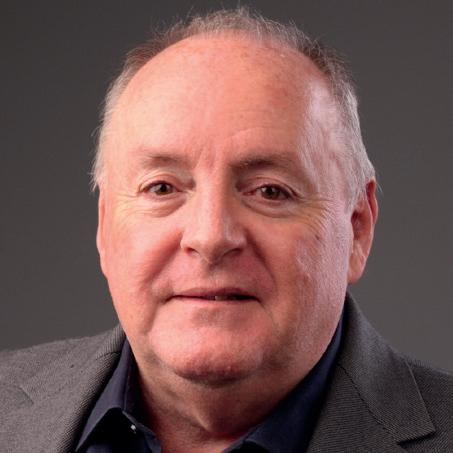
I am proud to introduce the SKAO’s 2024 Annual Report, which outlines the progress we’ve made toward delivering the most advanced radio telescopes in the world and enabling the scientific discoveries that will deepen humanity’s understanding of the Universe.
This has been a landmark year for the SKA Observatory, bringing us ever closer to realising one of the most ambitious scientific endeavours of our time. Across our sites in Australia and South Africa, and at our Headquarters in the United Kingdom, our team continues to work with determination, professionalism, and unity to turn the SKAO vision into reality.
Significant milestones have been achieved on both telescope arrays. At the SKALow site in Australia, we celebrated the installation of the first antennas, successful on-sky testing of the first complete station and then the first single station image being created. That led shortly afterwards to the detection of the first fringes using two stations of SKA-Low working as an interferometer. In South Africa, progress on the SKA-Mid array accelerated with the arrival and on-site assembly of the first
SKA-Mid dish. Meanwhile, South Africa’s MeerKAT telescope continues to cement its status as a best-in-class scientific instrument and the SKAMPI prototype dish, developed by the Max Planck Institute for Radio Astronomy (MPIfR), produced its first scientific results with a 2.5 GHz map of the radio sky. Our close partnerships with SARAO and the MPIfR are critical to supporting our delivery of SKA-Mid.
Over the course of the year, the SKAO Council met in China, the United Kingdom, and South Africa, where it approved key strategic, financial, and governance initiatives. These included extended cooperation agreements, new funding strategies, and organisational enhancements. Together, these decisions were instrumental in positioning the Observatory to navigate future challenges and ensure its long-term sustainability.
I would like to extend a warm welcome to Dr Filippo Maria Zerbi, who was elected as Chair of the SKAO Council at the November meeting. His deep expertise in science and policy will be invaluable as we continue shaping the Observatory’s future together. Filippo’s first meeting as Chair will be in March 2025.
At the same time, I want to express my deepest gratitude to Dr Catherine Cesarsky for her extraordinary service as the Council’s inaugural Chair over the past seven years. Since taking office as Chair of the SKA Organisation’s Board of Directors in 2017, Catherine has led the SKA through some of the most pivotal moments in our history, guiding the transition from design to construction, the signing and ratification of the SKAO Convention, and the formal establishment of the Observatory in 2021. Her leadership has been characterised by strategic clarity, international insight, and a deep passion for the project and science. From just seven founding
members, the Council has grown to twelve under her guidance. Her tireless advocacy and diplomatic skill have left a lasting legacy—one that continues to shape the Observatory today.
I hope this project stands as a source of pride for Catherine, and as a meaningful culmination of her distinguished career.
Reflecting on this year’s accomplishments, I continue to be inspired by the unwavering commitment of our teams and the continued support of our members. This Annual Report captures the progress we have made in 2024 and offers a glimpse into the extraordinary possibilities that lie ahead.
Together, we are shaping a future where science connects, inspires, and uplifts us all!
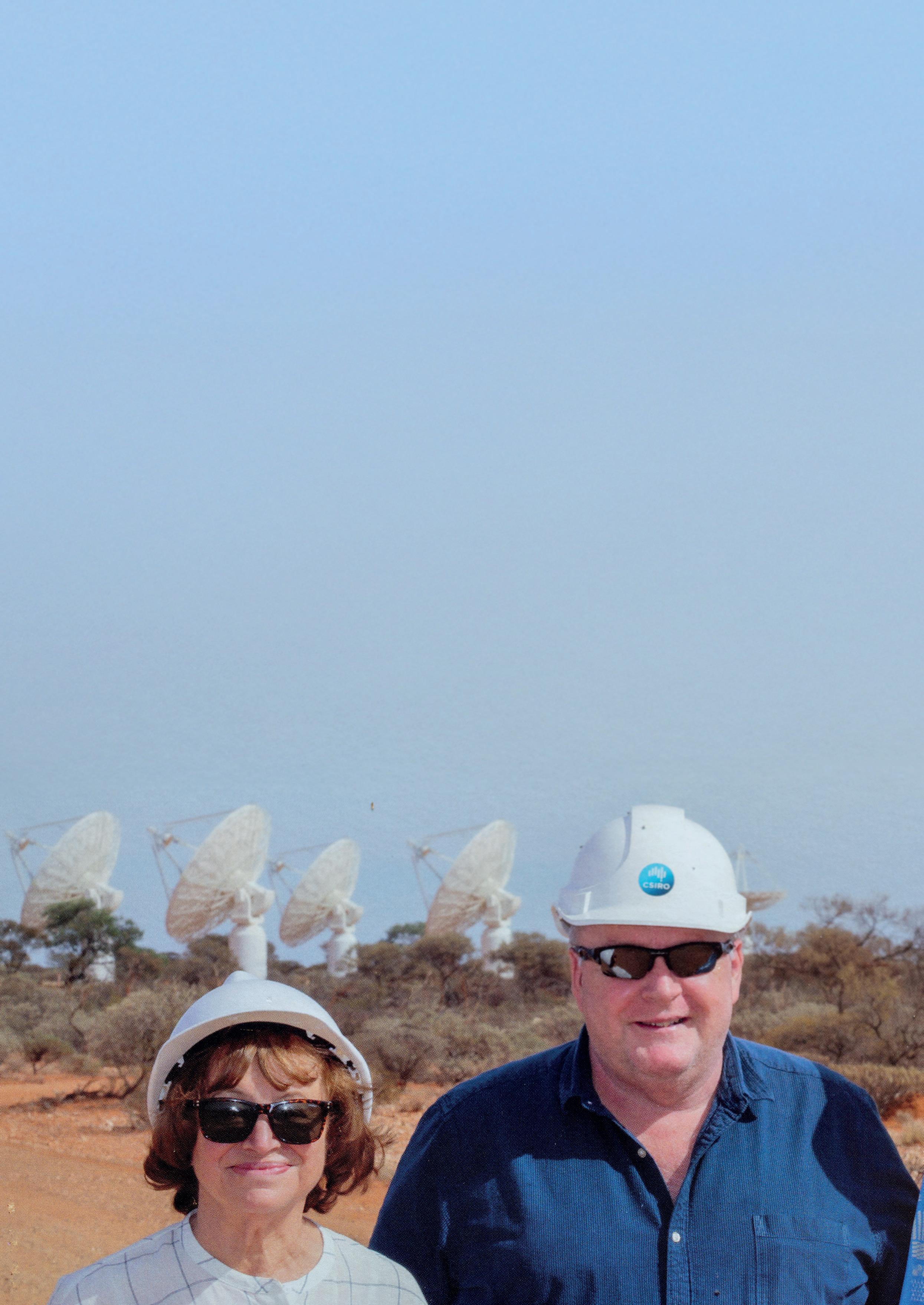
Professor Philip Diamond Director-General
Square Kilometre Array Observatory
Prof. Phil Diamond and Dr Catherine Cesarsky visiting the ASKAP telescope in Australia.
Our Highlights in 2024
First SKA-Mid dish arrives in South Africa
First SKA-Low antennas installed at SKA-Low site
The 12th SKAO Council meeting – Nanjing, China
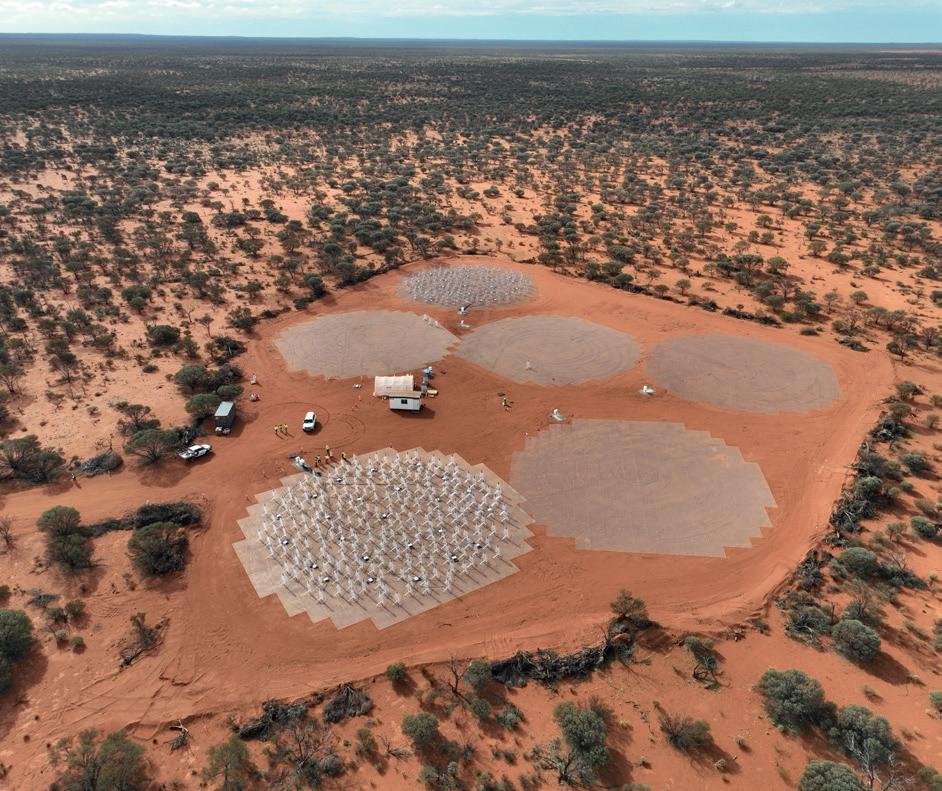
First two SKA-Low stations (S8-1 & S8-6) are tested on sky
Max Planck Institute for Radio Sstronomy’s SKA-Mid prototype dish in Karoo (SKAMPI) achieves first science with 2.5GHz map
SKA Regional Centre network (SRCNet) development project endorsed by Council
EU ambassadors visit the SKA-Mid site


Germany becomes the 12th member of the SKAO
The 14th SKAO Council meeting – Kimberley, South Africa
First interferometric fringes for SKALow released
SEAC visits the SKA-Low site
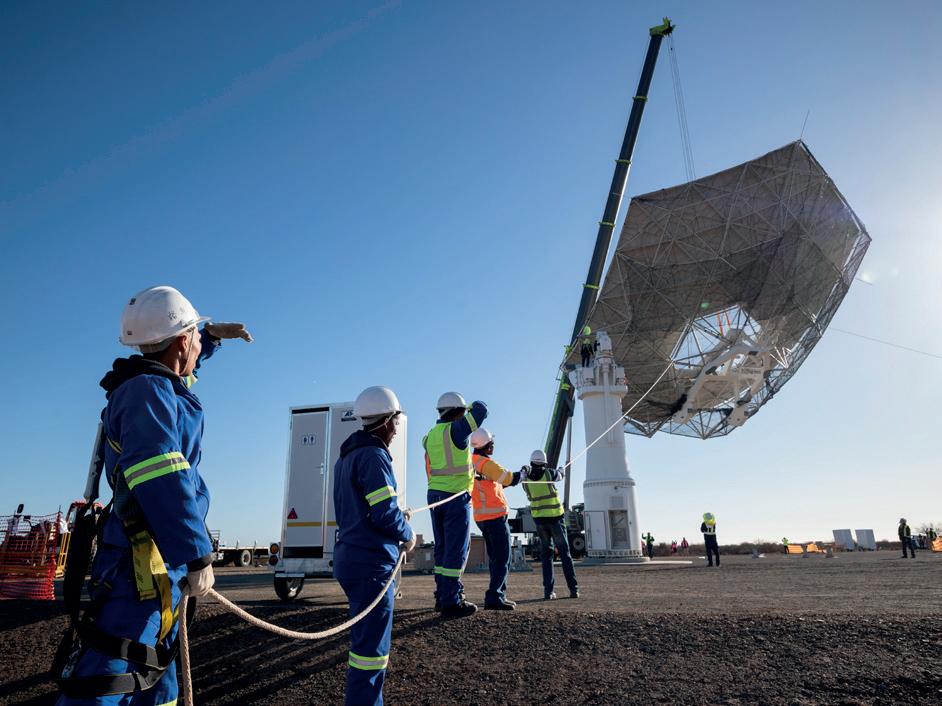
Canada becomes the 10th member of the SKAO
First pulsar observed by SKA-Low
SKA-Low AA0.5 handed over from construction to verification team
Major SKAO presence at the 2024 International Conference on Research Infrastructures (ICRI) in Brisbane, Australia
The first Information Security Awareness Week took place across the SKAO
First image released from one SKA-Low station
Major SKAO presence at the 32nd IAU General Assembly in Cape Town, South Africa
Assembly of the first SKA-Mid dish in South Africa
The 13th SKAO Council meeting – SKAO Headquarters, UK
India becomes the 11th member of the SKAO
3 Countries (Canada, India and Germany) became full members of the SKAO
OUR NUMBERS 512
Attendees registered for the four Planning Intervals (PI) meetings hosted by the SKAO Software and Computing ecosystem, with an average of 322 registrants per meeting
2 Memoranda of understanding (MoUs) signed between SKAO and African Astronomical Society and SARAO to establish an SKAO Africa Programme
5,500
SKAO mentions in online articles worldwide
10
Collaboration staff members recruited in South Africa, employed by South African Radio Astronomy Observatory (SARAO)
31
Collaboration staff members recruited in Australia, employed by CSIRO
2,000
Antennas deployed at the SKA-Low site
375
Participants spread across 55 teams and 18 countries took part in the third SKAO Science Data Challenge
35
Employees recruited by the SKAO across the UK, Australia and South Africa
Value of construction contracts allocated –developed and awarded by Procurement Services
8,971
New technical and organisational documents registered in the configuration management tool
Visitors to the SKAO website €41M
11
Supercomputer centres globally provided resources for Science Data Challenge #3b participants
156,000+
STRENGTHENING MEMBERSHIP, PARTNERSHIP, AND COOPERATION
Membership
Alongside the SKAO’s impressive progress towards implementation of the construction programme, the Observatory itself has undergone significant development. 2024 saw exceptional growth across the organisation, surpassed only by the progress seen in its founding year of 2021. This expansion reflects not only the growing international recognition of the SKAO’s scientific and strategic value, but also the growing commitment of countries to supporting its long-term mission. A major highlight of the year was the accession of three new countries – Canada, India and Germany – as members, further strengthening the SKAO’s global partnership.
These new members bring with them new perspectives, expertise and resources, which will contribute significantly to the SKAO’s governance, operations and scientific objectives.
A major highlight of the year was the accession of three new countries - Canada, India and Germany
Canada
In June, Canada joined the SKAO as its 10th member. Astronomers at Canadian institutions are involved in 12 of the 14 SKAO Science Working Groups, highlighting the community’s interest in a broad range of SKAO science. Canada is also home to the CHIME telescope, an SKA Pathfinder. Canada’s role in construction is critical, with the task, among others, of developing and integrating the correlator and beamformer for the SKA-Mid telescope in South Africa, which acts as the “brain” of the array, combining the signals eventually received by its 197 antennas.
The correlator-beamformer is an extremely complex component that is central to the telescope’s key functionalities. SKA-Mid’s 197 dishes create a large number of different “baselines” between individual dishes in the array. The correlator has to align and process the signals from each pair of dishes to allow the creation of images and other science products from the telescope.
Canada’s membership follows more than two decades of contributions to the SKA project dating back to its inception.
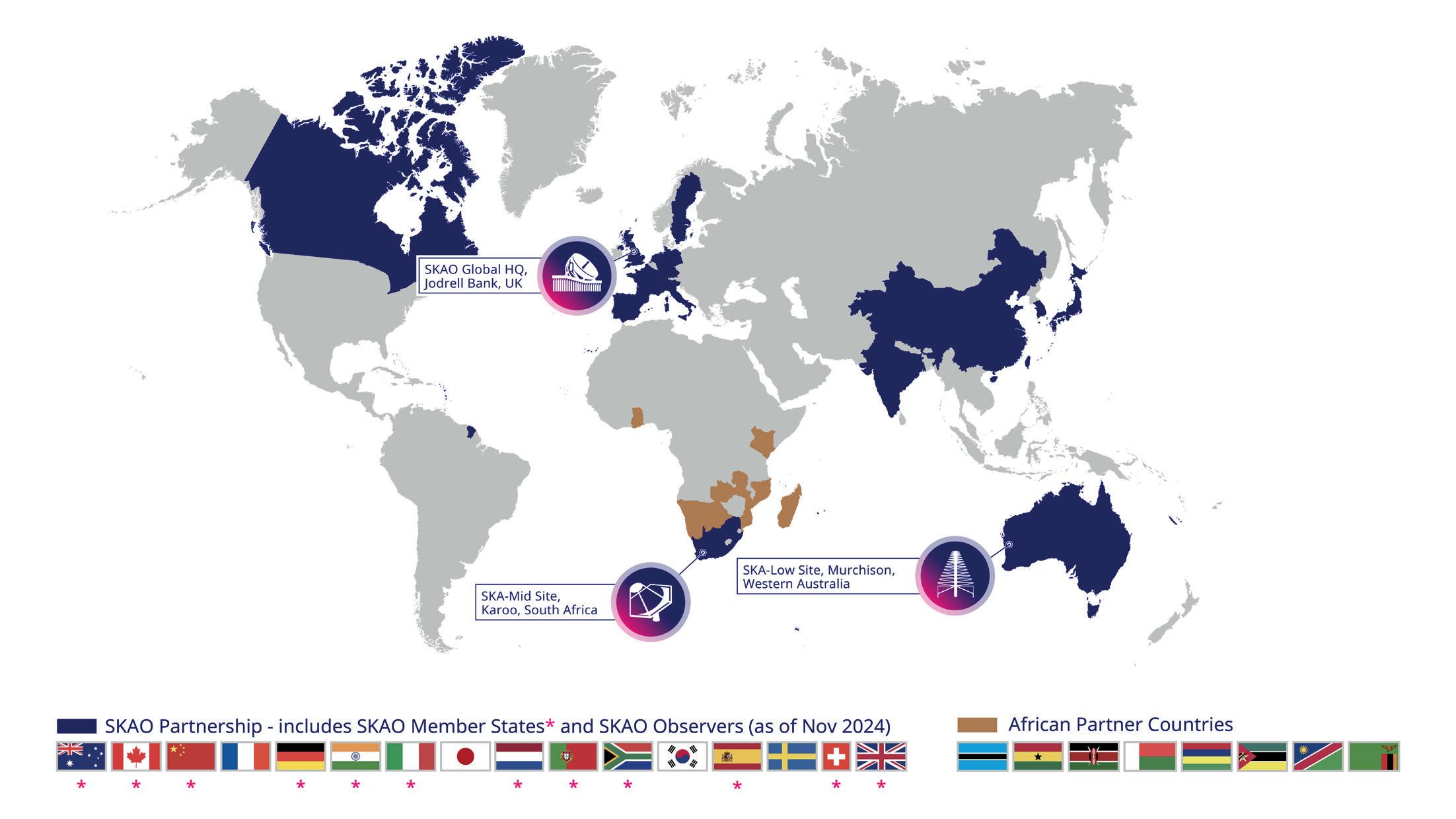
India
In July it was announced that India would become SKAO’s 11th member. India has contributed significantly to the design and development of the SKA telescopes, particularly in the software domain, having been involved in the SKA project since its earliest days. Full membership had long been anticipated with the Indian government, which was a party to the negotiation of the SKAO Convention nearly 10 years ago and participated in the preparatory activities that led to the creation of the Observatory in early 2021.
In 2022, the SKAO signed a Cooperation Arrangement with India’s National Centre for Radio Astrophysics (NCRA), acting on behalf of the Department of Atomic Energy (DAE), which enabled the science and technology communities and industry to remain involved while work towards membership progressed. This has enabled significant contributions from and benefits to the country’s software industry. India’s SKA community demonstrates a broad interest in the SKAO’s science cases and hosts one of the SKA Pathfinder facilities, the Giant Metrewave Radio Telescope (GMRT).
Germany
Germany became the third country to join the Observatory in 2024, becoming its 12th member. The announcement, made on 1 November, marked the culmination of decades of German involvement in the SKA project. Germany has a vibrant radio astronomy community, with researchers at German institutions represented in all 14 SKAO Science Working Groups (SWGs), and is home to the Effelsberg Telescope, an SKA Pathfinder. Germany contributed to six of the SKAO’s engineering design consortia, including substantial contributions to the SKA-Mid dish design and prototyping by the Max Planck Institute for Radio Astronomy with the SKAMPI telescope, which produced science images for the first time in 2024.
The Max Planck Society is also cofunding the extension of South Africa’s MeerKAT telescope, along with SARAO (which operates the telescope) and Italy’s National Institute for Astrophysics. The 14 MeerKAT+ dishes currently under construction will initially complement the MeerKAT’s 64 existing dishes, before being integrated into the SKA-Mid telescope in the coming years.
German institutions are represented in all 14 SKAO Science Working Groups
Strategic partnerships and cooperation
In 2024 the SKAO further deepened its international partnerships through significant diplomatic and institutional engagements in Africa, reinforcing its commitment to collaborative science and sustainable development on the continent. These efforts included highlevel visits by international diplomats to the SKA-Mid site, as well as the signing of strategic memoranda of understanding with leading African science organisations.
EU Ambassadors
A key event was the diplomatic visit to the SKA-Mid telescope in South Africa on 25 April, which included ambassadors and high commissioners from 17 European countries, the European Union and Australia. Ambassadors typically play a
key role in initiating and building relations with their respective home countries and can be crucial in setting up contacts with potential new member countries.
The diplomats saw first-hand the latest construction progress on SKA-Mid, which had accelerated in previous months. The telescope’s first dish was at an advanced state of assembly ready for the “big lift” of its reflector onto the pedestal. The diplomats visited the onsite data processing centre, learning about the data collected by MeerKAT’s antennas. They also met local artisans and students who are part of SARAO’s Robotics Schools Programme in the Karoo, which develops skills in science, technology, engineering and maths in schools near the SKA-Mid site.

EU ambassadors visit the SKA-Mid site to see the latest construction activity. Credit: SKAO/SARAO
MoU with African Astronomical Society and SARAO
A major opportunity for the SKAO was the IAU General Assembly meeting in Cape Town in August. The event proved an excellent chance for SKAO to present itself to the global science communities and to the African countries represented in Cape Town (more on this in the Communications section below in this report). A big success was the signing of memoranda of understanding with SARAO and with the African Astronomical Society (AfAS), both focused on collaborating with the SKAO on human capital development programmes.
The agreements, establishing cooperation for the next five years, were signed during the IAU General Assembly week and attracted positive attention for their future potential.
Under the memorandum of understanding (MoU) between the SKAO and
SARAO, the organisations will work together to provide opportunities for African students to study and train at leading universities in SKAO member countries, and provide opportunities for African students to participate in skills development interventions and programmes. This cooperation will focus on students from Botswana, Ghana, Kenya, Madagascar, Mauritius, Mozambique, Namibia and Zambia.
The memorandum of understanding between the SKAO and AfAS establishes an intention to work together to develop programmes on the African continent promoting radio astronomy, multi-wavelength and multi-messenger astronomy, and associated sciences, using these activities as a tool for social and economic development.
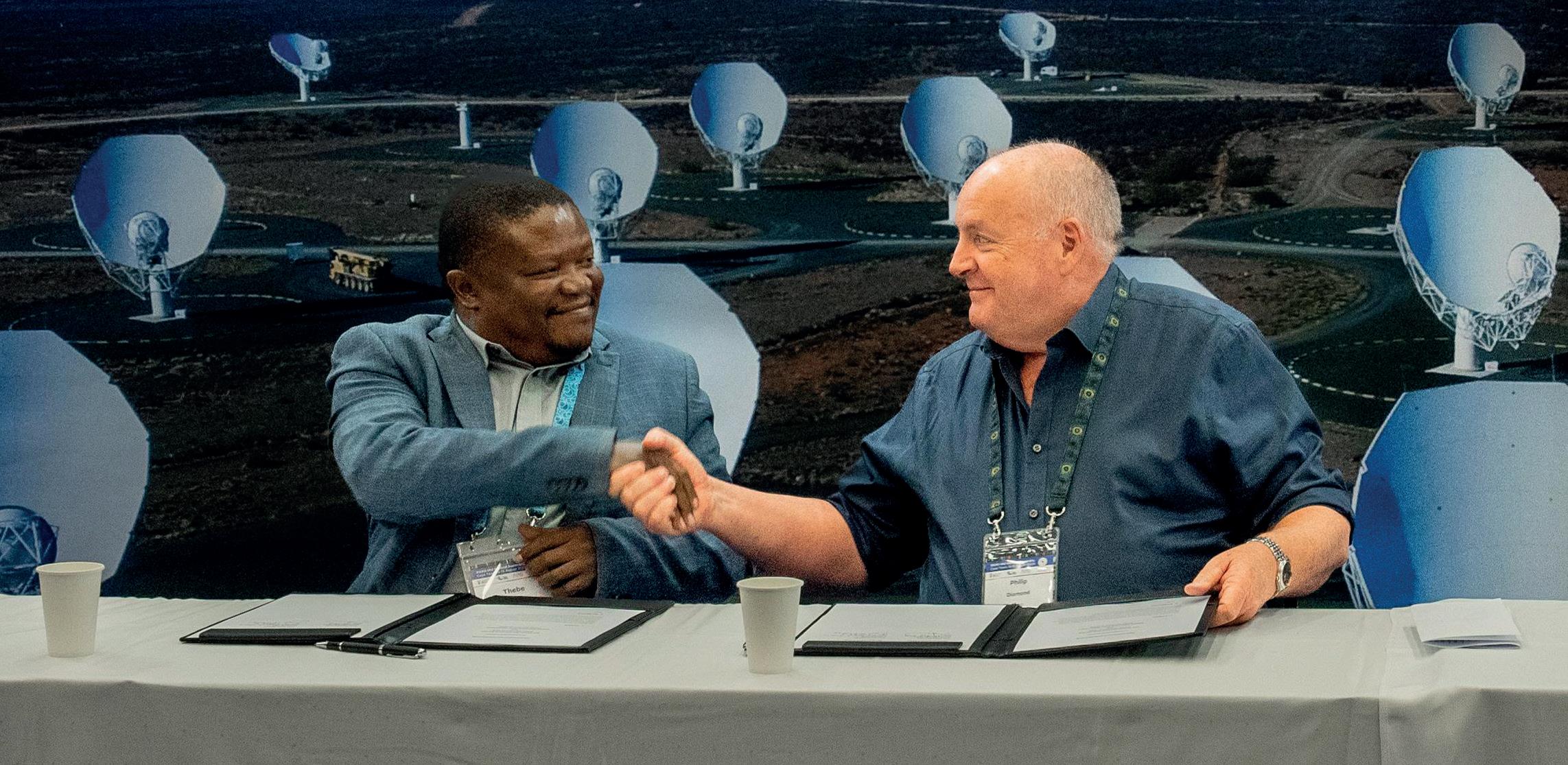
Prof. Phil Diamond, Director-General of the SKAO, and Prof. Thebe Rodney Medupe, President of AfAS, shaking hands. Credit: SKAO
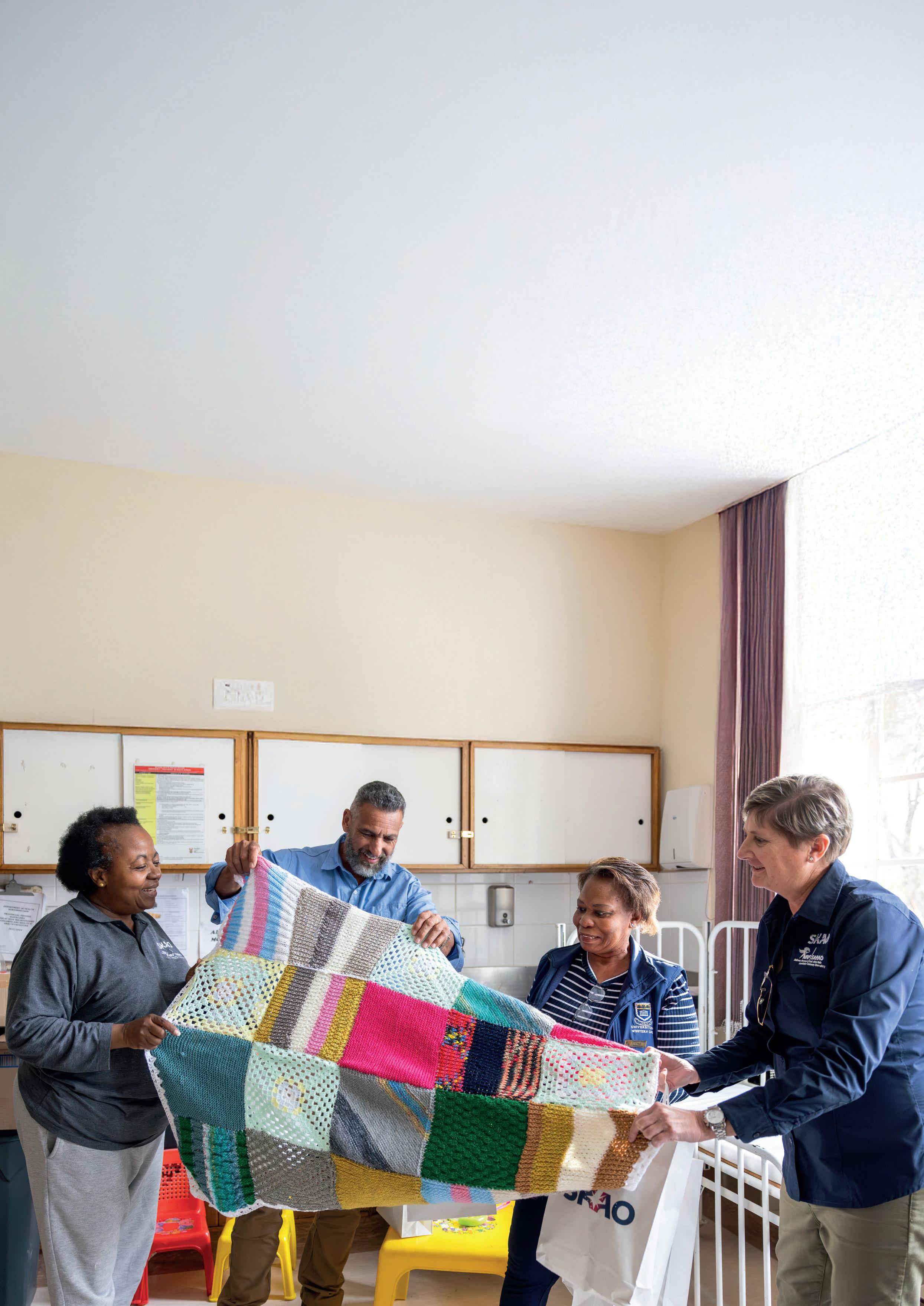
OUR COMMITMENT TO BENEFITTING SOCIETY
As a global leader in scientific infrastructure, the SKAO’s mandate extends beyond groundbreaking research to encompass responsible practices that promote sustainability, social equity, well-being, and education, closely aligned with the UN Sustainable Development Goals. In partnership with governments, academia, industry, and international organisations, the SKAO remains firmly committed to fostering inclusive, collaborative progress that benefits society as a whole and the communities where it operates.
Our Fragile Space exhibition – raising awareness on space sustainability
In November a photographic exhibition supported by the SKAO went on display at the United Nations Headquarters in New York, featuring for the first time the Indigenous communities that have traditionally lived on the lands on which the SKAO facilities are being built. The exhibition, Our Fragile Space, highlights the importance of space sustainability in the context of growing amounts of space debris, and the impact of satellite constellations on the night sky and astronomy.
With support from the SKAO and our collaboration partners SARAO
and CSIRO, renowned photographer Max Alexander travelled to the SKA telescope sites in South Africa and Australia in August 2024 to meet members of the San and Wajarri communities respectively.
The photographs are a powerful reminder of both communities’ ancestral ties to the night sky, and how a rapidly changing sky might be affecting their heritage.
It is believed to be the first time that the two communities have had visibility in a photographic exhibition at the United Nations.

Guests admire “Our Fragile Space”, an exhibition highlighting the vulnerability of the near-space environment, on its opening night at Lloyd’s in London. Credit: Jason Alden/Lloyd’s
Outreach and Education
The SKAO is deeply committed to sustainability through outreach, education and training initiatives that aim to inspire the next generation of scientists and engineers.
In 2024, more than 70 UK-based students participated in a three-day virtual work experience organised in partnership with Speakers for Schools. During this programme, students interacted with professionals in science, engineering, and business, participated in hands-on activities such as coding in Python, and learned about the Universe through guided sky tours and quizzes. Feedback was overwhelmingly positive, with over 90% of students expressing an interest in pursuing science or engineering careers and increased confidence in achieving their career ambitions.
Similar initiatives took place across other SKAO locations. Two university students in Australia worked with the SKA-Low team on real observational tasks, including pulsar data analysis and radio interference research, gaining hands-on experience that integrated them fully into the SKAO community. These placements are part of CSIRO’s Undergraduate vacation studentship programme, which helps nurture future Science, Technology, Engineering and Mathematics (STEM) leaders.
In South Africa, as part of the International Astronomical Union General Assembly (IAU GA) (more on this in the Communications section of this report), the SKAO captivated students and the public with live demonstrations of its Table-Top Radio Telescope (TTRT). The TTRT, capable of detecting galactic neutral hydrogen and producing real-time observations of the Milky Way in under 30 seconds, featured in sessions across the Western Cape, including universities and schools, attracting hundreds of students. Additional outreach at the Cape Town International Convention Centre offered high school students, including those from Carnarvon High School near the SKA-Mid site, an engaging introduction to radio astronomy. The initiative not only fostered enthusiasm for STEM among younger audiences but also positioned the SKAO as a tangible and inspiring career destination for older students in physics, astronomy and engineering.
Feedback of the virtual work experience was overwhelmingly positive, with over 90% of students expressing an interest in pursuing science or engineering careers
Investing in early learners in the area of the SKA-Mid telescope
In Carnarvon and surrounding communities close to the SKA-Mid telescope site, the SKAO and the South African Radio Astronomy Observatory (SARAO) are jointly investing in early childhood development centres. This includes training educators in the Montessori method of hands-on learning and real-world skills development, as well
as furnishing centres with furniture and equipment, the goal being to enhance the knowledge and skills of the educators to improve the quality of education provided to the pupils. The programme complements existing initiatives supporting the local education system through bursaries, teacher training, and work experience programmes.
Engaging and training the next generation of radio astronomers
The SKAO has maintained active engagement with the scientific community, including co-organising a radio astronomy school with an SKA focus in Geraldton. This was, for the first time, run jointly by the SKAO, CSIRO and the International Centre for Radio Astronomy Research (ICRAR). The school is aimed at PhD students and plays a pivotal
role in training the next generation of radio astronomers, with 131 people attending in person and another 102 online, spanning a total of 21 countries. The team have also taken on supervision of summer vacation students, covering research areas of relevance to SKALow, including tracking satellites and understanding the ionosphere.
Shared Sky – Exhibition and roundtable event
In 2024, SKAO participated in a public engagement initiative organized by the City of Nice, Métropole Nice Côte d’Azur, and Université Côte d’Azur in France through the Science and Society Chair. This included a roundtable discussion at the Mediterranean University Centre, featuring an SKAO representatives and local astronomers, alongside the SKAO’s
Indigenous art astronomy exhibition Shared Sky. The event fostered dialogue between science and society by showcasing the cultural heritage of Indigenous artists from Australia and South Africa, whose works reflect their cosmologies and connection to the sky – echoing SKAO’s mission to unite humanity under a shared natural resource: the universe.
Local and Indigenous community
As part of the Observatory’s social licence to operate, the SKAO has contractual conditions in place in both telescope locations for large construction contracts (such as infrastructure installation) to ensure local community and Indigenous participation and enable the uplift of the local economy around the SKA telescope sites.
In South Africa, at the end 2024, 273 local community members from Carnarvon, VanWyksvlei, Williston and Brandvlei were employed by SKAO contractors Power Adenco and CETC54 to work on site. 22% of these community members are women and 62% youth (18-35 years old).
Eleven small, medium and micro Enterprises (SMMEs) from the four towns have been appointed by Power Adenco and CETC54 to deliver various infrastructure work packages and for dish structure construction. The SMMEs will be attending a six-month training programme through the
Power Adenco Joint Venture, commencing in January 2025. The programme focuses on managing human resources, regulatory compliance, accounting, on-site coaching and mentoring, tendering and site/ contractual administration. The SMMEs have 38 local community members employed within their companies.
Ten local community members from the four towns have passed their oneyear National Qualification Framework construction supervisory training and are now appointed by Power Adenco Joint Venture as construction supervisors on site.
To transport local community members from the towns to site every day, 16 local taxi providers have secured contracts to provide these services to the Power Adenco Joint Venture.
In Australia, the SKA-Low recruited its first team of Field Technicians in early February 2024, employed by CSIRO.
Initially, the team’s role was to assemble and install the Low antennas and associated cables and support systems for the array. This first team comprised 10 trainee technicians, seven of whom were Wajarri. They have subsequently attended a range of training courses through the Western Australian Technical and Further Education institute (TAFE), receiving specific qualifications in cable assembly and other skills. This not only provides a solid background for further employment with the project, but can create pathways for future education and employment opportunities. This team has subsequently installed around 1,500 antennas and associated systems. The team will be expanded in 2025 with further local recruitment.
In addition, the SKAO’s principal contractor (Ventia) for the infrastructure works (roads, tracks, building, power and fibre installation, as well as the operation of the 176-bed construction camp) has had an extensive Indigenous engagement process. Ventia formed a joint-venture with WEL (Wajarri Enterprises Limited) to operate the camp, which has produced further training opportunities in the hospitality domain.
Engagement of four Wajarri-owned Small to Medium Enterprises (SME’s) has also ensured that benefits continue to flow to the local Wajarri community.
Ventia has consistently met or exceeded 15-25% Indigenous staff working at any one time at the SKA-Low construction site on Wajarri Yamaji Country, – significantly surpassing typical Indigenous employment levels in large Western Australian projects.
In collaboration with CSIRO, the SKAO has also continued to engage with the local Wajarri community, including participating in educational programs and developing ongoing Wajarri art initiatives. These efforts include hosting students from Mullewa Senior High School and Pia Wadjarri Remote Community School, who have had the opportunity to assemble SKA-Low antennas alongside technicians on site.
Beyond the Wajarri community, the SKAO and Ventia have implemented a robust contractual engagement programme with regional SMEs, ensuring the project’s economic benefits extend throughout the wider community. Currently, the SKAO’s local supply chain includes approximately 80 firms from Geraldton and the surrounding region.
SKA-Low Field Technician places an SKA-Low antenna onto mesh at S8.
Credit: SKAO/Max Alexander
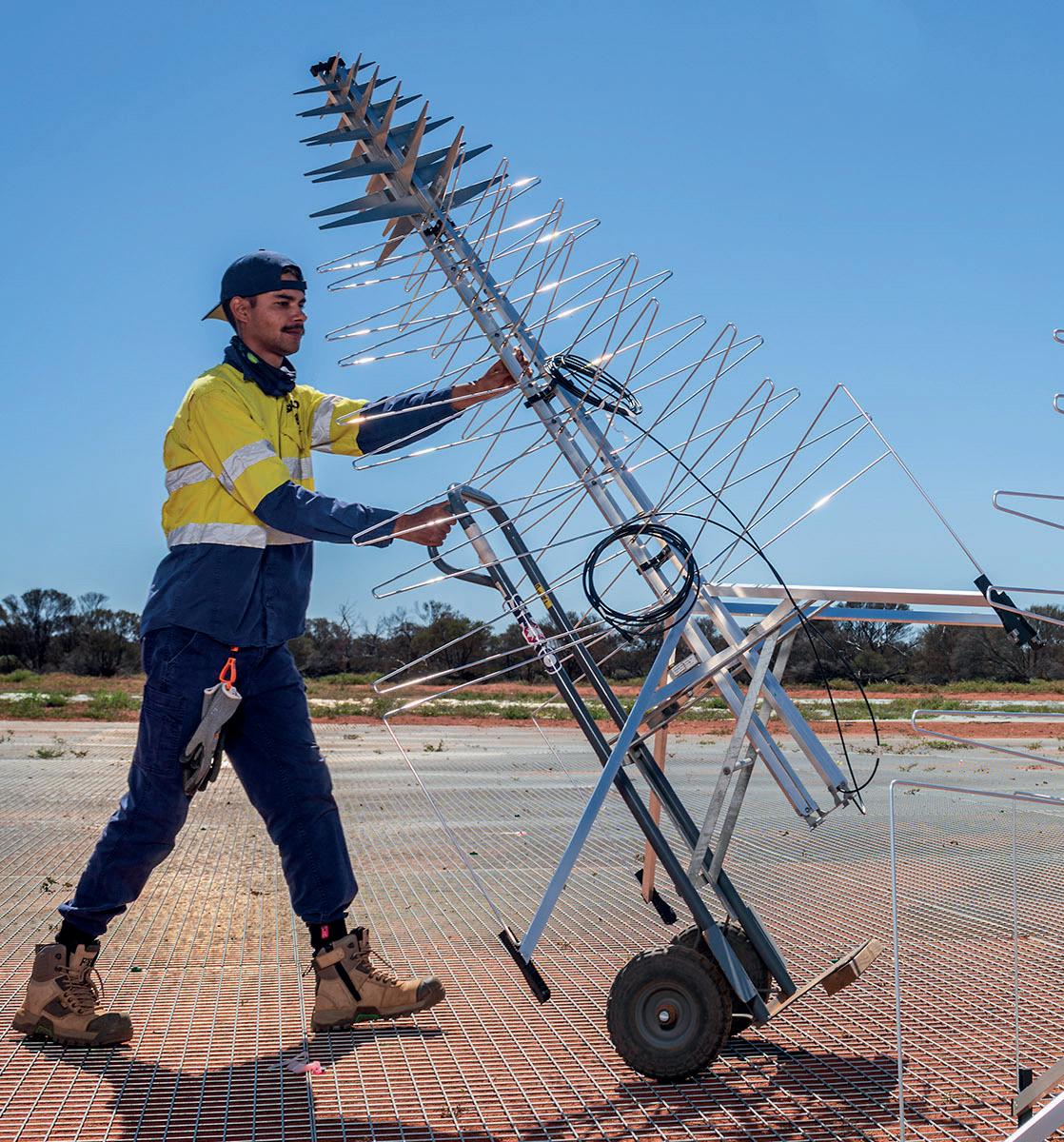
Cosmic Echoes
Exploring creativity, modern science and ancient
Through visual art, poetry and soundscapes, the SKAO’s Indigenous astronomy exhibition Cosmic Echoes explores how the traditional knowledge of Indigenous people living close to the SKA telescope sites resonates in the creativity of living artists. The exhibition reflects the richness of Indigenous Peoples’ understanding of the world, developed by observing the movements of the night sky since ancient times. The exhibition, developed in collaboration

wisdom
with the SARAO, CSIRO and the Wajarri Yamaji Aboriginal Corporation, showcases work by renowned and emerging Indigenous artists from regions surrounding SKA-Mid and SKA-Low. It enjoyed a warm reception at the IAU General Assembly in Cape Town where it premiered and, like its predecessor the Shared Sky exhibition, will begin an international tour after being displayed in various places in South Africa.
The launch of Cosmic Echoes – a Shared Sky Indigenous Art Exhibition, which opened on 5 August 2024 in Cape Town, during the IAU General Assembly. Credit: SKAO
SKAO –One global observatory, two telescopes, three host countries
Established as an Inter-Governmental Organisation in 2021, the SKAO is the result of the committed collaboration of its participating members and institutions. As codified in the SKAO Convention, this collaboration is undertaken in the first instance through the construction of two radio telescope facilities, which, along with the Observatory’s headquarters, operates across three host countries.
The structure of the organisation has been designed to evolve and support the full range of operational responsibilities spanning the establishment of the SKAO, continuing through the current construction phase and culminating with the start of telescope operations later this decade.
The SKAO Council is the governing body of the SKAO, which has appointed the director-general to act as the chief executive officer of the SKAO and its

legal representative. The directorgeneral is responsible to the SKAO Council for effective leadership of the Observatory and to effect that leadership he has established the organisational structure and appointed staff necessary for the achievement of the SKAO mission.
The Executive Leadership Team is the primary internal forum advising the director-general on strategy and decision making for the Observatory.
A copy of the SKA Observatory Convention
Organisational structure
The high-level organisational structure is made up of the Director-General’s office and six Directorates with specific areas of responsibility.
ORGANISATIONAL STRUCTURE
The SKAO’s high-level organisational structure consists of the director-general’s office and six directorates with specific areas of responsibility.
Director-General’s Office
Focused on all activities that support the strategy, legal, stakeholder relations, external and internal communications, and administration of the SKAO. It supports the director-general in all external activities as well as being responsible for governance activities that ensure the organisation is meeting its legal and strategic commitments. This delivery involves activities that require particularly close collaboration with the director-general.
Programmes
Responsible for leading the delivery of project construction and for ensuring the establishment of the necessary computing and software capabilities. The Programmes team works closely with the Science and Operations directorates as well as the broader science and engineering communities to ensure the design and build of the telescopes meet both the science needs and the practical requirements of effective telescope operations. In addition, Programmes coordinates with the host countries on the delivery of joint host agreement obligations as well as with the existing facilities on the construction sites.
Operations
Responsible for coordinating and managing Observatory operations across host sites to meet stakeholder needs and delivering the Observatory’s mission. Operations ensures the effective preparation and planning of
observing programmes, the operation and maintenance of observing instruments and the management of data through the SKA Regional Centres. Operations activities in the telescope host countries are led by the SKA-Low telescope director and SKA-Mid telescope director respectively.
Science
Leads the scientific direction of the Observatory, being the guardians of the delivery of science consistent with the SKAO’s mission. This includes development of the science strategy and working with the science community and stakeholders to lead the way in scientific discovery.
Human Resources
Responsible for all people-related practices at both a strategic and operational level. This includes defining and delivering a people strategy that meets the current and future needs of the SKAO where people are integral to the success of the organisation.
Finance
Responsible for leading all financial and commercial related matters at both a strategic and operational level. This includes the management of all financial policies and procedures, financial planning, budget, cash flow, accounts management, banking and treasury, and enterprise resource planning system. In addition, the Finance directorate has responsibility for procurement activity and insurance, and manages the general services of the SKAO, including logistics.
Assurance:

focuses internally, providing assurance to the director-general that all processes and procedures are aligned with quality, health, safety, security (HSS), spectrum management and other standards mandated by policy. The Assurance function is also responsible for the oversight of Observatory risk and spectrum policy and management.
The historic Lovell Telescope reflected in the window of SKAO Global HQ, UK. Credit: SKAO/Cassandra Cavallaro

The SKAO facilities
SKAO Global Headquarters
The SKAO Global Headquarters (HQ), located at Jodrell Bank in Cheshire, UK, serves as the central point for the Observatory’s functions. As the coordination hub for global activities, the HQ brings together a diverse team
of experts, including business enabling staff, scientists, engineers, telescope operations specialists, software specialists and project managers from around the world.
SKA-Mid at night.
Credit: SKAO/Max Alexander
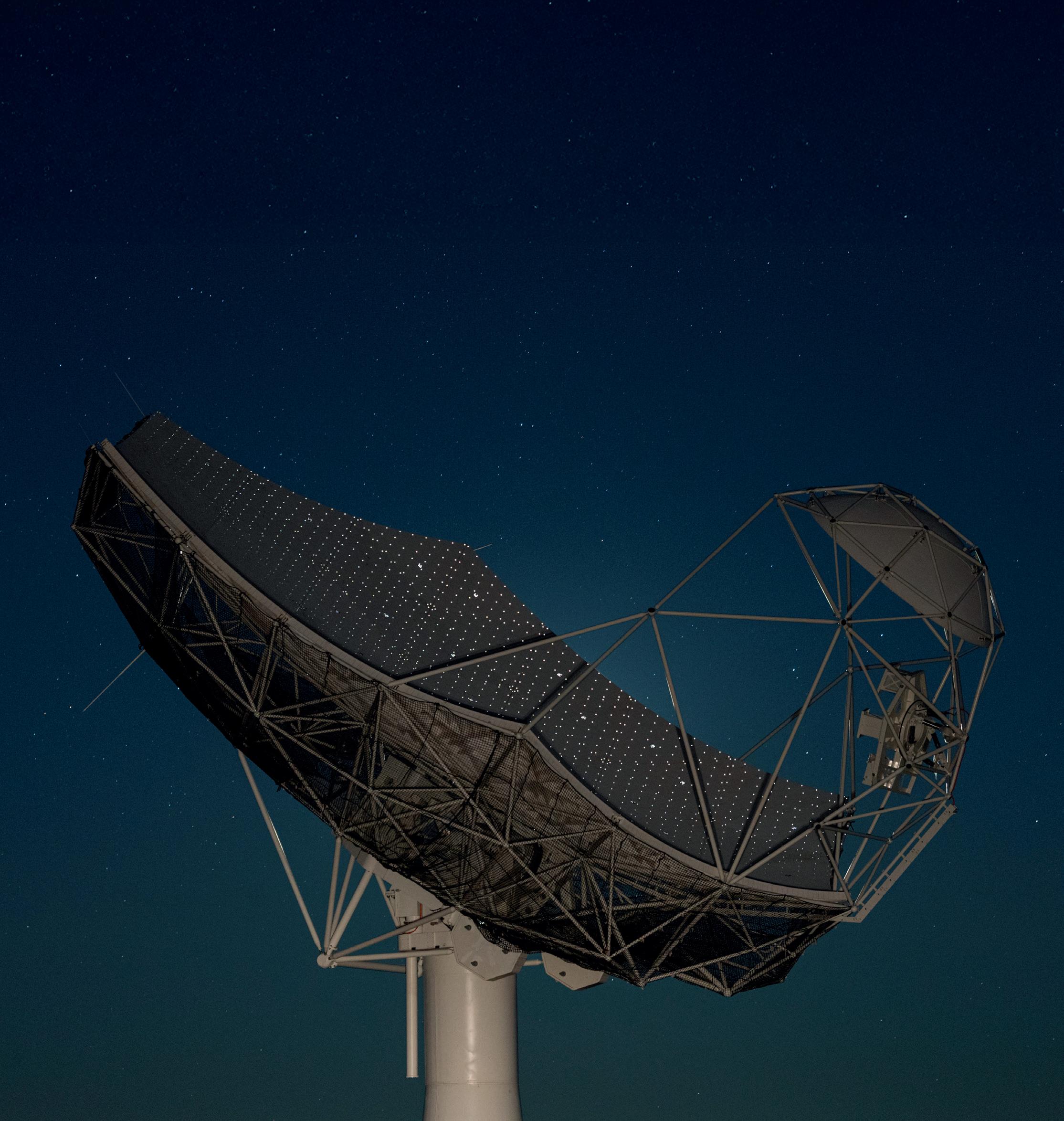
SKA-Mid
An array that will ultimately comprise 197 steerable dishes, incorporating the 64-dish MeerKAT telescope array and supporting infrastructure, including an Engineering Operations Centre (EOC) near the site at Klerefontein, and a Science Operations Centre (SOC) in Cape Town. In South Africa, the SKAO is partnering with the SARAO to build and operate the SKA-Mid telescope.
SKA-Low antennas.
Credit: SKAO

SKA-Low
An array that will ultimately comprise 512 stations, each equipped with 256 log-periodic antennas and associated signal processing, at Inyarrimanha Ilgari Bundara, the CSIRO Murchison Radio-astronomy Observatory. Telescope operations and data processing will be conducted from the SOC and the Pawsey Supercomputing Research Centre, both located in Perth. The EOC is located in Geraldton. In Australia, the SKAO is partnering with CSIRO, Australia’s national science agency, to build and operate the SKA-Low telescope.

SCIENCE
In 2024 the SKAO continued its active engagement with the global astronomical community, further strengthening collaborations and forging new partnerships worldwide. The SKAO plays a pivotal role in fostering dialogue and facilitating knowledge-sharing among scientists, researchers, and institutions involved in cutting-edge astronomical research. The focus of the SKAO remains on enhancing the systems and processes that will support the transformative scientific discoveries anticipated from the Observatory once it is fully operational.
A graphical composite of the SKA science drivers
SKA Science Working Groups (SWGs)
The SKA Science Working Groups (SWGs) offer expert input on topics related to user engagement, scientific capabilities, and the overall efficiency of the SKAO during its design, construction, and future operation. These groups are recognised as among the primary forum for engaging with the scientific community, and indeed for growing the global scientific community that will drive SKA science forwards. The 14 working groups include astronomers at all career stages, from graduate students and earlycareer scientists to established academic researchers. At the end of 2024 there were around 1,700 unique SWG members (some scientists are active in more than one SWG), up from around 1,300 at the end of 2023, representing 53 countries.
The SKAO Science team organised regular SWG meetings throughout 2024, offering essential updates and information to the scientific community about the SKAO’s status, such as telescope construction
progress, design refinements, planning for operations & science, information on Science Data Challenges, and SKA-related scientific meetings.
Input from the SWGs, conveyed through their chairs and the science team SWG liaisons, helps to ensure that the SKAO remains up-to-date on the priorities of the scientific community that will make use of the Observatory’s facilities.
During these first deliveries of SKA-Low equipment on site, many lessons were learned, enabling improvements to the design
SKAO science conferences and events
During the year the Science team continued to foster community engagement in SKA science through the co-organisation of a number of sciencefocused conferences and workshops.
These included a SETI workshop in Australia, Cosmology in the Alps in Switzerland, a special SKAO session at the annual AfAS conference in Morocco, a session titled New Telescopes and Major Upgrades to Existing Telescopes at the International Union of Radio Science (URSI) Atlantic Radio Science Meeting in Gran Canaria, a special SKAO session at the European Astronomical Society (EAS) annual meeting in Italy (the second largest annual professional astronomy meeting), the all-female line-up SKAO session at the IAU GA in Cape Town held on National Women’s Day in South Africa, and the annual Science at Low Frequencies (SALF) conference in China.
Science team members also gave numerous presentations on the SKA project in both member and non-member countries to both the general public and professional audiences, including at SKA national meetings (Sweden, France, UK) and the Cosmic Magnetism in the pre-SKA Era conference in Japan.
Later in the year, the chairs of the SWGs carried out a significant amount of work to support the future update of the SKAO Science Book (to be undertaken end 2025-early 2026) and to begin
preparations for the next major SKAO science meeting, which will take place in Görlitz, Germany, in June 2025. This meeting will focus on the science enabled by AA* and will be the first major SKAOfocused event since the fully virtual meeting held in 2021
Preparations have also begun for a major update to the SKA science case, last captured in 2015 in the Advancing Astrophysics with the SKA books (Advancing Astrophysics I) when the SWGs numbered about 200 members. In the intervening years, the SKAO’s telescope designs have reached maturity, construction and the first test observations are underway, and observations made using SKA precursor and pathfinder telescopes have shed new light on existing scientific conundrums and uncovered brand new phenomena, while the SKA science community has grown dramatically.
The refreshed SKA science case, Advancing Astrophysics II, will capture both updates to existing science cases and brand new ideas, demonstrating the exciting science outcomes that are enabled by the SKA design baseline (AA4). Approximately 350 expressions of interest for chapters were submitted by the community, which after review with the SWG chairs, resulted in a consolidated list of around 230 chapters expected to be received in late 2025.
Science Data Challenges (SDCs)
Work continued during 2024 on Science Data Challenge 3 (SDC3). After concluding the first part of the challenge (SDC3 foregrounds, or SDC3a) in October 2024 we launched the second part (SDC3 inference, or SDC3b), to run until the end of April 2025.
Participants are asked to infer the properties of the reionisation of the Universe starting from simulated data, namely power spectra of the 21 cm signal from the epoch of reionisation (EoR). No detection of this signal has yet been possible with existing radio

telescopes, so predicting it is affected by large uncertainties. To capture a variety of scenarios, three simulations were produced, using two independent EoR simulation codes.
The challenge aims to compare the conclusions that different teams draw from the same data, and whether or not they are consistent. Achieving agreement and consistency within the EoR community will be crucial to the credibility of any results claimed once this elusive signal is finally measured.
Graphic showing worldwide participation in the Science Data Challenge 3.

READINESS FOR THE OBSERVATORY’S OPERATIONAL PHASE
The SKAO sign at SKAO Global HQ in the UK, with the Lovell telescope and blue sky in the background.
Data Operations and SRC Network
With the endorsement by the SKAO Council of a new structure for the SKA Regional Centre (SRC) Network (SRCNet) project, 2024 saw the first significant pledges of development effort into the SRCNet project from the participating countries. The SRCNet is vital for the future operations of the SKAO as it will complete the end-to-end system that will deliver data products to the community, delivering a collaborative and federated platform for researchers to access SKA data and perform analyses on those data, leading to scientific publications.
The community of SRCNet software developers continues to grow with regular, quarterly planning intervals
throughout the year to plan and carry out the development work. In 2024 there was a focus on the first phase of the prototype network – SRCNet v0.1. Expressions of interest were sought and received from those countries with a desire to participate in this first phase of the SRCNet, with a meeting in Shanghai in March to discuss the process and work needed. Although only four participating nodes are needed to initiate v0.1 of SRCNet, it was gratifying to receive nine expressions of interest, clearly signalling the interest and engagement in this work across the countries participating in SKA. In 2025 we look forward to starting the testing campaigns for SRCNet v0.1.
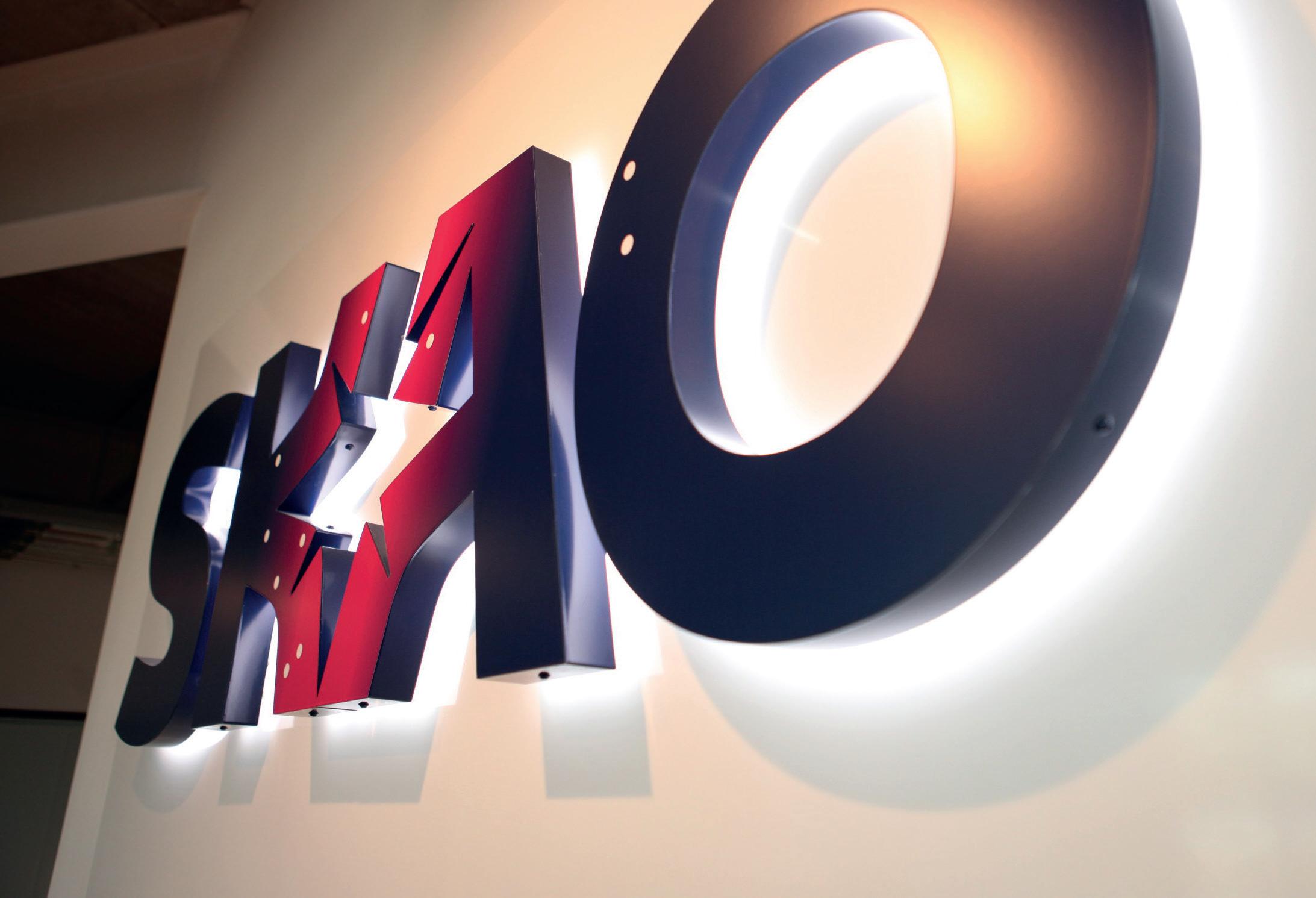
Engineering Operations and performance
The Common Source Database (CSDB) has been further enhanced to include draft maintenance procedures, maintenance plans, and detailed technical descriptions of SKA equipment and systems. In parallel, the team has developed data modules for integration into the Astute cloud-based learning platform, to support long-term operations. This platform will deliver compliance, health and safety, and performance-related training for the SKAO. These efforts support the broader development of technical documentation

and training systems that align with the CSDB framework, ensuring consistent and accessible knowledge transfer across the project and Operations personnel.
A comprehensive logistic support and cost analysis was also conducted to evaluate the costs and maintenance requirements of the SKA-Mid dish system. The findings provide valuable insights that will inform planning, budgeting, and lifecycle management strategies, contributing to the long-term operational sustainability of the SKA-Mid telescope.
The “big lift” of the main reflector onto the pedestal for a SKA-Mid dish on site in South Africa. Credit: SKAO

Science Operations
In 2024, Science Operations focused on delivering a major milestone: preparing the foundations for a simulation of what a “Year in the Life of the SKA Telescopes” might look like once the Observatory reaches steady-state operations. Although the final document is set to be published just ahead of the Science Meeting in June 2025, a significant amount of groundwork was carried out throughout 2024. This comprehensive modelling effort drew heavily on the increasingly sophisticated science plans developed by the community, as well as on our deepening understanding of the AA* telescope — both of which are now more robust and mature than ever before.
This work has been instrumental in our strategic planning, including telescope mode usage, Science Data Processor (SDP) demands, and opportunities
for commensal observing. It has also provided updated insights into the expected data rates flowing into the SRCNet as scientific milestones are reached. In parallel, the Science Operations team dedicated significant effort to developing tools for the user community. Highlights include the release of the first version of the SKA Sensitivity Calculator and a software package enabling users to simulate interferometric observations using either the full array of dishes or stations available during a given AA*, or a defined subset (a so-called subarray).
The SKAO also published documentation outlining anticipated operations with both subarrays and substations, and released draft observation templates to the community for information and feedback.
Computing and Software
Throughout 2024 the Computing and Software team has maintained a strong focus on delivering the critical software infrastructure required for the SKA telescopes. Recognising the complexity of the project and the need for seamless coordination across multiple operational domains, a dedicated team has been established specifically to lead the integration of key enterprise systems in the telescope Engineering Management System (EMS). This initiative is designed to streamline engineering operations and significantly enhance operational decision-making capabilities across the Observatory.
In 2024 the team achieved significant milestones in laying the groundwork for this system. The initial setup of the software development environment was completed successfully, providing a stable foundation for ongoing platform
development. Early work on the EMS has focused on creating a robust authentication framework to ensure secure access and user management, designing the overall system architecture to support scalability and flexibility, and developing a structured data model that organises and relates diverse types of operational information.
An alpha version of the EMS was tested to evaluate role definitions and responsibilities, providing valuable insights into system usability and helping to shape future iterations of the platform. This early testing phase has been instrumental in refining the system’s core functionality to better align with user needs and operational realities. Furthermore, the team integrated a maintenance calendar within the EMS data structure, enabling more effective scheduling and management of maintenance activities.

SKA-Low Lead Commissioning Scientist working. Photo credit: SKAO/Max Alexander.
PROGRAMMES AND OPERATIONS
Introduction
SKA-Low
During 2024, SKA-Low made great progress. Key achievements include significant infrastructure deployment, with the southern spiral arm completed and northern spiral arm construction underway.
With the first antennas arriving on site in March 2024, the Engineering Operations team started station deployment, leading to successful on-sky testing of the first complete station and then first primitive single station image being created. This enabled the detection of the first fringes using two stations of SKA-Low working as an interferometer, a significant technical milestone showing the endto-end telescope working, and finally the handover of four stations with their supporting software comprising AA0.5 to the Commissioning team in December.
These achievements were made possible through a rapid programme of recruitment, onboarding, and training that significantly expanded the team, and was carried out in collaboration with CSIRO, who we are collaborating with
in Australia to build and operate SKALow. As the team expanded, additional space was required, leading to the leasing of a new building in Geraldton to complement the existing interim EOC. Additionally, a new floor was added to the building housing the interim Science Operations Centre, which now includes a dedicated telescope operations room.
The project has completed nearly all major procurements, with only Infra 5 - Site Monitoring, Cables & Sundries for the Signal Processing System (SPS), and Tile Processing Module (TPM, in kind) contracts remaining. The project has also addressed challenges through Engineering Change Proposals including camp extensions, Power and Signal Distribution (PaSD) mitigation, and rock mitigation.
The project maintains 8.5 months of schedule contingency, with the biggest risks identified as PaSD design/ production, Central Processing Facility (CPF) delivery, and CPF fit out. The revised deployment schedule remains tight with key milestones with AA0.5 completion targeted for the end of Q2 2025, AA1.0 station build for Q3 2025, and AA2.0 station build for Q4 2025. The project aims to begin AA2.0 integration in Q1 2026.
In 2024, the SKA-Low site had the pleasure of welcoming a diverse group of visitors, including members of the Perth consular corps, the SKA Science and Engineering Advisory Committee (SEAC), the CSIRO Board, Wajarri school students, and Australia’s first woman astronaut. A standout moment was the SEAC meeting, which featured a visit to Geraldton and the SKA-Low site, followed by a productive session at the Pawsey Supercomputing Research Centre.
◗ Design and production
During 2024 the SKAO engineering office went through 14 significant design reviews across the many contracts that are delivering subsystems for the SKALow telescope. While some design work continued throughout the year, the bulk concluded at the end of 2024 with the production readiness review of the SKALow antenna, the new proposed design for the PaSD system and the delivery of the first part of the SKA-Low correlator. The production rate of the Low antenna contractor increased throughout the year, and pre-production electronic hardware for the signal processing system was delivered.
During these first deliveries of SKA-Low equipment on site, many lessons were learned, enabling improvements to the design, packaging, and handling processes, and enabling changes to make the telescope easier to integrate.
The AIV team, in charge of the integration and testing of the telescope once installed on site, accelerated its activities during the second part of the year accepting four integrated stations and connecting them to the correlator, and running the SKAO software that controls and monitors the array. Preliminary tests started at the end of the year and will continue for the first half of 2025.
During these first deliveries of SKA-Low equipment on site, many lessons were learned, enabling improvements to the design
◗ Engineering Operations and performance
In 2024, the SKA-Low Engineering Operations team grew from five to 20 staff with the establishment of the first SKA-Low Maintenance and Deployment team, comprising 70% Wajarri People and 30% women. Starting in entry-level roles, this team developed into capable technicians through targeted training and field experience. By year end, members had achieved Basic Electronics certification, completed an open cabling course, and obtained a Certificate II qualification in Infrastructure and Resource Preparation. This team led the installation of the first antenna in March and completed the first station in April.
By November, four stations had been constructed, verified, and
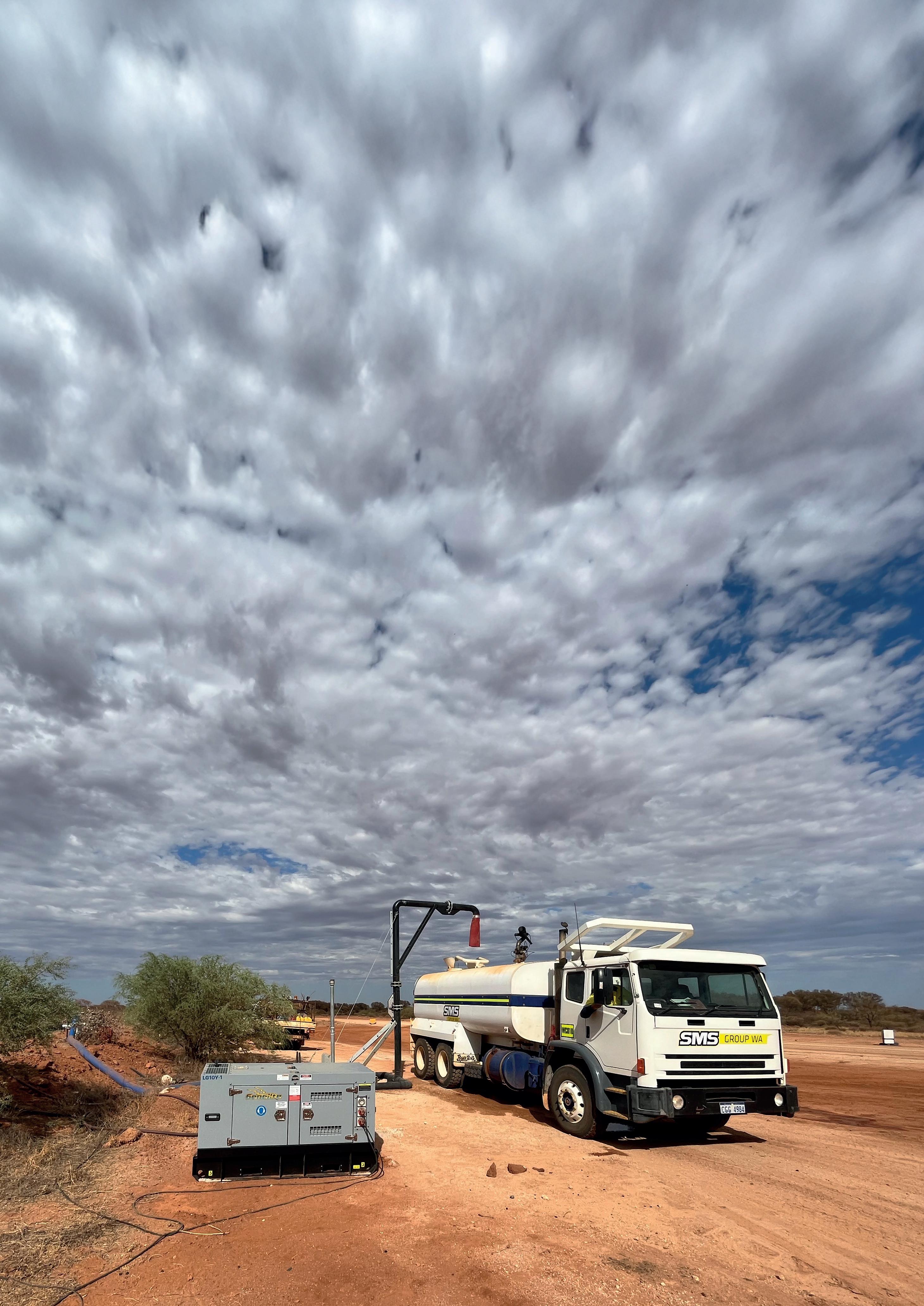
handed over to AIV with complete documentation and configuration data, and having passed functional tests. Feedback from these activities contributed to design improvements that will support long-term reliability and maintainability.
These milestones were supported by a critical set of essential activities, including establishing a significant logistics programme with tooling and storage facilities, in-country freight processes, and tracked inventory.
The team also set up fundamental systems to capture the baseline as-built station configuration, and coordinate work orders for corrective maintenance, capabilities that will be vital as the telescope infrastructure expands.
◗ Science operations
Science Operations successfully concluded the operations of the pre-construction Array Assembly Verification System 3 (AAVS3) in 2024 and, towards the end of the year, began operating stations that will form part of AA0.5, in close collaboration with the Commissioning team. Together, these teams initiated a programme of defined, regular observations carried out by theScience Operations team to build operational experience. This initiative was further enhanced by the inaugural group of operators visiting the Low Frequency Array (LOFAR) operations team at ASTRON, facilitating valuable knowledge exchange and the sharing of best practices. Looking ahead, the team has begun planning for long-term operations, with the goal of adopting a global ‘follow-the-Sun’ model designed to avoid night shifts.
A particular highlight of 2024 was the visit from colleagues at SKAO Headquarters in the UK and from the South African team to Perth. This visit marked a busy and productive week centred around detailed planning for the “Year in the Life” simulation, which aims to model a full year of Observatory operations once steady state is reached. The collaborative sessions strengthened cross-site coordination and knowledge sharing, laying a strong foundation for future operations. The week concluded with an engaging site visit where all members of Science Operations had the opportunity to participate in handson antenna building, further deepening their understanding of the technical and operational challenges involved.
◗ Computing and Software
The start of observing with AA0.5 required most of the core software functionality, just not at the scale that we need for the full telescope. This brought an increased focus on the global teams developing the software for the telescope. There are over 150 contractors working on SKA Computing and Software from the UK, India, Australia, The Netherlands, South Africa, Italy, Portugal, China, Switzerland and France, plus a steadily increasing number of SKAO employees and collaboration staff. The main focus was on delivering the software needed for testing in the Integration and Test Facility and providing the core functionality for AA0.5. However, within the Science Data Processing teams, there has also been continual focus on what is needed for AA2 and beyond – where the SKA truly enters uncharted territory and becomes the largest radio telescope ever built. This brings unique scaling challenges that require long term investment to understand and overcome.
One of the major milestones was the installation, support and successful handover of the AA0.5 computing and networking infrastructure to AIV in July 2024. This was one of the first product handovers to kick-off formal AIV for AA0.5, and also demonstrated a working infrastructure into the Pawsey Supercomputing Research Centre. Once installed, data from the antennas flowed all the way to Pawsey, supporting the acquisition of first fringes in September. This was followed by the successful integration of the control software for AA0.5, which is core to the completion of AA0.5 integration.
A highlight for 2024 was the in-person meeting held in Perth for the LOW Agile Release Train (ART) teams for PI24 Planning in September. This was the first in-person meeting since the LOW ART was launched in December 2023 and saw a step-change in engagement with users that will be critical to delivery of AA2 and beyond.
Recruitment of the local team continued steadily throughout 2024, with the team growing to a total of 14 staff by the end of the year. To support this growth and raise
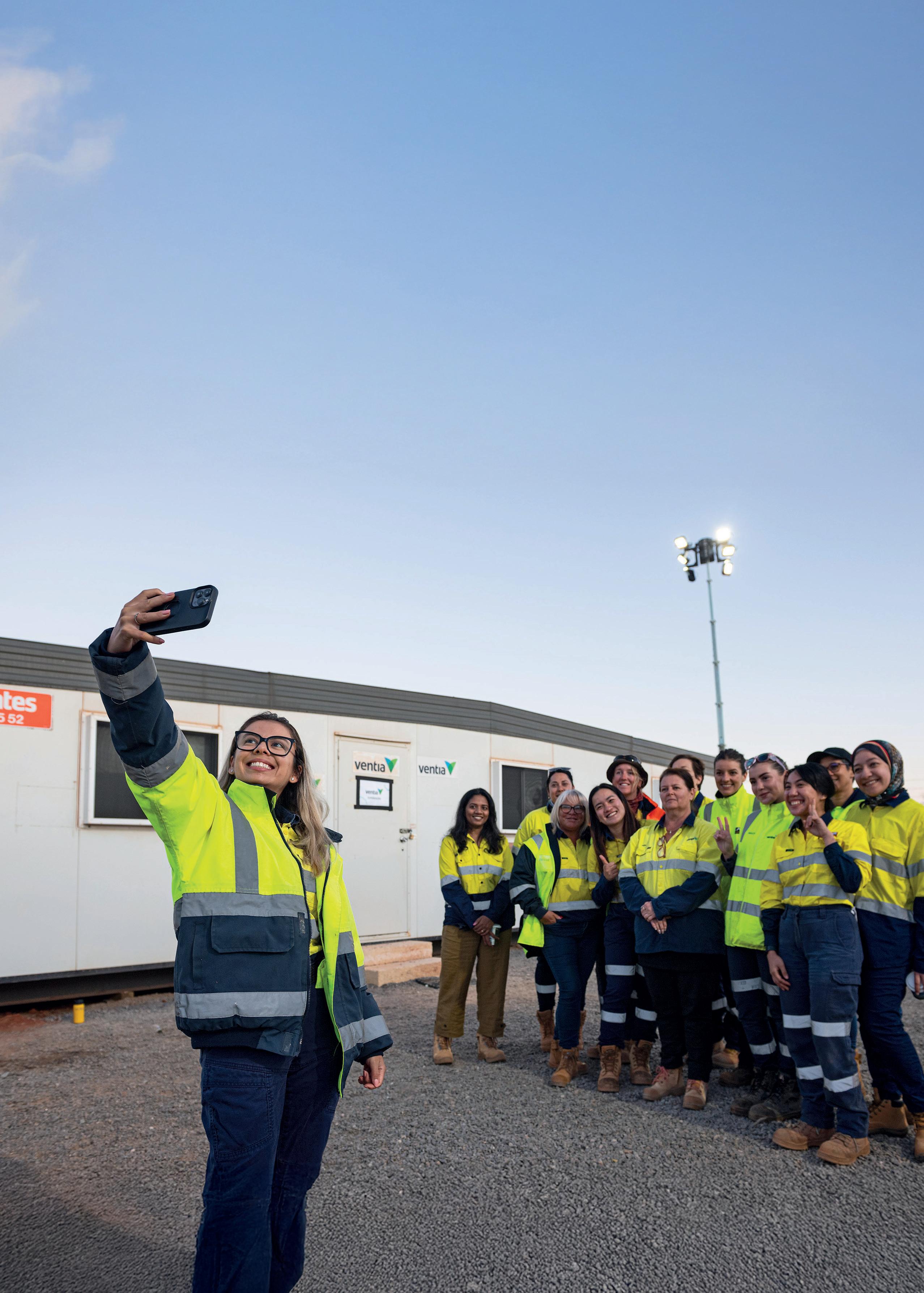
awareness of opportunities within the SKAO project, the software and computing team significantly increased their engagement in key industry and community events across Perth. A major highlight was their sponsorship and active participation in the Developer! Developer! Developer! (DDD) conference held in November 2024. This prominent technology event attracted over 1,400 attendees from across Western Australia, providing an excellent platform to showcase the exciting career prospects available with the SKA Observatory.
Teams from Ventia, Cape Dunstan and CSIRO at the site of the SKA-Low telescope. Credit: SKAO/Max Alexander
SKA-Mid
The first SKA-Mid dish structure from CETC54 arrived at Cape Town port in late January 2024.
Following delivery, the pedestal was installed on its foundation in March, and the first major “big lift” was successfully completed in July, marking a key milestone that reflected the combined efforts of many teams across the Observatory and partner organisations. Since then, six additional dish structures have been delivered from CETC54 to the site and are at various stages of construction, preparing for final assembly in 2025.
Alongside progress on the dish structures, all critical components needed to transform the AA0.5 dishes into fully functioning radio antennas – such as receivers, cryostats to maintain optimal cooling, and digitisers that convert the analogue signals captured by the dishes – have now been manufactured.
Most of the outstanding procurements for the SKA-Mid were completed, including the Mid Dish Subreflector manufacture awarded to ESOL of Spain (Value €8.7m) and the AA* Mid Dish Feed Indexer manufacture awarded to SAM of Italy – (Value € 5.5m).
A significant achievement was celebrated in March at the MID Integration Test Facility (ITF), marking the successful completion of “two receptor” signal chain
testing. This milestone represented a major de-risking step for the SKA-Mid signal chain, with teams successfully assembling a complete signal path from the digitiser through to the Science Data Processor. They generated a source signal within the ITF using a sky simulator, with system analysts confirming the integrity of the captured data. By November, testing had advanced to a four receptor system capable of 800 MHz correlated bandwidth, completing the ITF System Under Test milestone. This integrated system combined hardware from Australia, Spain, Sweden, Canada, and South Africa, alongside software contributions from the international developer network.
In June, SARAO obtained the 74th and final land servitude required for construction of the Carnarvon spiral arm, marking the conclusion of the SKA-Mid land acquisition programme.
Infrastructure deployment advanced significantly in 2024, marking a key phase in the Observatory’s development. Approximately 30% of core infrastructure has now been completed, laying a strong foundation for subsequent construction activities. Notable progress was also achieved in the spiral arms, particularly along the Brandvlei Spiral Arm, which reached 15% completion by year’s end.
Substantial preparation work has been carried out for the remaining infrastructure deployment, and overall more than 50% of the planned infrastructure work for the whole telescope was completed by end of 2024.

The “big lift” of the main reflector onto the pedestal for the first SKA-Mid production dish on site in South Africa. The lift took place on 4 July 2024, and was carried out by a team from the SKAO, South African Radio Astronomy Observatory (SARAO) and China’s CETC54. Credit: SKAO
◗ Design and production
Throughout 2024 the SKAO Engineering team conducted a rigorous series of design reviews (approximately 12) across the multiple contracts delivering critical subsystems for SKA-Mid. There was a surge in design activity driven by the large number of new contracts initiated, including key components such as the Mid Dish Subreflector and the timing system, which will provide the ultra-precise observatory clock essential for synchronizing operations.
Mass production of the feed systems commenced early in the year and progressed steadily, with the first integrated
subsystems now complete and ready for shipment to the site.
The AIV team made significant strides by integrating the main telescope components within the ITF in Cape Town. Here, they successfully tested the signal chains of four receivers integrated with the correlator, a crucial step to validate that the design meets performance requirements ahead of the full SKA array completion on site. Additionally, the facility is actively preparing the necessary software and team workflows to support the upcoming on-site integration phase, scheduled to begin in 2025.
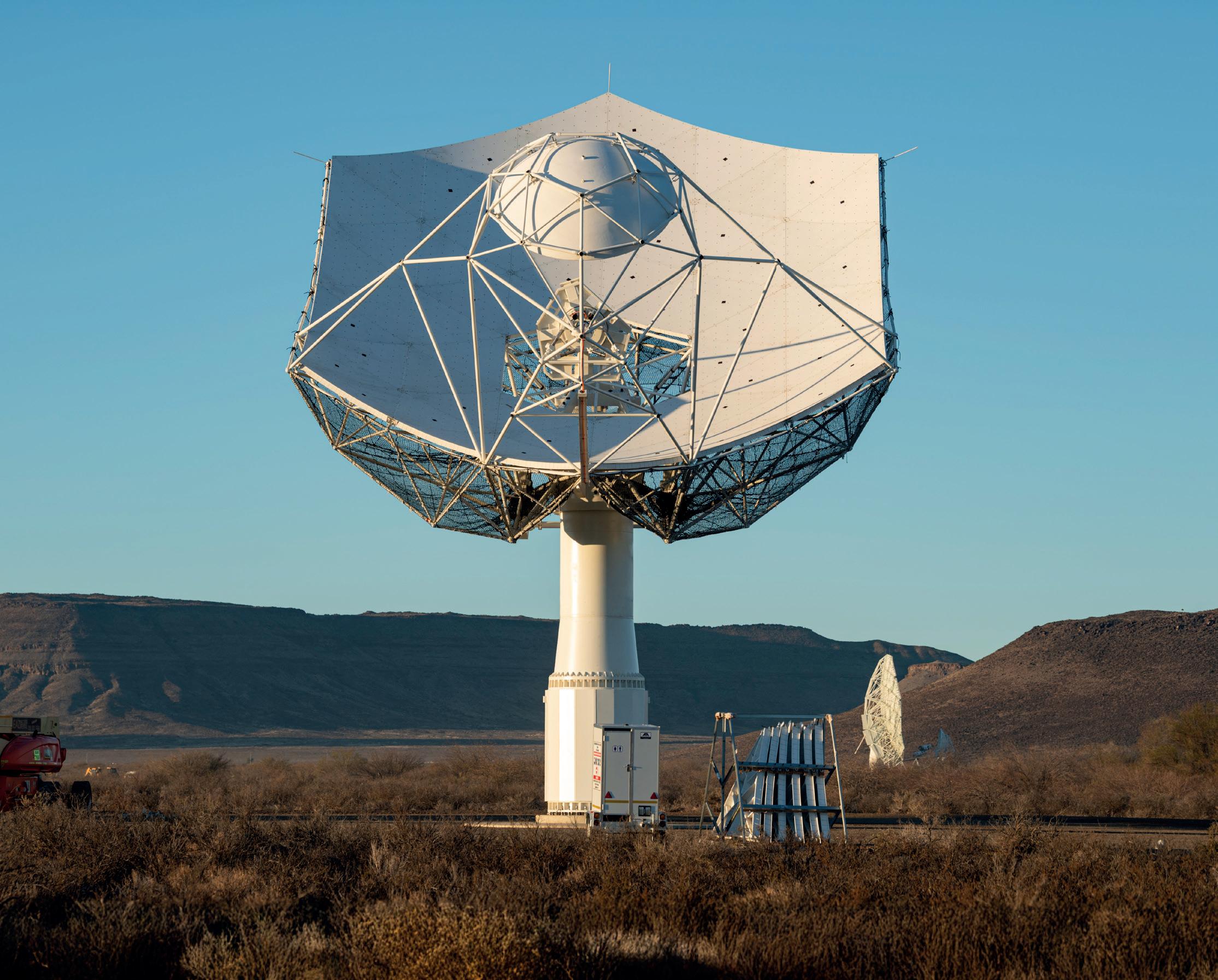
SKA-Mid at daytime. Credit: SKAO/Max Alexander
◗ Engineering Operations and performance
The year 2024 marked a pivotal step in strengthening the SKAO’s operational capacity in South Africa with the signing of the MeerKAT Technician Transition Plan. This agreement created a structured pathway for experienced SARAO technicians to transition into roles within the SKA-Mid maintenance team, leveraging their expertise to support the evolving needs of the Observatory. The integrated teams began working closely with contractors to develop detailed plans for operational maintenance, while also contributing to the identification of key resources and the delivery of targeted training programmes within the existing MeerKAT operations environment. This collaborative approach has laid the groundwork for a sustainable maintenance model as the Observatory moves toward full operation.
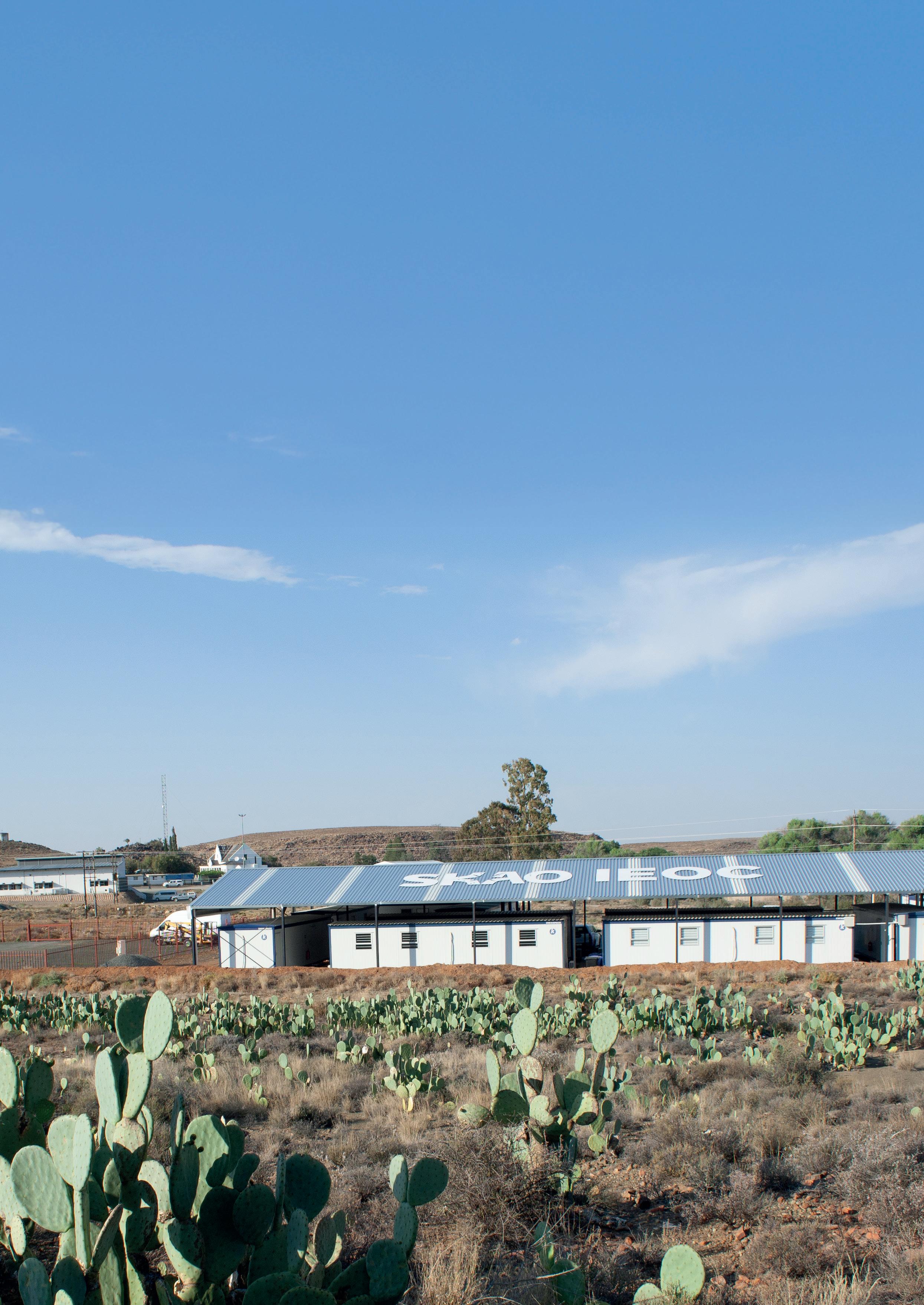
In parallel, the number of directly filled engineering operations posts doubled over the course of 2024, significantly enhancing the leadership team’s ability to support ongoing construction and commissioning activities within South Africa.
Several infrastructure developments further enabled these operational advancements. These included the expansion of the interim SOC office space in Cape Town, which now better supports the growing team of science and engineering professionals, and the enhancement of the interim EOC in Klerefontein, improving logistical and technical coordination. In addition, property was acquired in Carnarvon to provide accommodation for staff working on a rotating shift schedule at the SKAMid site.
Photo of the iEOC in Klerefontein, near the site where the radio telescope is being built in the Karoo.
Credit: SKAO/Lindsay Magnus
◗ Science operations
Throughout 2024 the Science Operations team actively pursued strategic initiatives to build capacity and enhance SKA-Mid’s operational readiness. A key focus was outreach and recruitment, highlighted by a major engagement at the International Astronomical Union General Assembly (IAU GA) in Cape Town, which offered a prominent platform to connect with the global astronomy community and showcase employment opportunities at the SKAO.
The Science Operations team provided continued support to MeerKAT, including preparation for future open-time observing calls. They also collaborated

closely with the Programmes and RFI (Radio Frequency Interference) teams to evaluate the potential impact of ongoing construction activities on MeerKAT’s science data quality, ensuring that SARAO’s scientific output remains robust and reliable during the build phase.
The year concluded on a celebratory note, marking two decades of astronomy collaboration between South Africa and the Netherlands. This milestone highlighted the deep and productive international partnerships that continue to shape the success of the SKA project and its broader scientific ecosystem.
Photo of telescope shed at the SKA-Mid site. Credit: SKAO/Max Alexander
◗ Computing and Software
During 2024, the SKA-Mid project has strategically shifted its efforts towards the ITF, with the objective of achieving a fully operational system (equivalent to four dishes) running within the ITF ahead of the availability of the actual AA0.5 dishes in 2025. This approach allows critical testing and validation of systems to proceed, ensuring readiness for full deployment. Collaboration with SARAO remains strong and central to progress, particularly in establishing the comprehensive network infrastructure connecting the Karoo site to Cape Town. In parallel, efforts are underway to design and implement an interim modular data centre at the iThemba Labs site, which will house SKA’s computing infrastructure during this phase.
There has been significant effort to develop the dish control system, a collaboration between SARAO and SKAO software developers in the UK and South Africa, and CETC54 in China (who are providing the low-level control system). This has also needed support from teams in India and the UK to develop the specific control procedures needed to align and test the dishes after they have been handed over. Delivery and control of the correlator, also need SKA-Mid specific
development and support from teams in Canada, Italy, Portugal and South Africa.
Recruitment of the local support team in South Africa has encountered challenges, resulting in a slower pace than anticipated. In response, the project is implementing a range of recruitment strategies aimed at accelerating hiring processes to build a robust team capable of supporting ongoing construction and operational activities.
Significant milestones in 2024 demonstrate tangible progress in integrating the SKA-Mid systems with existing infrastructure. These include the successful integration of network services between SARAO and SKAMid, granting SKA Mid’s offices in Cape Town direct access to the South African Research Network. Additionally, the interconnection of SARAO and SKA-Mid networks was achieved, enabling remote control of the SKA 063 dish through the MeerKAT network. Further advances were marked by the installation of a computing cluster and deployment of services for AA0.5 compute within the Karoo Data Reduction Area, strengthening the overall data processing capacity essential for telescope operations.

SPECTRUM MANAGEMENT AND RADIO FREQUENCY
The United Nations Committee for the Peaceful Uses of Outer Space (UN COPUOS)
The protection of the radio spectrum has three main thrusts for SKAO, with activities in support of all three in 2024.
Firstly, various terrestrial encroachments on the protected bands for radio astronomy continued, and analysis and representations were made in the respective working parties of the International Telecommunications Union (ITU).
Secondly, as a consequence of decisions made at the ITU World Radio Conference in 2023, an agenda item has been established for the possible international recognition of nationally established Radio Quiet Zones (RQZs) and possible mitigation of impacts from large satellite constellations.
A study of two RQZs has been initiated, one of which is the aggregate of the three South African Astronomy Advantage Areas which contain SKA-Mid. In 2024, the formal international regulatory process began, during which the SKAO submitted technical documents and liaison statements to the relevant working parties of the ITU. Efforts also focused on coordination with national and regional spectrum management authorities to explore all avenues for achieving international recognition and protection of these zones.
The third thrust involves supporting discussions within both the ITU and the United Nations Committee for the Peaceful Uses of Outer Space (UN COPUOS) of the various forms of interference now seen from orbiting space systems. The inclusion of this issue on the formal agenda of the COPUOS ensures that the impact on radio astronomy is recognised at the international level and acknowledged by governments. Parallel to the efforts in the regulatory fora, the team continued to engage directly with satellite constellation operators to explore technical mitigations that could complement regulatory outcomes. Bilateral meetings were held with American, European and Asian satellite operators in an effort to cover the major projects being currently launched or planned.
In particular, a test of “boresight avoidance” - a technique that mitigates satellite signals from interfering by steering transmissions away from the telescope’s location and interrupting transmissions while the satellite is crossing the telescope’s field of view - was conducted in collaboration with Starlink and the Onsala Space Observatory in Sweden. Preliminary results are promising, with further tests planned for 2025.
IAU CPS support
In 2024 the SKAO continued to play a key role as co-leader of the International Astronomical Union’s Centre for the Protection of the Dark and Quiet Sky from Satellite Constellation Interference (IAU CPS), in particular in the participation in international meetings such as the IAU General Assembly in Cape Town. Each Hub of the IAU CPS progressed their work plan focusing on observations of satellites and software development; raising awareness among satellite
operators through programmes such as “Astronomer Guides” - pairing astronomers with companies to build understanding and facilitate advice; responding to international consultations on space regulations regarding the protection of Dark and Quiet Skies; and conducting town hall meetings and webinars addressing the various stakeholders of the CPS. The number of individual members of the CPS has been increasing steadily, reaching 413 by November 2024.
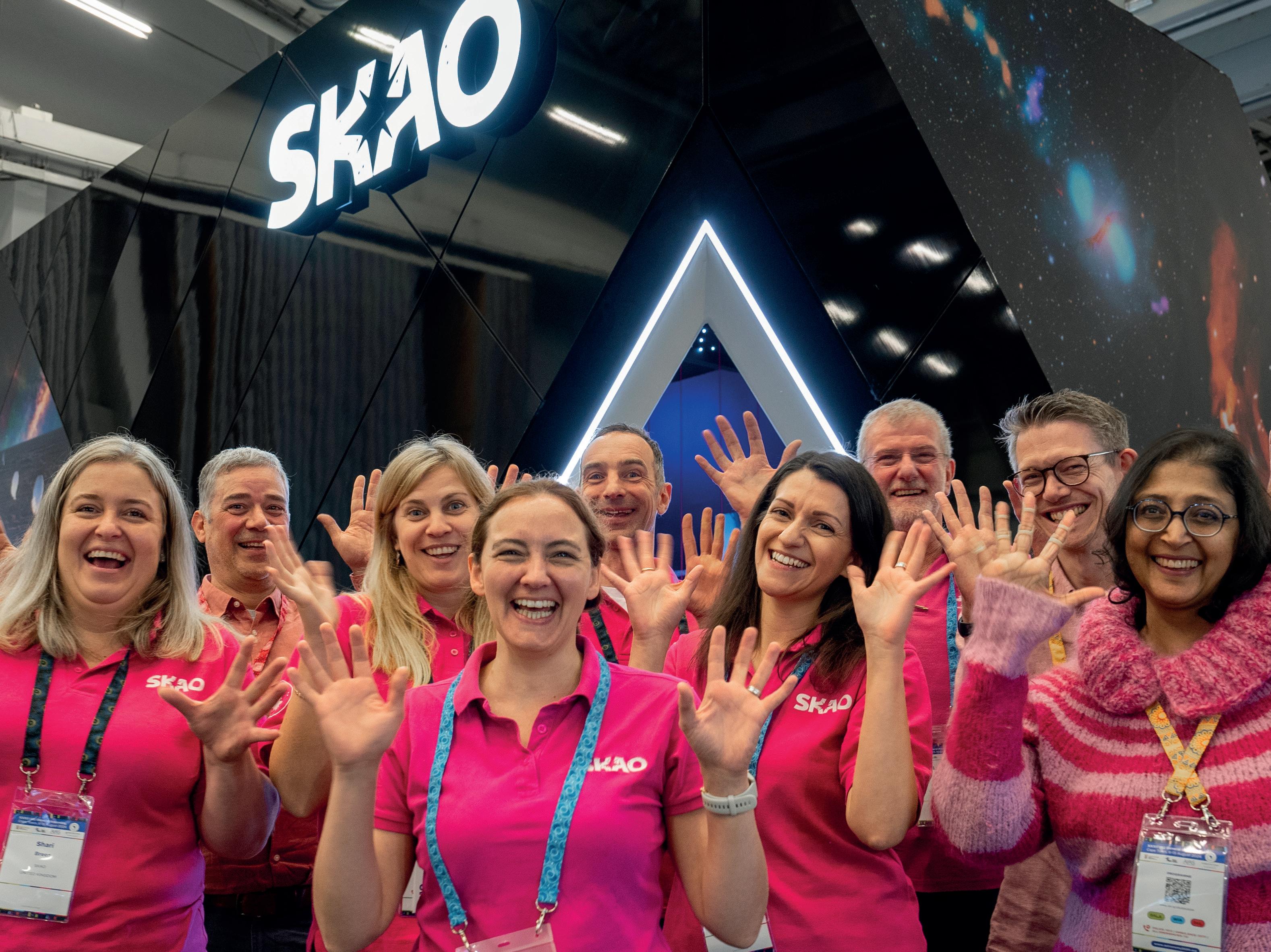
HUMAN RESOURCES
The SKAO prides itself on being a people-centric, values driven organisation, recognising the critical importance of being able to build and retain the best teams equipped with the capability to deliver the Observatory’s mission.
Team SKA in front of the SKAO pavilion in the IAU General-Assembly’s exhibitors’ space. Credit: SKAO
In line with SKAO’s HR Strategy, the focus for HR in 2024 was aligned to the following four key areas:
1. Attraction and recruitment
2. Capability development
3. Staff engagement
4. Delivering HR excellence
Progress within each of these areas is detailed below, reflecting a continued focus on delivery in line with the SKAO Employee Value Proposition (EVP).
This proposition sets out the SKAO’s commitment to staff across the full employee lifecycle and defines the standard against which the SKAO’s people practices are delivered.
Culture and ways of working sit at the heart of the EVP and so, in line with previous years, reinforcing and embedding the SKAO’s values in everything we do continued to be a focus in 2024. This supports the SKAO’s aim to be a great place to work for all staff, both for those staff employed by the SKAO and collaboration staff employed by SARAO or CSIRO working full time on the project.
Employee Value Proposition (EVP)
A culture that values Diversity and Inclusion, Creativity and Innovation, Excellence, Collaboration and Sustainability
Being an appealing and attractive employer for diverse, international talent
Enabling employees to reach their potential
Employees need catered for through competitive reward and benefits Supporting employability by providing exciting and challenging work within a world class international project
Enabling flexible working patterns that support diversity and enable a work life balance
Providing an environment, where staff are valued and respected at all levels
1. Attraction and Recruitment
Being an appealing and attractive employer for diverse international talent.
During 2024, 76 new starters were recruited, of whom 35 were employed by the SKAO and 41 employed as collaboration staff by CSIRO and SARAO as shown below.
SKAO AND COLLABORATION STAFF
*EXCLUDING CONTINGENT, SECONDEES, AGENCY WORKERS AND STAFF TRANSFERRING BETWEEN LOCATIONS
A total of 1,927 applicants of 83 different nationalities were screened for SKAO-employed positions in 2024. The location of all applicants is detailed below.
LOCATION OF APPLICANTS FOR SKAO JOBS
In attracting these applicants, there was a continued focus on building a diverse candidate pool, including a sustained and concerted effort to attract women for STEM based positions. The diversity of all applicants for SKAO employed roles is detailed below:
NUMBER OF APPLICANTS
In aiming to build a diverse workforce, other key actions during the year included advertising agreements put in place with STEM Women (a global network of women working in STEM) which is now used as a matter of course for all STEM roles. For SKAO-employed roles, this focus resulted in appointment offers to women for 54% of STEM roles recruited during 2024. In Australia, there was a significant increase in the diversity of applicants for Computing and Software roles following the SKAO’s participation in external events where the brand could be promoted. Hosting the IAU in South Africa enabled the SKAO to promote employment opportunities to a wide audience, and a
targeted attraction campaign resulted in the successful placement of numerous Science roles across all locations.
In addition to focusing on attracting diverse and high calibre candidates, the SKAO maintained robust hiring practices, supported by the launch of revised SKAO Recruitment Standards and, where applicable, hiring manager and selection panel training.
The recruits in 2024 bring the total project headcount at the end of the year to 324, including collaboration staff, contingency resources and secondees. This is an increase of 20% on resource levels at the end of 2023.
Headcount as at 31st December 2024
During 2024 29 SKAO and collaboration staff left the Observatory, corresponding to an overall turnover rate of 9.78% based on the average employee headcount across the year. The length of service of staff employed by the SKAO is shown below:
SKAO Employed Staff by Length of Service as at 31st December 2024
2. Capability Development
Enabling employees to reach their potential
Since the establishment of the SKAO in 2021, much has been done to build the foundations necessary to enable the development of capability in line with the needs of the Observatory. Previous work included the establishment of the Career Framework, Heads of Profession and SKAO Learning – an online elearning platform.
In 2024 much work was done to further develop the SKAO Learning curriculum. This included the launch of two contractor induction modules, IT Security and a Speak Up module. The latter module builds on previous Speak Up training in 2023 and is designed to support our Equality, Diversity and Inclusion goals.
During 2024 there were 1,855 staff and 69 contractor enrolments for e-learning modules.
The People Management Development Programme was also launched during 2024. This three-year programme seeks to provide people managers with the tools and skills required to support them in the delivery of their role as outlined in the SKAO, launched at the same time, and supported by learning modules within the SKAO Learning Platform.
The People Manager Development Programme focuses on developing knowledge and skills, supported by individual self-development aligned to personal line manager development priorities. The learning on the programme is provided through blended delivery with topics during 2024 focused on supporting effective performance management and understanding legal considerations regarding the management and employment of staff.
Learning on the programme is further supported by a Leadership 360 feedback tool, designed to aid insight against key line manager competencies and to help identify individual development priorities. The Leadership 360 feedback tool was launched in 2024 in a phased manner, with further phases planned for 2025.
In 2024 much work has been done to further develop the SKAO Learning online curriculum.
3. Staff Engagement
Creating an environment where staff feel valued and respected, their employment needs are met and where they are able to contribute to exciting and challenging work
The SKAO conducts a staff engagement survey, supported by staff focus group discussions, every two years. The last one was done in 2023, with the focus in 2024 being delivery against the resultant action plan. Among the many actions taken during the year to address feedback, key deliverables of note include:
◗ The further development of SKAO Learning, as shared in section 2 above, to further support training and development, including the development of the Speak Up learning module
◗ The launch of the People Management Development Programme
◗ An organisational development review of specific areas
◗ Development of supplementary materials on the SKAO Learning Platform to familiarise staff with the agreements of bilateral collaboration with CSIRO and SARAO
◗ A review of Career Level and salary positioning of roles within the Project Management job family, which resulted in a small number of roles being regraded, with salary adjusted accordingly
◗ A pilot of an Employee Benefits Statement, with a full launch due in 2025
In prioritising the above actions, the SKAO recognises that competitive remuneration and benefits are essential to the attraction, engagement and retention of staff.
Average gender pay gap as a percentage of men’s pay – 2024 All SKAO Employees
The gender pay gap shown in the above table is a reduction on the gender pay gap in 2023. This reduction reflects close analysis and the attention given to equal pay during recruitment, the 2024 pay review exercise, and the review and implementation of progressional promotion activity in the year.
In looking to provide competitive benefits, all staff can access an appropriate retirement plan based on location and employee type. The breakdown of SKAO-employed staff by retirement plan type is shown below. Breakdown
4. Delivering HR Excellence
To deliver fit for purpose HR practices that enables the SKAO to attract, retain, motivate and manage individuals in line with business need and the principles of HR excellence
Delivering HR excellence has been a strategic HR objective since the establishment of the Observatory, with a roadmap for establishing and building on the foundations of good people practice. During 2024 work continued according to this roadmap, with many of the actions described above relating to recruitment, capability development and staff engagement.
As the Observatory has continued to grow, an area of focus for 2024 has been the enhancement of HR service delivery, making further use of technology and tools such as automations to streamline processes and improve delivery against internal performance targets.
During the year the HR team handled over 1,300 JIRA tickets. The HR Team set clear service level agreements for both first response times and time to resolution. At the end of 2024 the success rate against the service level agreement was:
For all Jira tickets raised, employees are given the opportunity to provide feedback on how their ticket was supported. In 2024 the feedback provided an overall average satisfaction score of 4.9/5.0
Towards the end of the year the Cascade HR system was upgraded. This provided additional functionality to support the end of year performance process, succession planning and other more general processes related to continuous improvement.
At a local level, a new Staff Engagement Group (SEG) forum was launched in South Africa. This is not a forum for consultations or matters with regards to employment contracts. The purpose of the SEG is to encourage communication and create a structure through which SKAMid Personnel have the opportunity to contribute differing views and perspectives and to promote the development of a culture that values and supports all our people. SKA-Mid HR also coordinate a bimonthly ‘Coffee Conversations’ sessions to promote collaboration in the team and foster a positive culture in the workplace. We invite speakers to talk about their milestones, project deliverables and share information. There were a variety of speakers including SARAO heads of department and specialists, as well as external service providers.
In Australia, HR coordinated fortnightly knowledge sharing sessions covering topics from creative and innovative thinkers across SKA-Low in Science, Computing, Software, Engineering, Legal and HR who shared their ideas and knowledge with others in the team.
An SKA-Low “All Team Day” was held in November 2024, the first time all 80 team members were together in one place. Activities with themes of collaboration and dealing with change were held throughout the day and there was an afternoon of outdoor team-building activities for cross team networking.
SKAO Recognition and Awards
2024 was the second year the SKAO celebrated the Annual Recognition Awards. These awards highlight and celebrate the excellent work being done by SKAO colleagues in all our locations in line with the SKAO Values.
With these awards the SKAO recognised 18 colleagues who have demonstrated the five SKAO values, or shown outstanding leadership throughout the year. The
awards complement more frequent informal recognition of the excellent work being carried out across the Observatory every day, allowing us to celebrate the success of all members of our community.
In addition the awards celebrated 15 individuals who had achieved long service milestones of 10 years or more, 2024 being the inaugural year for recognising long service.
EQUALITY, DIVERSITY AND INCLUSION
The SKAO is dedicated to being an equal opportunity employer and upholding the principles of Equality, Diversity and Inclusion (EDI). It strives to foster a welcoming and inclusive workplace where everyone is valued, bias is eliminated and diversity is embraced.
This approach not only helps attract, retain, and nurture talent from a broad range of backgrounds but also enhances the organisation through varied perspectives and experiences. With a strong commitment to its core values, the SKAO has set an ambitious goal to become a leading example of EDI in the scientific community, particularly as an employer of choice for women in STEM.
The focus on EDI continued during 2024, The first EDI survey of the Observatory’s IGO era was conducted with the purpose of establishing a baseline against which progress can be measured. The EDI survey results were shared with staff and further feedback, insight and action planning was gathered through a series of staff focus groups.
Key areas of focus resulting from staff feedback are summarised below:
◗ Performance and capability: providing a focus on training and development, career progression and development plans.
◗ Dealing with issues at work: equipping line managers with the skills to create an environment where all staff feel comfortable raising issues with their line manager.
◗ Culture and ways of working: ensuring consistency in the application of policies that support diversity and inclusion, such as flexible working.
Notable EDI-related actions taken in the year include:
◗ Creation of SKAO values ambassadors roles to provide staff in all locations with an additional route by which to raise issues and concerns.
◗ Launch of the people Management Development Programme, seeking to equip line managers with the ability to build diverse and inclusive teams and create an environment where everyone can speak up, feeling valued for the different perspectives they bring.
◗ Launch of the SKAO Recruitment Standards, further enhancing the commitment to EDI through the recruitment process to ensure accessibility and inclusion of all candidates throughout the process and incorporating specific measures to continue to attract diverse applicants.
These actions support the nine priorities previously identified in the SKAO EDI Implementation Plan driven by the EDI Taskforce established in 2022. In fulfilling these actions, the aims of delivering gender balance, diversity that reflects member countries and equity of access to SKA activities, including science remain essential priorities.
With a strong commitment to its core values, the SKAO has set an ambitious goal to become a leading example of EDI
IAU General Assembly delegates were invited to attend a special, day-long event on Friday 9 August to hear the latest updates from the SKA Observatory with a line up of female speakers, coinciding with National Women’s Day in South Africa.

Women and girls in science
To mark the International Day of Women and Girls in Science, the SKAO hosted a special edition of its Speaker Series featuring SEAC Chair Prof. Naomi McClureGriffiths and Deputy Chair Prof. Kristine Spekkens. Their joint talk, Towards Equity, Diversity and Inclusion (EDI) in Astronomy: Australian and Canadian Perspectives, explored the challenges faced by women and under-represented groups in astronomy. They highlighted national EDI initiatives and future goals, sharing insights on career experiences, statistics on women’s attrition in postgraduate astronomy, and the critical need for affirmative action to close gender gaps – addressing issues such as telescope research allocation and peer review processes.
Building on this commitment, the SKAO has continued to advance gender diversity within STEM-related roles. At the DDD conference in Perth, Australia the SKALow booth attracted significant interest, resulting in numerous job registrations. The team further strengthened partnerships with diversity-focused organisations, including Women in Tech WA (WitWA) and, more recently, She
Codes, through mentorship programmes and masterclass lectures. These initiatives contributed to a substantial increase in the number of applicants and a notable improvement in gender diversity for positions advertised during the final quarter of 2024 in Australia.
Overall, the proportion of women employed by the Observatory and collaboration partners has marginally increased from 37.6% in 2023 to 37.7% in 2024. However there has been a rise in the proportion of women in STEM roles across the Observatory from 23.1% to 24.4%, including collaboration staff.
They highlighted national EDI initiatives and future goals, sharing insights on career experiences
Gender Diversity of all SKAO Staff, including collaboration staff
Gender Diversity by Job Family, including collaboration staff
The SKAO monitors diversity of staff by nationality. The below table shows the breakdown of staff by nationality.
Diversity by nationality of all SKAO Staff, including collaboration staff as at 31 December 2024
Age diversity is also measured, with the SKAO hiring and retaining staff of all ages to create an inclusive workplace. In 2024, the age profile remained similar to previous years, with the age group from 35 to 44 having the highest number of staff.
Gender and Age band of all SKAO Staff, including collaboration staff as at 31st December 2024
HEALTH, SAFETY AND SECURITY
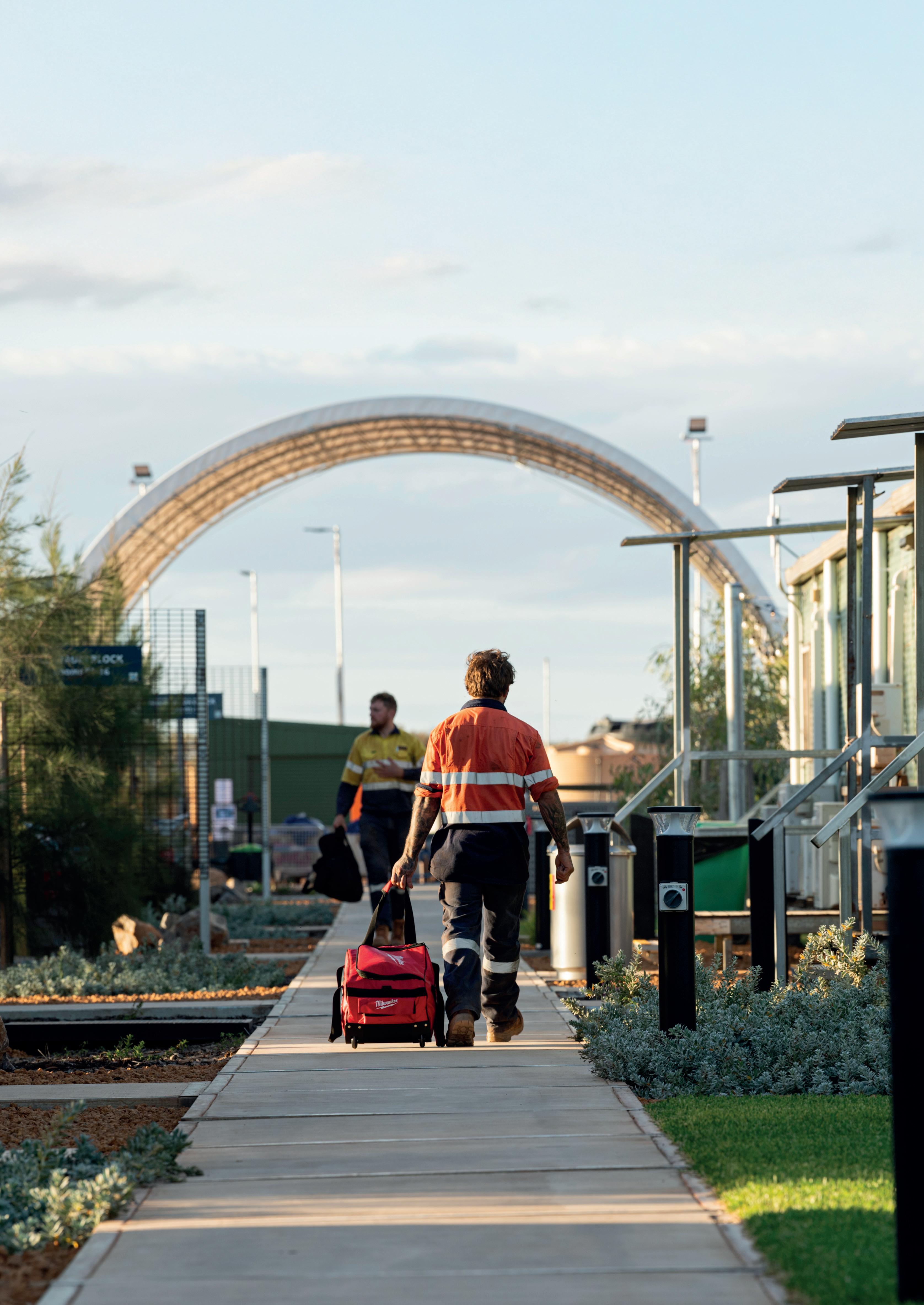
Contractors wearing hi-vis walk through Nyingari Ngurra, the SKA-Low construction camp.
Credit: SKAO/Max Alexander
The SKAO continued to prioritise the health, safety, wellbeing, and security of everyone working for the Observatory, building on past efforts to further strengthen and sustain a safe, inclusive, and supportive working environment.
SKA-Mid
In 2024, efforts continued to embed and enhance health, safety and security strategies implemented during 2023 at the SKA-Mid site. Extrapolating from experience and data from 2023, and focussing on implementing best practice, SKA-Mid significantly improved health, safety, and security across all its operations, and on the construction projects.
The implementation of an online spreadsheet for contractors to input their accidents, incidents and near-miss occurrences streamlined the monitoring of health and safety statistics during 2024. Monitoring the number of Section 24 accidents and incidents (events that must be reported to the national occupational health and safety regulator, the Department of Employment and Labour, DoEL), is of paramount importance. In 2024, there were 2 (two) Section 24 accidents.
Implementation of ISO 45001, the Stage 2 certification audit by BSI (British Standards Institution, accredited by UKAS Management Systems) was concluded in July 2024. The annual surveillance audit by BSI is scheduled for June 2025.
The SKA-Mid Disaster Management and Emergency Response Plan was finalised during 2024. The plan recognises the need for a unified Disaster Management
Plan (DMP) to be implemented by both the SKAO and SARAO to allow for a joint response to emergencies and disasters. Select SKAO and SARAO staff will undergo ICS-role-specific training during 2025, including a real-time disaster simulation to test the efficacy of the training. The international Incident Command System (ICS) has been identified as the preferred system for managing disaster and emergency events.
ER24 Emergency Medical Services commenced work on site in January 2024. The services of ER24 are available to SKA-Mid personnel, SKA-Mid contractors, SARAO and, in cases of extreme emergency, the local community, at the discretion of the SKA-Mid Site Manager and H&S Manager.
Continued engagement with contractors through weekly site inspections, monthly audits, and various awareness campaigns, toolbox talks, and monthly Health, Safety and Environment (HSE) awards has fostered a positive safety culture. Monthly meetings with contractors address specific areas of focus and non-compliance, ensuring effective mitigation measures and safe working procedures are in place. This continuous engagement with contractors has contributed to increased audit scores for 2024.
Pouring of the concrete base for the second SKA-Mid dish on site.
Credit: SKAO

SKA-Low
Key achievements in 2024 include the completion and implementation of all policy documents, establishment of excellent stakeholder relationships, and successful negotiation of extended construction periods from 10 to 12 hours daily with a reduction in injury rate and an improved sustainability component. The site has operated with minimal compliance issues throughout 2024, particularly in areas of RFI management, land management, heritage protection, and environmental compliance.
The Health, Safety, and Environment (HSE) framework is fully established, with all essential policies now implemented. These encompass the HSE Management Plan, Drug and Alcohol Policy, Site Emergency Management Plan, as well as detailed procedural documents and supporting materials for site inductions, coordination, and access protocols. A thorough process of task and equipment risk assessments has contributed to further enhancing safety standards.
Despite the challenging remote location and associated conditions, the project maintains a positive safety culture with a total recordable injury frequency rate of 4.08, significantly better than the regional average of over 6 for remote Western Australian construction and mining operations. The site averages 68 interactions a month between the
paramedics and workers and visitors the majority of these being for minor issues such as cold symptoms, forgotten medications, and minor injuries like blisters.
Ongoing challenges include dust while driving, heat and dehydration risks, manual handling hazards, and mental health concerns associated with remote work.
The project’s HSE performance metrics indicate proactive safety management with 47 hazards identified, 15 near misses reported, and 159 HSE contacts made since January 2024. All 31 required investigations have been completed, demonstrating commitment to safety protocol adherence. A key subcontractor on the project (Cape) received two nominations for Western Australian HSE Awards for HSE equipment developments, one of which was for modifications to a mesh joining tool, highlighting innovation in safety practices.
An extensive process of task and equipment risk reviews has led to a further improvement in safety
ENVIRONMENT & SUSTAINABILITY
A commitment to sustainability underpins all the work of the SKAO. As a global leader in astronomical research, we recognise the profound impact our operations can have on the environment and the importance of monitoring and minimising that impact. Our commitment to sustainability reflects our responsibility toward society and future generations. It is embedded in every aspect of the SKAO’s activities, ensuring that we strive for solutions that are environmentally responsible, socially equitable, and economically viable.
In 2024 the SKAO established a new structure to guide its sustainability journey and increase its efforts on sustainability.
The groups were established by the SKAO’s Sustainability Steering Group (SSG) as a mechanism to champion SKAO’s sustainability goals by ensuring crossfunctional collaboration and coordination of activities that support the delivery of these goals.
Over 20 individuals from across the organisation volunteered as sustainability champions and will play a key role in suggesting new ideas and initiatives.
A subset of this group, known as the Sustainability Action Group (SAG), will collaborate closely with the sustainability lead to prioritise these ideas and make recommendations to the Sustainability Steering Group.
During 2024, both groups held their kick-off meetings. The primary focus of these meetings was to document past and current actions, and to brainstorm innovative ideas aimed at driving sustainability initiatives in both the short and long term. This marks a significant milestone in the SKAO’s collective journey toward a sustainable future.
Embedding Sustainability across the SKAO
In line with the SKAO’s commitment to environmental stewardship, tailored strategies were applied to reflect the unique conditions and community contexts of each site. Throughout 2024 the Observatory advanced its sustainability agenda by encouraging innovative approaches to minimise environmental impact, conserve resources, reduce waste, and embed cultural heritage protection into day-to-day activities.
The SKA-Mid team continued to embed sustainability in construction practices, with a strong emphasis on minimising environmental impact across the site. Construction zones were clearly demarcated to limit vegetation clearance and protect local habitats, while teams prioritised careful planning to reduce ecological disturbance.
Group travel, via shared vehicles was widely adopted to cut fuel use, particularly between the SOC and EOC. Staff members were also encouraged to reduce energy consumption through awareness initiatives, including toolbox talks and signage in work areas.
Sustainable water use was supported through a dedicated management plan, which included regular inspections to identify leaks and prevent surface water pollution. Meanwhile, efforts to reduce construction waste included repurposing
materials like pallets and wood off-cuts into practical items such as benches and notice boards at the construction camp.
Similarly, at the SKA-Low site, a strong focus was put on protecting Wajarri Country and minimising environmental impacts. Measures to safeguard Wajarri Yamaji cultural heritage included fencing key areas, monitoring groundworks, and preserving culturally significant trees such as Gidgee trees. Construction activities were carefully planned to minimise disturbance to native vegetation, while water usage at site facilities was closely monitored to ensure efficient and responsible consumption.
Energy-saving initiatives, such as the use of timers and clothes drying racks, helped reduce dependence on diesel generators. Transport-related emissions were also minimised through group travel, on-site servicing of machinery, and the establishment of a local fuel depot – reducing the need for long-distance refuelling.
Waste reduction was addressed through more efficient packaging, the use of biodegradable materials, and the repurposing of timber for community use. Despite limited options in remote areas, recycling initiatives were also introduced at operational offices.
Greenhouse gas emissions
In 2024 the SKAO undertook a comprehensive review to identify all sources of greenhouse gas (GHG) emissions expected during operational phases, assuming current infrastructure remains unchanged. Despite challenges like shared premises and limited data, key emission sources, including electricity use, travel, waste and coolant loss, were identified and are being quantified to inform long-term targets. A scoping study by an Australian sustainability consultancy later validated these findings. Importantly, the SKAO’s implementation of a strict power budget for telescope systems has helped cut projected electricity needs by half compared to initial estimates. Construction-related emissions were managed through contractor obligations and will be fully assessed upon project completion. For more information, please refer to the Energy Management section.

A comprehensive GHG accounting framework is currently in development and is expected to be implemented in the near future, reinforcing SKAO’s broader commitment to sustainability. In the meantime, SKAO has taken meaningful steps to reduce emissions during the construction of SKA-Low, capitalising on opportunities unique to that phase of the project. Notably, by optimising how antennas are packaged, the number of shipping containers used for transport from Italy was halved – from over 1,100 to about 560 – reducing one of the project’s major carbon contributors. Looking ahead, sustainable track design and maintenance are expected to help lower the site’s operational carbon footprint by reducing the need for frequent maintenance interventions.
Water pumping wind turbine in the Karoo in Northern Cape, South Africa.
Credit: SKAO/Max Alexander
Biodiversity
SKA-Mid
In accordance with South Africa’s National Environmental Management Act, the SKA-Mid site operates under an Integrated Environmental Management Plan (IEMP) approved in 2019. All construction contractors are required to align with this framework by submitting environmental management plans and method statements, which are reviewed by an independent environmental control officer. Compliance was actively monitored in 2024 through inspections, audits, and specialist reviews.

Environmental walkthroughs helped guide infrastructure away from sensitive ecological and heritage areas, resulting in the translocation and ongoing monitoring of 29 protected plant specimens. Construction zones were clearly marked to minimise disruption to local fauna, and disturbed areas were rehabilitated to encourage natural regeneration. The SKA-Mid site achieved a strong 94% compliance score in its 2024 external environmental audit.
Flowers growing through the mesh at the Core of the SKA-Low telescope
SKA-Low
In 2024 SKA-Low maintained full compliance with environmental regulations, meeting all permit requirements set by the Western Australian Government. Clearing activities remained well within approved limits, with 363.11 hectares cleared – significantly under the 684-hectare threshold and aligned with the project’s goal of staying below 550 hectares. Wildlife and flora protection remained a high priority, with 61 pre-clearance surveys and buffer zones established to safeguard the threatened Western spiny-tailed skink. Similarly, priority plant species such as Gunniopsis divisa and Calandrinia sp. Boolardy Station were protected through strategic site planning and expert botanical input.
Environmental management continued to be guided by a comprehensive SKA-Low Environmental Management Plan, developed collaboratively with CSIRO and shared with Wajarri Yamaji representatives. This approach ensured that key stakeholders had the opportunity to provide feedback on SKAO’s environmental management strategies. This plan promotes sustainable practices in land use, surface water management, and biodiversity protection, with a strong emphasis on respecting cultural heritage. These ongoing efforts underscore SKALow’s commitment to environmental stewardship and the holistic protection and healing of Wajarri Country.
This plan promotes sustainable practices in land use, surface water management, and biodiversity protection, with a strong emphasis on respecting cultural heritage
Water management
SKA-Mid
In 2024, SKA-Mid maintained high standards in water resource management, reflecting the project’s commitment to sustainable practices in a water-scarce environment. Water Use Licences (WULs) were in place for all relevant areas, and both internal and external audits demonstrated strong compliance - each scoring over 90%, with one external audit achieving a perfect 100%. These results confirm adherence to water usage regulations and highlight effective oversight by both the SKAO and relevant authorities.
To ensure the project remains within its allowable water extraction limits, monthly monitoring of approved boreholes and quarterly water quality assessments were carried out. These checks help evaluate the effectiveness of pollution prevention measures and support the responsible use of groundwater resources. Greywater from site facilities was reused for dust suppression and plant irrigation at the construction camp, contributing to efficient water use and reduced environmental impact.
SKA-Low
SKA-Low is being constructed in the arid rangelands of Western Australia, where annual rainfall is sparse and unpredictable. Recognising the importance of managing surface water responsibly, the project has prioritised road and track designs that minimise disruption to natural water flows. In 2024 the access road design was amended specifically to reduce impacts on these flows, and parts of the 230 km track and trench network were assessed for future integration of local surface water management measures. These actions support the rehydration of the rangelands and the recharge of underground aquifers, both of which are vital to ecosystem health.
Water usage across the project is tightly controlled under Western Australian State Government permits, and SKALow’s consumption remains significantly below the approved thresholds - far less than comparable activities such as mining. Efforts have been made to minimise water use during construction, including selecting water sources from multiple locations to reduce pressure on single aquifers and protect the habitat of stygofauna. Construction methods have also been adapted to reduce water needs for tasks such as dust suppression, and trials of an environmentally approved dust-binding product are already yielding promising results.
At the Nyingari Ngurra SKA-Low village and laydown area, further innovations have helped reduce the use of potable water and manage wastewater effectively. Groundwater is treated onsite using a reverse osmosis system, with brine diverted to evaporation ponds to minimise waste. Portable water fill stations and ice machines encourage staff to use refillable bottles, significantly cutting down the use of bottled water. Wastewater is treated through a robust Ecofarmer 250 system and reused safely in an irrigation field, helping to return clean water to the environment while reducing reliance on trucking.
With these systems in place, SKA-Low is well positioned to begin full implementation of its land rehabilitation and surface water management plans in 2025.
Portable water fill stations and ice
machines encourage staff to use refillable bottles, significantly cutting down the use of bottled water
Waste management
SKA-Mid
Throughout 2024, the SKA-Mid project generated and managed multiple waste streams in accordance with the National Environmental Waste Management Act (No. 59 of 2008). All waste generated by SKA-Mid activities is disposed of at legally registered landfill sites.
General waste volumes fluctuated across quarters, peaking in Q1 (220 m³) and Q3 (192 m³), reflecting construction activity cycles. Notably, 390 m³ of concrete/ cement-contaminated wastewater generated in Q3 was fully reused on site, highlighting a strong commitment to waste reduction. Building rubble (24 m³) was only reported in Q2. Hazardous
waste saw a significant volume in Q2 (73,140 kg), which was responsibly recycled at a composting facility. Effluent waste and treated sewage volumes peaked in Q2 – 227,840 litres and 786,000 litres respectively – likely correlating with increased on-site occupancy. These figures illustrate ongoing efforts to manage waste responsibly, minimise environmental impact, and maximise reuse and recycling practices.
SKA-Mid aims to further minimise landfill waste by launching a wood and steel recycling programme in 2025, which will involve local communities.
SKA-Low
During the 2024 construction phase at SKA-Low, waste generation primarily stemmed from three sources: the 176-bed construction camp, packaging from global equipment shipments, and materials used in servicing on-site plant and equipment. Waste was sorted into categories including cardboard, metals, hazardous materials, petroleum-based waste, and general refuse – the latter forming the largest volume trucked off-site. As SKALow inherited a standard construction setup, promoting sustainable behaviours among the workforce has required a concerted cultural shift.
Several initiatives were implemented in 2024 to reduce waste and increase recycling and reuse. A major achievement was the elimination of single-use plastic water bottles by installing more refill points and ice machines, leading to a significant drop in plastic waste. Food services at the camp replaced disposable plastics with reusable or biodegradable containers, while reusable cups and “keep cups” were promoted to reduce disposable cup usage. Plastic recycling proceeds were donated to the Royal Flying Doctor Service, contributing several thousand dollars.
Packaging and shipping materials have also been targeted for sustainability. Heattreated wooden crates were repurposed for community use in Geraldton, and creative reuse by staff was encouraged. A notable effort was the repurposing of 330 large steel cable drums – each weighing 750kg – for use by local communities and pastoral stations. Metal waste was separated and recycled through local scrap dealers, and vehicle servicing waste was safely disposed of via approved channels in Geraldton.
The logistics of shipping telescope components were refined based on early experiences. Suppliers were required to use sustainable materials such as heattreated wood, reusable plastic or steel, and organic packaging. Denser packing configurations were also introduced to minimise waste and improve transport efficiency (more details are provided in the ‘Sustainability in the supply chain’ chapter).
Several initiatives were implemented in 2024 to reduce waste and increase recycling and reuse.

Energy Management
As with all aspects of the SKA project, energy management is guided by sustainability, efficiency, and long-term resilience. In the construction phase, temporary energy solutions are being used to meet operational demands while permanent systems are developed. A key priority is reducing reliance on diesel by transitioning to cleaner, renewable energy sources. These solutions are being carefully designed to operate effectively in remote locations while meeting the technical and environmental requirements of a radio-quiet zone.
SKA-Mid
Over the past year, the Minimum Viable Product (MVP) container to house and shield radio-frequency emission from the Remote Power Station (RPS) was manufactured and passed essential performance tests.
A MVP refers to an initial, scaled-down version of a system that includes only the essential features necessary to validate the design and functionality before fullscale production. The MVP, designed to power the telescope dish at SKA008 (the end of one of the spiral arms), serves as a key step towards full RPS deployment. The MVP container underwent rigorous electromagnetic interference (EMI) shielding effectiveness testing to confirm compliance with the design requirements. The tests will be repeated during 2025, alongside further functional factory testing of the complete system, before installation, commissioning, and verification on site.
The site works contract for the infrastructure required for the MVP and the eventual RPS installation was awarded, with physical work on site scheduled to begin in early 2025. The site is expected to be ready to accept the MVP in the third quarter of 2025. In parallel, detailed system modelling helped refine the anticipated renewable energy contribution of the RPS. Encouragingly, results indicate that the current design can achieve up to a 98% renewable energy fraction, based on a typical meteorological year.
A potential opportunity has been identified for the location of the SKA-Mid Central Power station to reduce the EMI risk, and the substantial cost of electromagnetic shielding. This could have a significant positive impact on the envisaged cost of energy. Work has started on assessing the feasibility of this option and will continue in 2025. If feasible, this would in turn increase the renewable fraction that can be achieved.
SKAO member of staff walking towards a sign marking RFI zones in the Meerkat National Park.
Credit: SKAO/Max Alexander
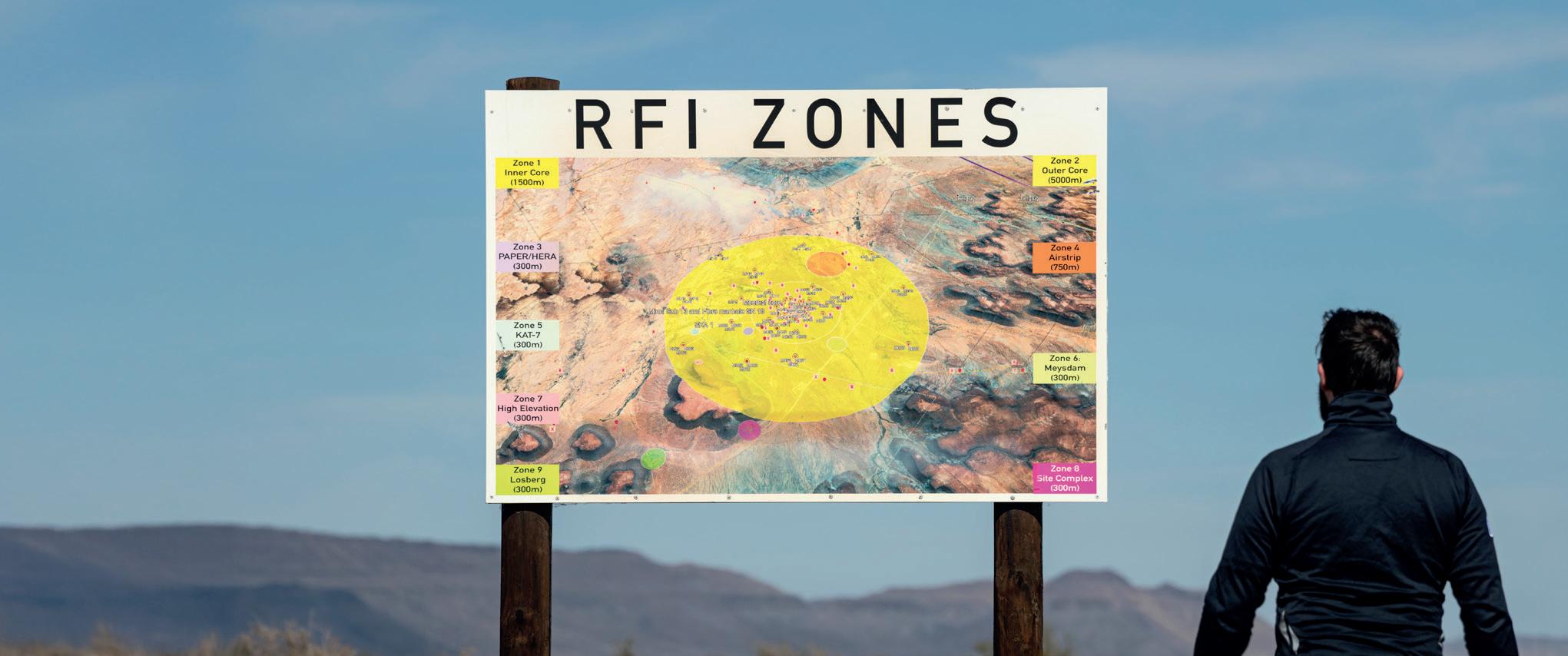
SKA-Low
During the ongoing construction phase of SKA-Low, energy is primarily supplied by diesel generators. To reduce environmental impact and fuel use, generator management strategies have been implemented, and alternative solutions are being explored.
These include the adoption of small hybrid systems combining diesel generators with solar photovoltaic panels and battery storage. An RFI-shielded diesel generator station is currently under construction and is expected to be operational by the end of 2025. This system will support early telescope operations, help assess power requirements, and serve as a long-term backup. In the longer term, a third-party energy provider will deliver a solar PV and battery storage solution that meets both the site’s energy needs and RFI requirements.
Through 2024 the focus was delivery of the interim Central Power Station (CPS Phase 1). The first power generation facility is scheduled to be commissioned by the fourth quarter of 2025 and will provide power for commissioning of the telescope infrastructure. During 2024, the CPS design reached an advanced stage of maturity, and longlead equipment was specified and ordered. Several items passed Factory Acceptance Tests (e.g. transformers, reactors and generators). Delivery, onsite assembly and testing are planned for 2025.
Design concepts for shielding the diesel generators were developed, marking the completion of the final components required for the CPS Phase 1. This phase will support AIV and science commissioning from mid-2026. A formal risk-based hazard identification was conducted, and the identified risks to safety and reliability were addressed through suitable mitigation measures.
Looking ahead, the long-term renewable solution (CPS Phase 2) will be implemented once the load justifies a Power Purchase Agreement (PPA), with commissioning expected in 2028 to support SKA-Low telescope operations. In preparation, work has begun on preparing the PPA procurement process, aiming to optimise the renewable energy share, guided by a financial model that evaluates costs across various renewable fractions.
During 2024, the CPS design reached an advanced stage of maturity, and long-lead equipment was specified and ordered
Sustainability in the supply chain
Like all major research infrastructures, the SKAO recognises the critical importance of embedding sustainability throughout every stage of its supply chain. In line with this commitment, in 2024 the organisation implemented a range of procedures and practices designed to minimise the environmental impact of its
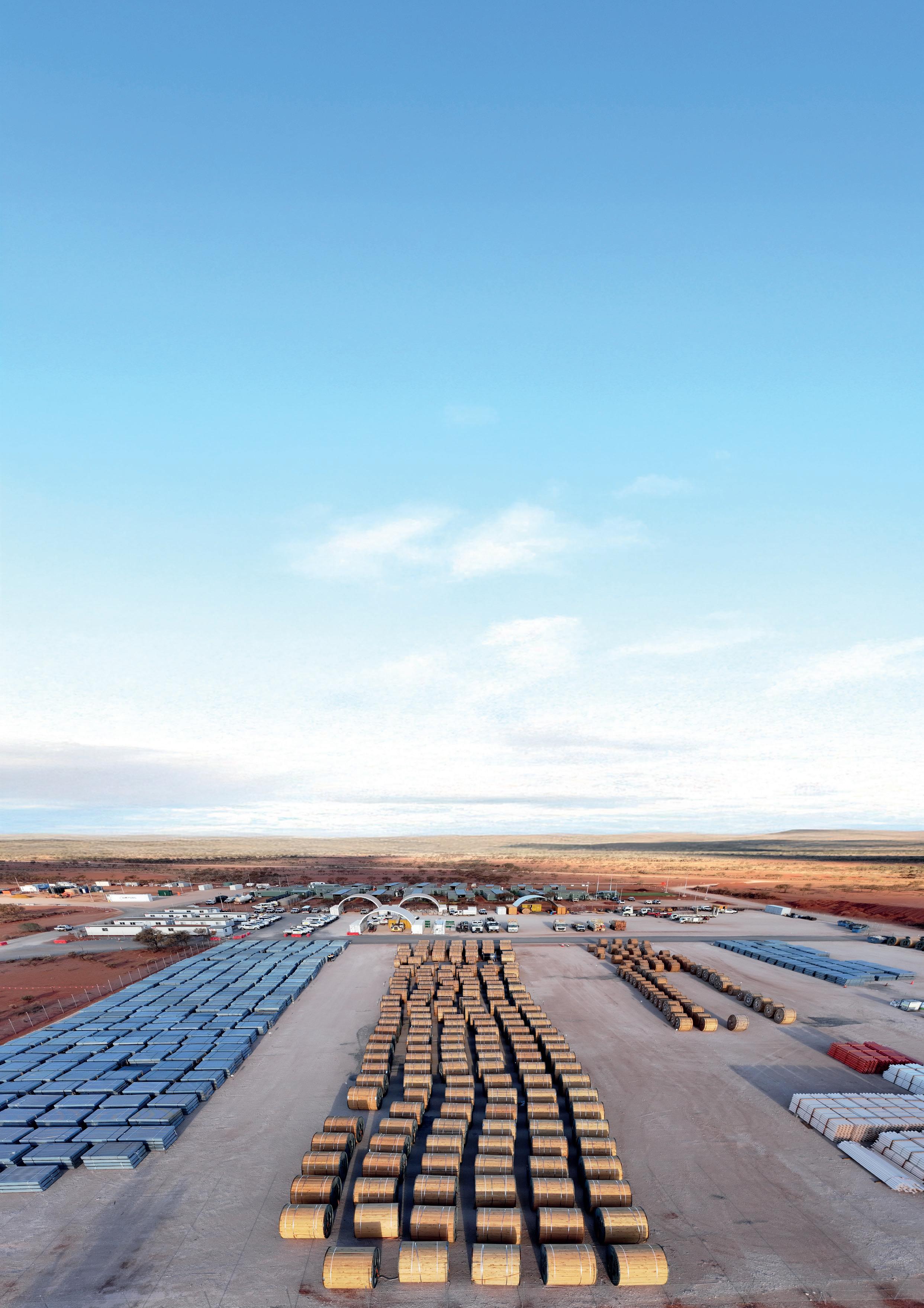
global logistics and procurement activities. These measures include selecting lowemission transport methods, promoting the use of reusable and recyclable packaging materials and applying rigorous environmental standards across supplier engagement and contract management.
Sustainability and global shipping requirements
Throughout 2024 the SKAO remained committed to reducing the environmental impact of its global supply chains. A key strategy in this effort was the prioritisation of sea freight for transporting nearly all construction materials – minimising emissions associated with air transport. Air freight was reserved only for highvalue, sensitive electronic components that require special handling. To further support sustainability goals, the Observatory ensured that packaging
materials adhered to environmentally responsible practices. Heat-treated timber, rather than chemically treated alternatives, was used for crates and pallets. This choice not only meets international biosecurity requirements but also enables the reuse or repurposing of materials at their destination, significantly reducing packaging waste. Strict biosecurity protocols were consistently applied to prevent the spread of pests and diseases across borders.
View of the SKA-Low construction camp and laydown yard.
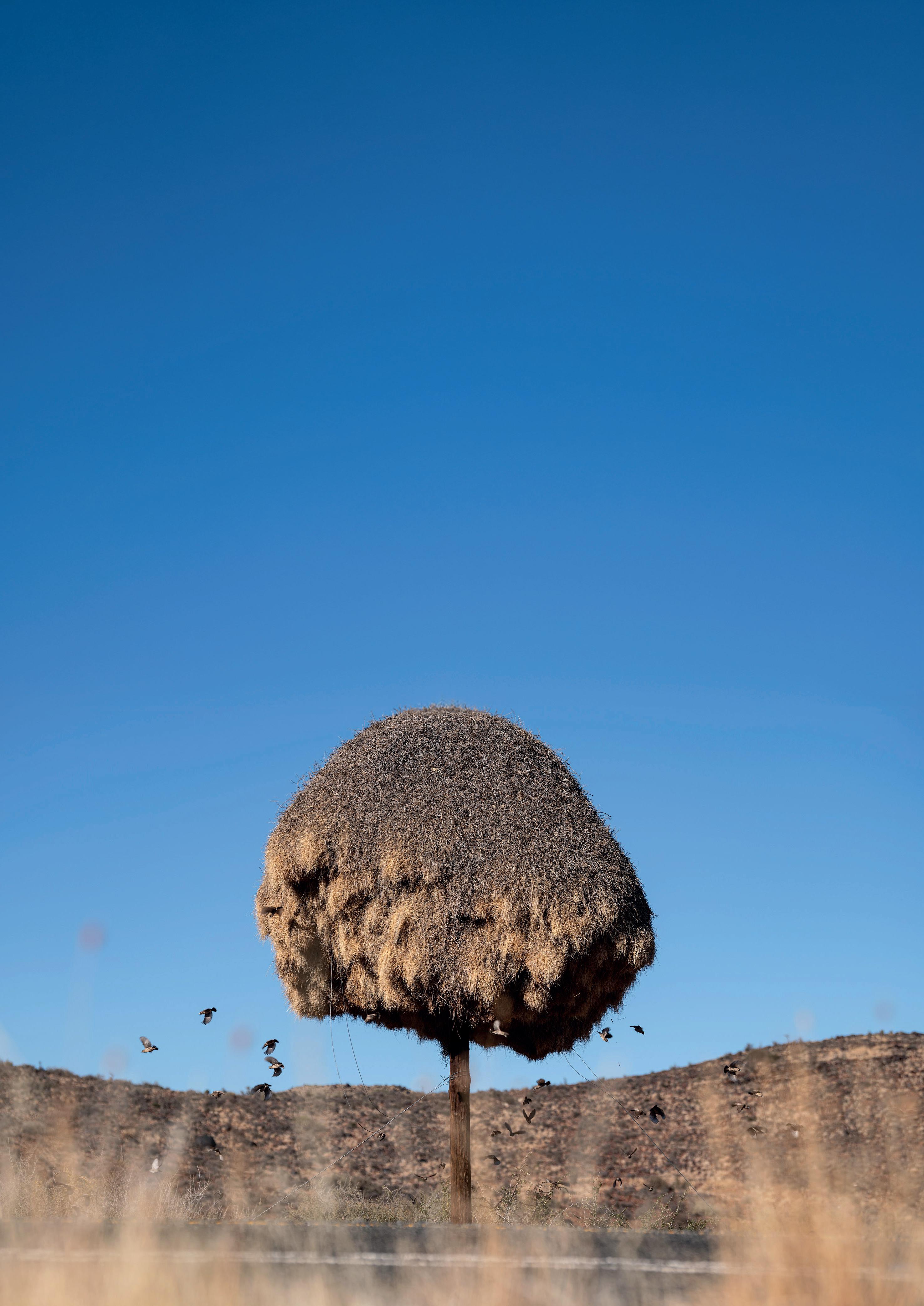
Pre contract award – encouraging the development of sustainable solutions
The development of the Science Data Processor (SDP) invitation to tender pack provides a clear example of how the SKAO is embedding environmental sustainability into its procurement strategy. Highperformance computing systems such as the SDP are essential to SKAO operations but can have considerable environmental footprints. These impacts typically arise from high levels of energy consumption, substantial water usage for cooling systems and the use of critical or rare materials in manufacturing. Recognising these challenges, the SKAO has taken a proactive approach by integrating strict environmental requirements into the SDP tender documentation.
Specifically, all bidders are mandated to submit comprehensive, empirical data detailing the environmental performance of their proposed solutions. This includes metrics related to energy efficiency, cooling methods, materials sourcing, and lifecycle environmental impact. The data provided are not merely informative – they are a scored component in the technical evaluation process, reviewed alongside performance and cost criteria by the Tender Evaluation Panel. This ensures that environmental sustainability is not an afterthought but a fundamental element in the SKAO’s decision-making.
A large Sociable Weaver nest in the Meerkat National Park. Credit: SKAO/Max Alexander
Post contract award – encouraging sustainable behaviours during contract performance
SKA-Low
Throughout 2024, the SKAO worked closely with its suppliers to minimise the environmental footprint of construction activities, embedding sustainability into project delivery. A key example of this collaborative approach is the partnership with Ventia on the SKA-Low infrastructure works in Australia, where a series of targeted measures were introduced to reduce fuel consumption, emissions and material waste.
One major initiative was the use of aboveground cable ladders for power and fibre cabling in areas with heavy rock. This avoided the need for energy-intensive trenching with rock breakers, leading to an estimated saving of over 450,000 litres of diesel fuel.
Transport and logistics were optimised through the use of multi-seat buses to ferry personnel to work fronts, and by maximising aircraft loading in flyin-fly-out operations. Road trains were preferred over smaller vehicles to deliver materials to site more efficiently, further reducing fuel usage.
Road trains were preferred to deliver materials to site more efficiently, further reducing fuel usage.
To minimise unnecessary travel, Ventia deployed mobile service vehicles to refuel and maintain machinery directly on site. Additionally, generators were right-sized to match power needs, avoiding the inefficiency of using oversized units.
Smart logistics planning also played a key role. Deliveries of Core Processing Facility (CPF) modules and Remote Processing Facilities (RPFs) were grouped to reduce crane mobilisations, while antenna shipments from Italy were carefully packaged and containerised to optimise freight efficiency.
SKA-Mid
The SKAO placed strong emphasis on sustainability throughout SKA-Mid development in 2024, particularly in the design of key infrastructure such as the Engineering and Science Operations Centres. Both buildings were designed to reduce energy consumption and carbon emissions, using passive strategies like natural daylight and ventilation to enhance the internal environment and reduce reliance on fossil fuels. The designs adhere to green building principles, with detailed assessments required to evaluate the cost and impact of meeting various environmental certification levels, encouraging the use of locally sourced materials and resourceefficient construction.
The Science Processing Centre construction prioritised sustainable procurement. Vendors were asked to provide detailed environmental information, including the embodied carbon content of products and lifecycle emissions. This encouraged environmentally conscious construction methods and the use of lower-impact materials throughout all stages - from raw material sourcing and subassembly manufacturing to transportation, final assembly, and international shipping,ensuring a comprehensive approach to reducing the carbon footprint of building materials.
To reduce environmental impacts from transportation, SKAO and SARAO obtained permits to open borrow pits near work sites within the spiral arms. This significantly reduced the need to transport construction materials over long distances across the widely dispersed site. The borrow pits are operated under strict environmental guidelines, including Environmental Management and Rehabilitation Plans, and are overseen by an Independent External Environmental Control Officer to ensure sustainable operation and environmental protection.
Similarly, water sustainability was improved through the acquisition of ad-hoc borehole licenses in remote areas. This enabled water extraction near the work zones, significantly reducing the need for long-haul water transport.
Vendors were asked to provide detailed environmental information, including the embodied carbon content of products and lifecycle emissions

SKA-Low Site Reliability Engineering Manager Louisa Quartermaine and SKA-Low Head of Computing and Software JC Guzman inspect the SKAO rack in the Pawsey Supercomputing Research Centre in Perth, Western Australia. Photo credit: SKAO/Max Alexander.
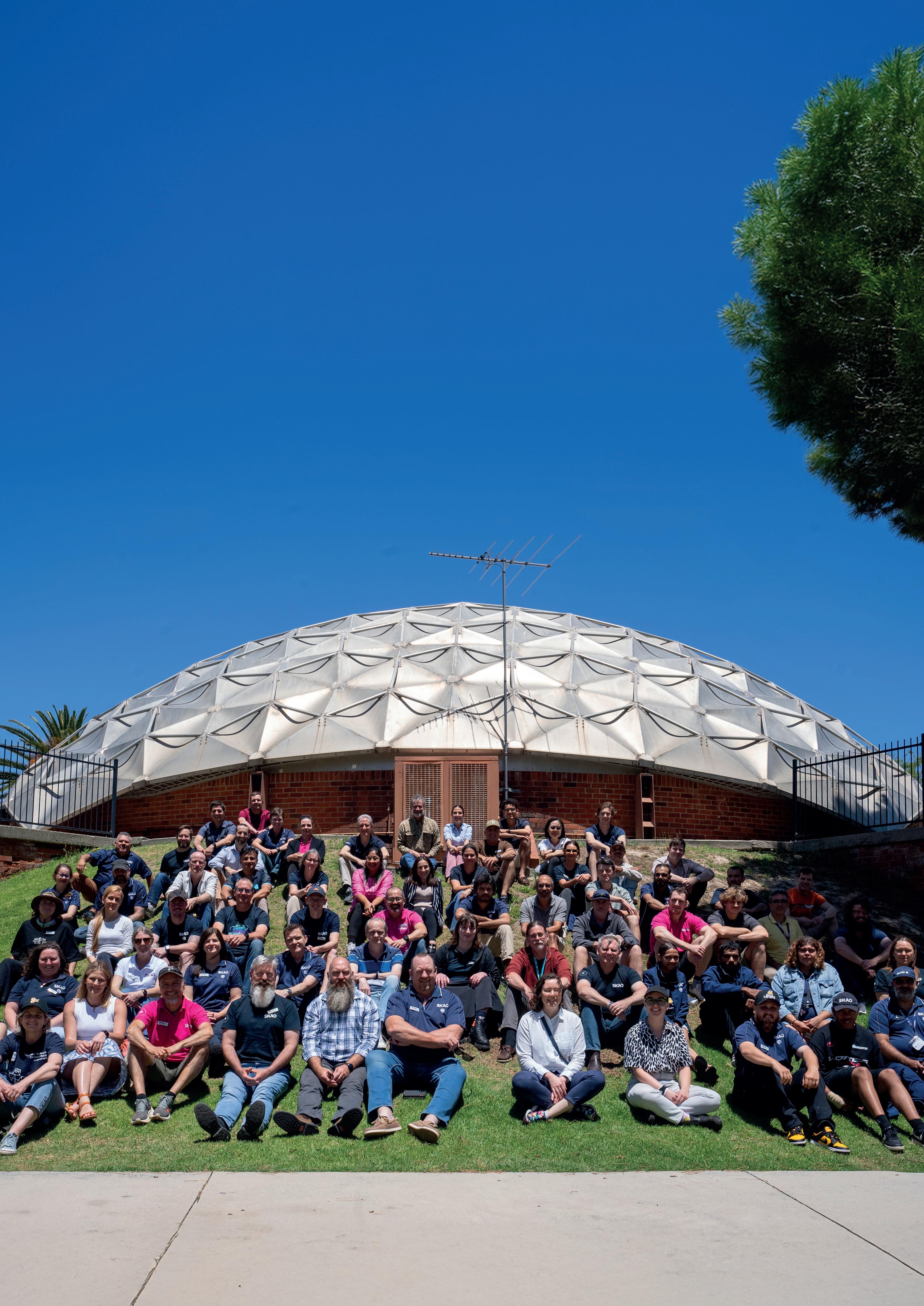
STAFF ASSOCIATION
The Staff Association is a representative group dedicated to advocating for the interests and rights of all SKAO employees, regardless of their roles or locations. It consists of four representatives from the UK, along with one representative each from Australia and South Africa.
The SKA-Low team. Credit: SKAO
The current composition of the Staff Association reflects a balanced approach, with 50% of the representatives being citizens of their respective countries, while the other 50% are international staff.
Two-thirds of the panel identify as female, one-third as male, and the representatives collectively represent three different ethnicities, highlighting the cultural diversity within the organisation.
The representatives maintain communication with staff through various channels such as one-on-one and town hall meetings, emails, internal messaging systems and an anonymous online form. Serving as an internal consultative body, the Staff Association ensures that staff perspectives are taken into account by SKAO management when making decisions that affect staff wellbeing, safety, and working conditions. It also promotes the values and culture of the SKAO to help advance the organisation’s mission.
The primary platform for the Staff Association to provide feedback to SKAO management is the Joint Consultative Group, which includes the director of operations (Chair), director of HR, HR manager, and the Staff Association representatives.
In 2024, the Staff Association undertook a wide range of activities including:
◗ Providing feedback and advice on the consultation regarding the review of market pay data that fed into the annual pay award for 2025 and resulting communications to staff members.
◗ Supporting the director-general’s decision regarding the implementation of the 2024 annual pay award.
◗ Providing feedback on the private health insurance provision and how it can best serve the interests of staff.
◗ Contributing to internal focus recognition groups to foster employee engagement and recognising valuable achievements of employees at work, and assistance with the implementation of the new values ambassador programme.
◗ Hosting multiple hybrid town hall meetings with staff, which each attracted more than 100 attendees.
◗ Contributing to the resolution of various issues raised by staff, such as internal tax issues, contributions to international savings schemes, arrangements for flights home, international health insurance coverage, credit card usage policies, queries on status of residence and adjustments related to salary structures.
◗ Contributing towards entry permit – Visa support – for staff through external consultancy assistance and most recent Orange Carpet facilities.
FINANCE
RSM UK Audit LLP, as the appointed external auditors of the SKAO, have provided their opinion that the financial statements for the year ending on 31 December 2024 present a true and fair view of the SKAO’s financial activities in accordance with International Financial Reporting Standards (IFRSs) as adopted by the European Union.
The accounts are prepared under the International Financial Reporting Standards framework, as adopted by the European Union, on an accruals basis of accounting. Although the SKAO has registered offices in Australia, South Africa and the United Kingdom, the financial statements are reported on a consolidated basis, including the accounting related to the construction of the telescopes and associated software.
For the 2024 financial year, the SKAO reported a surplus of €178.7m. The surplus is expected to be expended on operating and capital expenditure related to the construction of the telescope assets in the coming years. The operating expenditure of the SKAO increased from €48.5m in 2023 to €57.6m in 2024 as expected, owing to the increased headcount and the further establishment of offices, operations centres and construction camps in the host countries. There is a €2.3m increase in the depreciation and amortisation
cost recognised in the year, owing to the increasing number of assets brought into use. Other operating expenditure for the period was €14.3m, a €4.9m reduction from the previous year. The reduction is largely related to a reversal of loss allowances and provisions related to tax receivables from member countries; the loss allowances and provisions were recognised in accordance with SKAO accounting policies. The provision for tax receivables resulted in €6.8m of expenditure in the previous period; however the provisions have largely been de-recognised in 2024 due to significant progress in the establishment of the tax reclaim processes. The net release of the provisions resulted in an income in 2024 of €5.4m. Other operating expenditure also includes €5.9m of consultancy and professional fees which is largely related to the expensed portion of software development costs, which does not fulfil the capitalisation criteria of the financial standards.
To support the year-end accounting, the SKAO Finance team conducted detailed asset verification procedures at both the SKA-Low and SKA-Mid sites, verifying the existence and completeness of the accounting of the fixed assets. During 2024 a detailed Asset Management Policy, Asset Management Manual, and Asset Accounting Manual were developed, to formalise the principles and processes that will underpin the sound governance and management of the SKAO’s complex fixed assets.
The SKAO holds a significant net asset position, underpinned by the large cash balance generated from the accumulated surplus. During 2024 the SKAO continued to invest surplus cash balances into money market funds and deposit accounts that are selected and managed in accordance with the SKAO’s Treasury and Financial Investment Management policy. The SKAO earned €11.2m of financing income from these investments in 2024, recording an average yield of 5.15%.
The SKAO reported a foreign exchange gain of €7.4m in 2024, of which €2.5m is unrealised at the reporting date. While the SKAO receives a large portion of member contribution income in euro, expenditure is primarily incurred in the currencies of the HQ and host countries; British pounds (GBP), Australian dollars (AUD), and South African rand (ZAR). The SKAO has adopted a hedging strategy whereby currency cash requirements are purchased for contracted and highly-probable cash outflows once the annual budget is approved. As a result, it holds significant
cash balances in AUD, GBP and ZAR. Of the total unrealised foreign exchange gain, €1.5m relates to those cash balances held to cover future certain or highly-probable outflows; the remaining €1m gain relates to the foreign exchange revaluation of other financial assets and liabilities. Of the €4.9m realised gain, €3.1m relates to the forward contracts entered to purchase AUD and ZAR currencies, €1.7m relates to the income from the hedged member contribution invoices from Australia and the remainder relates to invoices being settled in currencies other than euros.
The cash balance increased by €3.5m to €329.8m in 2024 as member contribution income continued to outweigh expenditure. However, this is expected to reduce in future years as expenditure on non-current assets in the form of tangible and intangible assets from the telescopes’ construction continues. The capital expenditure was €182.5m in 2024 compared to €106.0m in 2023, reflecting the increase in construction activity.
Antenna shipments from Italy reduced by 49%.
In the 2024 Statement of Financial Position, there is a €32.8m increase in other receivables compared to 2023. This increase largely relates to tax and duties receivables balance which has not been impaired with provisions (€23.3m). There was also an increase in prepayments made to suppliers for the manufacture of infrastructure equipment and telescope dish structures of €15.3m, with the goods to be received in 2025.
Many of these prepayments are covered by advance payment guarantees received from the suppliers’ banks or insurance companies. The accrued income from member contributions reduced by €1.9m as were being invoiced in 2024 rather than being delayed until later years.

Construction activity accomplished in the year resulted in the first recognition of a provision for the decommissioning of the SKA-Mid site. Prior to 2024 most of the construction activity at the SKA-Mid site was on the MeerKAT telescope site for which the SKAO is not responsible, as this has not yet been handed over to the Observatory. The recognition of a decommissioning provision for SKA-Mid and the increase in the decommissioning provision for SKA-Low are the primary cause of the €7.2m increase in non-current liabilities. The decommissioning provisions for SKA-Low and SKAMid are in accordance with the requirements in the financial reporting standards: there is an obligation in the host country agreements to restore the sites in the event of termination of the relevant agreement.
Preparing the dish surface for the second SKA-Mid dish on site.
EXPENSES
Total 2024 Expenditure split by Operating and Capital Expenditure. Operating expenditure further broken down in following two charts.
PROCUREMENT & GLOBAL LOGISTICS
Procurement activity related to high-value construction contracts reduced considerably from the high-water mark of 2023. However, 2024 was no less busy for Procurement Services as there was a considerable uptick in lower-value, more transactional activities related to operational sourcing and procurement.

Arrival of the ship carrying the first SKA-Mid dish from China to the port in Cape Town in January 2024.
During 2024, Procurement Services developed and awarded construction contracts with a total value of €41m, compared to €214m in 2023.
Anticipating this inevitable pivot from developing high-value construction contracts to a more operational environment during 2024, Procurement Services has strategically restructured to create a more decentralised team better suited to meeting the SKAO’s local procurement needs in both Australia and South Africa.
At the end of 2023 the majority of procurement resources were based in the GHQ. By the end of 2024, tactical procurement resources were more
evenly distributed between the three Observatory locations.
The decrease in construction related procurement activity during 2024 also provided the Procurement Services team with sufficient capacity to roll out a number of highly successful strategic procurement initiatives, mainly related to the Information, Communications, Technology (ICT) spend category – this activity is highlighted below.
Whilst procurement related to construction reduced during 2024, the volume of construction materials being shipped from the SKAO’s global network of suppliers to both telescope construction sites continued to grow steadily throughout the year.

Credit: SKAO/Max Alexander
A Ventia contractor walks by reels of fibre cable at the SKA-Low laydown yard.
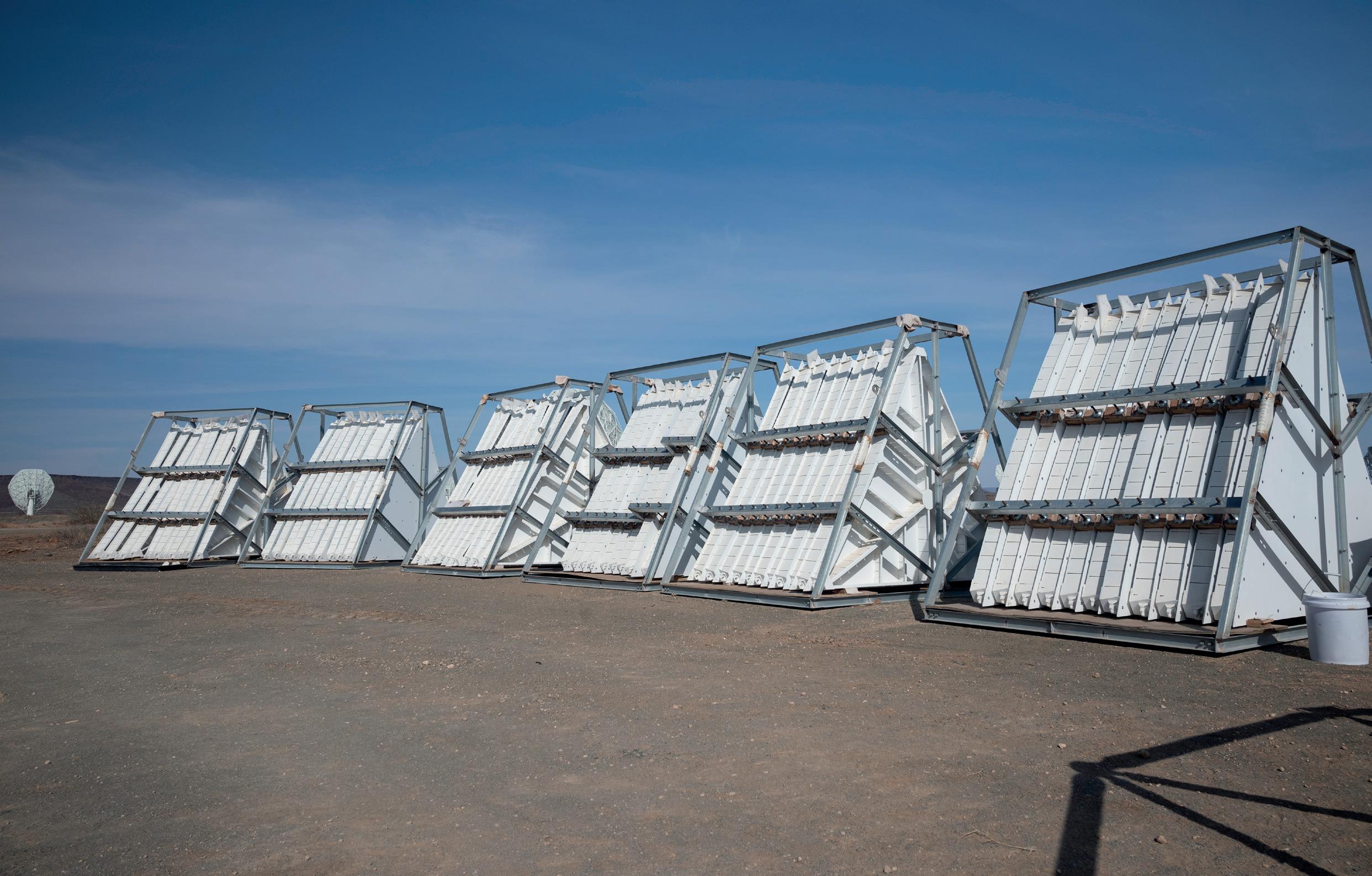
ICT category spend
2024 brought the signing of a Strategic Relationship Agreement between a globally-leading networking supplier and the SKAO. Throughout 2024 Procurement Services, alongside the wider SKAO team (Project Management, IT and Computing) reviewed the upcoming networking and computing projects and associated spend. Following a competitive procurement in 2023 in which CDW and Cisco were awarded a contract for network switches, the team started to explore how a more strategic relationship with Cisco could work. After 12 months of collaborative team-work deep-diving into the SKAOs requirements and involving senior Cisco and SKAO leaders, on 13 September 2024 SKAO signed a Strategic Relationship Agreement with Cisco. As part of
the agreement the SKAO has gained preferential pricing and access to the latest technology. Cisco’s US-based marketing team visited SKAO Headquarters in 2024 to record an exciting promotional video highlighting how the SKAO and Cisco are working collaboratively to deliver transformational science.
As the SKAO’s IT requirements continue to evolve, 2024 brought about a deeper review of IT’s software licence spend to identify opportunities to increase value for money. The IT and Procurement teams gained fantastic support from requestors and were able to work together to enhance the value gained, both technically and commercially, resulting in nearly €500k of cost reduction.
Preparing the dish surface for the second SKA-Mid dish on site.
Contracts endorsed by Tender and In-Kind Review Subcommittees
During 2024 there were 10 Tender SubCommittee (TSC) meetings (#34 to 43) and two In-Kind Review Subcommittee (IKRS) meetings (#8 & 9).
These committees endorsed 18 award recommendations with a total value of €48.67m broken down as follows:
◗ Construction awards – €41.22m
◗ Operations awards – €7.45m
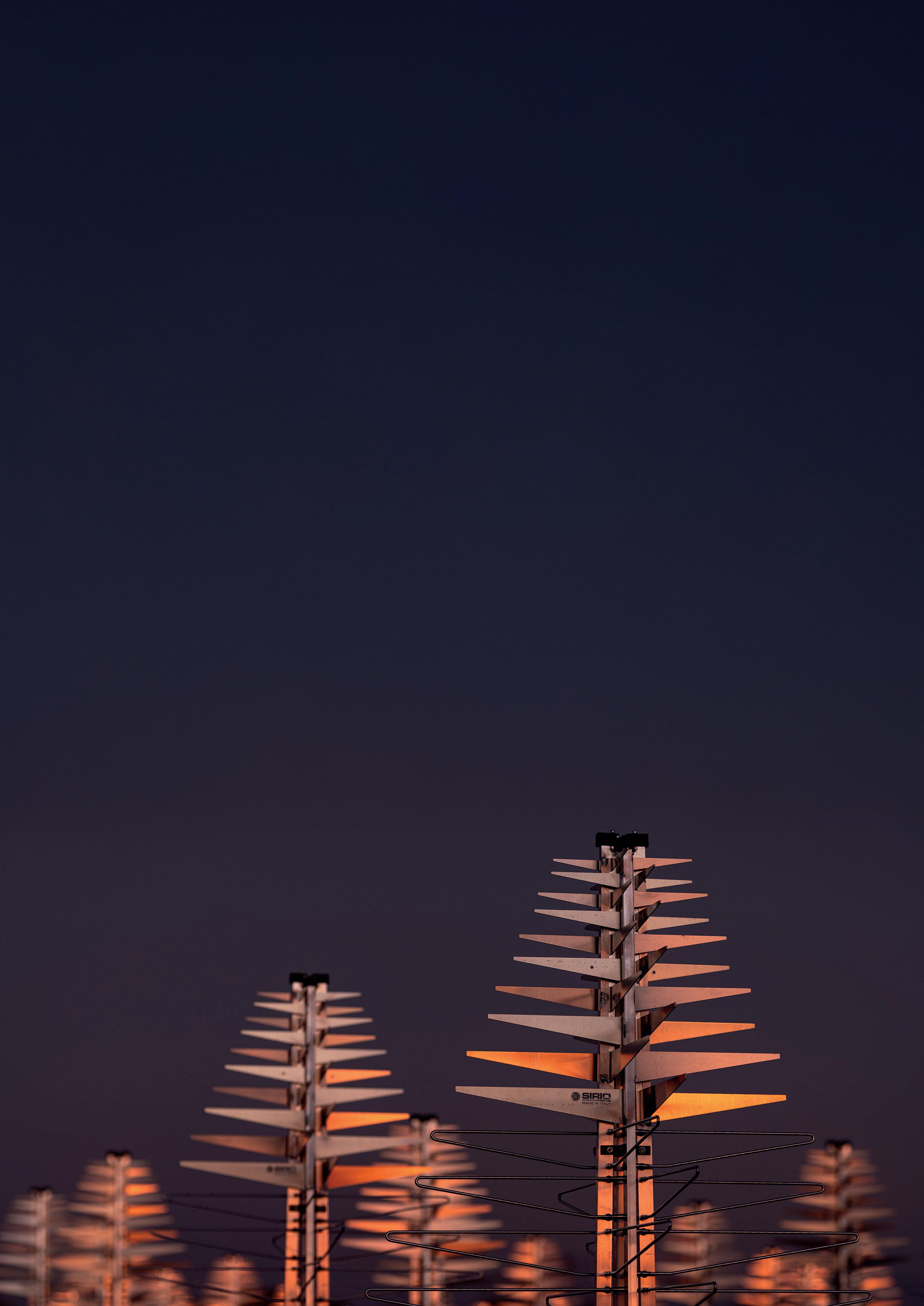
SKA-Low antennas at the S8 station on the southern spiral arm of the SKA-Low telescope. Credit: SKAO/Max Alexander
Notable high value awards during 2024 include:
◗ SKA-Low site camp operations to the Ventia/Wajarri Enterprises Limited JV of Australia – €16m
◗ SKA-Mid dish sub reflector manufacture to ESOL of Spain – €8.7m
◗ AA* Mid dish feed indexer manufacture to SAM of Italy – €.5.5m
◗ SKA-Mid-Low SAT timescale system to GMV NSL Ltd of UK – €3.9m
◗ SKA-Mid long haul transmission equipment to Gijima of South Africa - €3.4m
Global supply chain activities
Throughout 2024 Procurement Services shipped 1,300 tonnes of cargo with a total volume of 2,227 cubic meters. This equates to 311 twenty foot equivalent units (TEU) of cargo.
Most of this cargo was shipped by sea to reduce the environmental footprint, with only 13 tonnes going by air (mostly high-tech electronics and computer equipment that is not particularly well suited to shipping by sea).
Throughout 2024 Procurement Services
shipped 1,300 tonnes of cargo with a total volume of 2,227 cubic meters
Interesting shipments managed during 2024 included:
◗ SKA-Mid dish structures from China to South Africa
◗ Thousands of SKA-Low antennas shipped from Italy to Australia
◗ Delicate artworks, including paintings and intricately carved eggs as part of the Cosmic Echoes exhibition, were shipped from Australia to Cape Town for the International Astronomical Union General Assembly Conference.
All 2024 shipments managed by Procurement Services were delivered on time with no damage or reported losses. Furthermore, no customs stops, penalties, detention stops or container demurrage costs were incurred on any SKAO shipments.
RISK MANAGEMENT AND CONTROLS
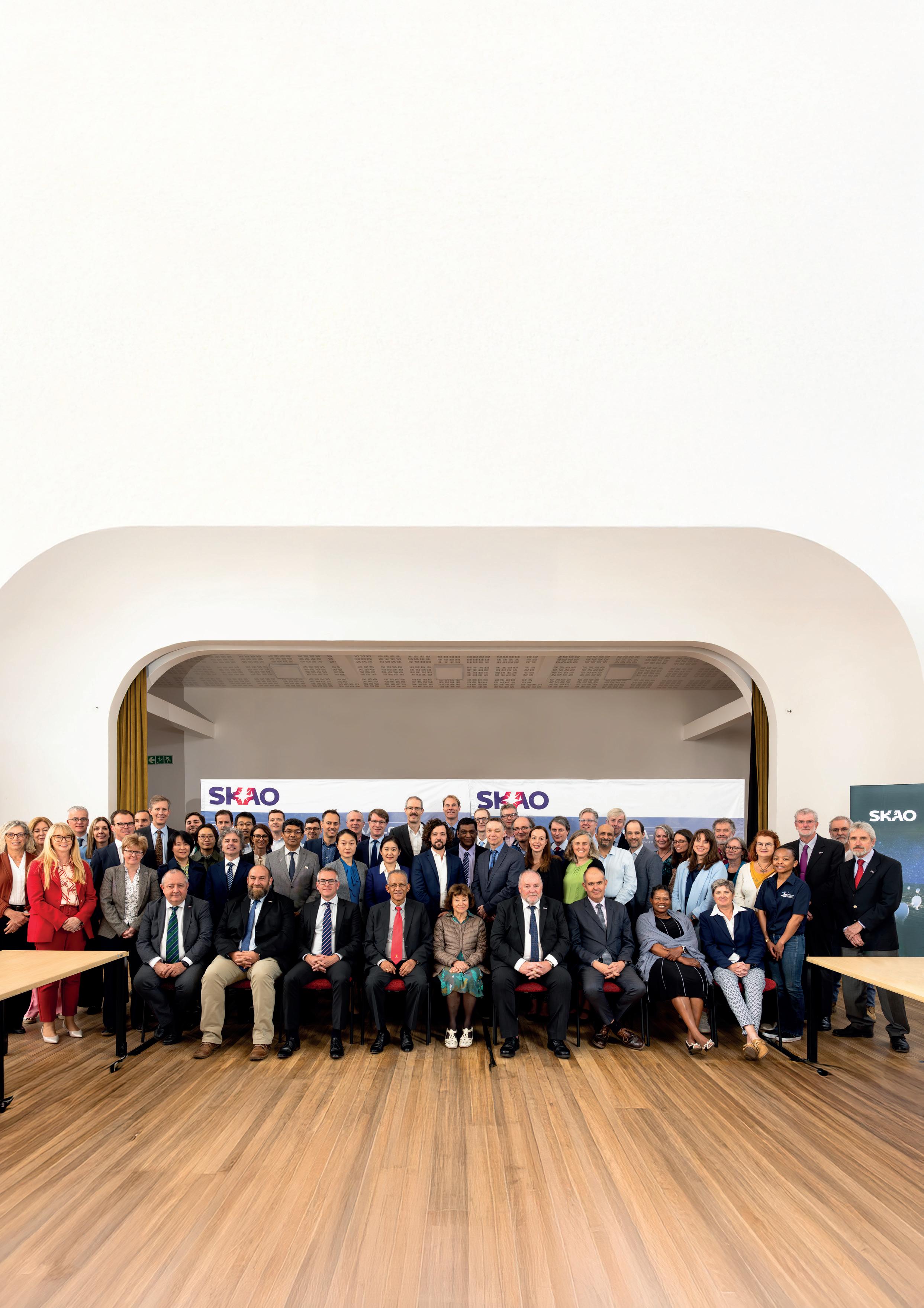
Hybrid SKAO Council meeting in Kimberley, South Africa, November 2024
Risk management
Observatory risks throughout the year were dominated by the effects of the deficit created by:
◗ Council-approved use of construction contingency to address immediate requirements while awaiting finalisation of additional funding arrangements
◗ Delays in the provision of host country deliverables (operations centres and other facilities); issues with visa arrangements for Chinese staff in South Africa
◗ The difficulties arising from SKA-Mid construction operations in the midst of an operating radio telescope (MeerKAT).
◗ These exceeded the SKAO’s risk appetite at various times of the year and required high levels of management activity to maximise mitigation measures the Observatory was able to undertake.
RISK CATEGORY
FINANCIAL RISKS
LEGAL RISKS
PROPERTY AND COMMERCIAL RISKS
INFORMATION SYSTEMS SECURITY RISKS
TECHNOLOGY RISKS
PROJECT RISKS
OPERATIONAL RISKS
REPUTATIONAL RISKS
The colour-coded scale corresponds to the allowable risk exposure which is the product of a 1 to 5 score for each of probability and impact. The exposure is rated after all mitigations have been implemented.
ETHICAL CONDUCT, COMPLIANCE AND TRANSPARENCY
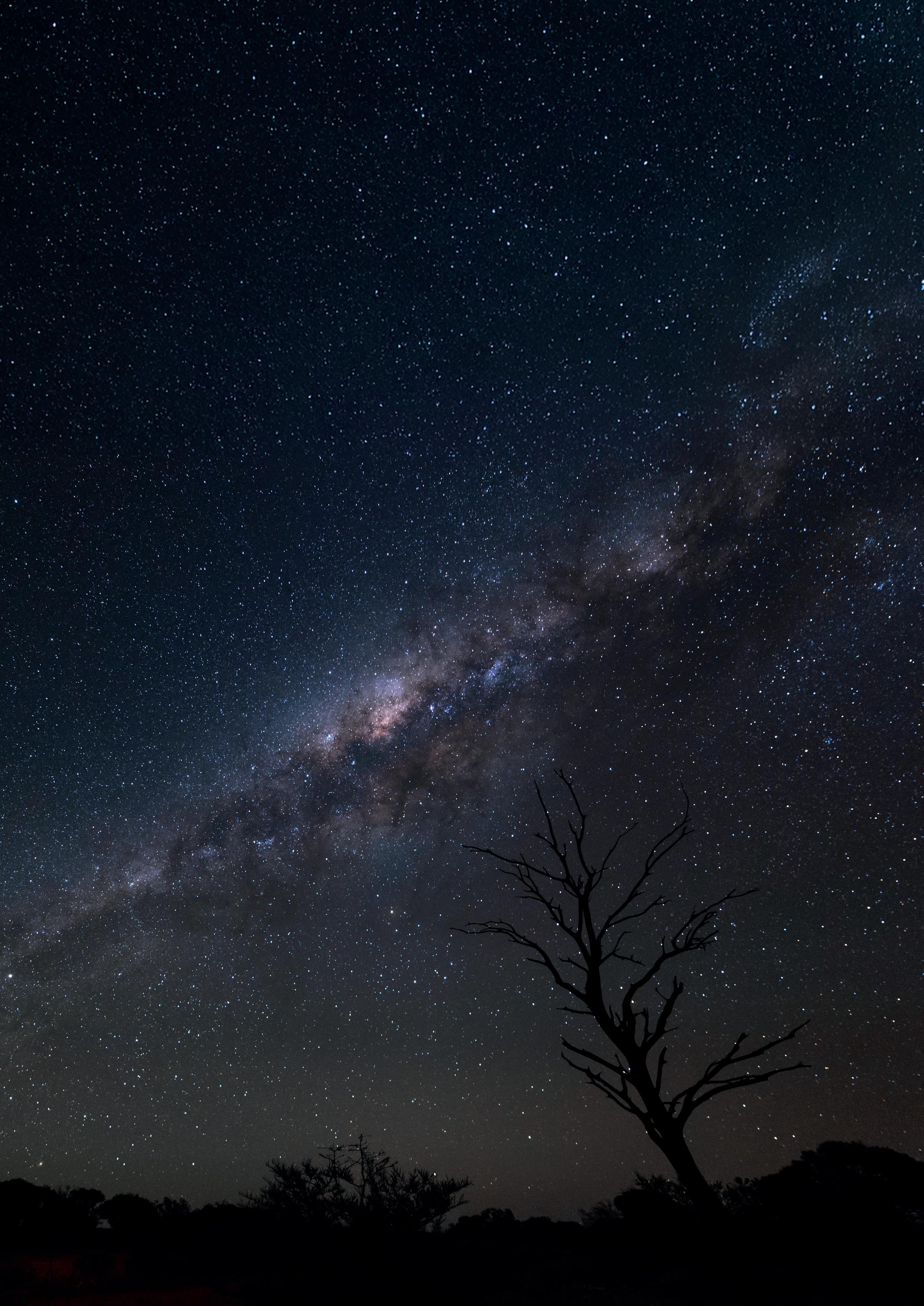
The SKAO understands that its long-term success depends not only on the scientific and operational relevance of its mission, but also on maintaining its social licence to operate, especially in regions where construction activities are ongoing. To this end, the Observatory is committed to engaging openly and transparently with its stakeholders, including representatives of member countries and local communities, to understand their concerns and expectations and respond appropriately.
The Emu in the Sky, taken on Wajarri Country in Western Australia at the site of the SKA-Low telescope. Credit: SKAO/Max Alexander
Compliance and Transparency
The SKAO remains deeply committed to actively engaging with its stakeholders – including representatives of member countries and the communities where it operates – to understand their perspectives and respond transparently and accountably to their needs and concerns.
Building and nurturing strong relationships founded on mutual respect and trust continue to be fundamental. The SKAO is guided by ethical principles that not only ensure compliance with regulatory requirements but also aim to exceed expectations, demonstrating a steadfast dedication to responsible, sustainable, and socially beneficial operations.
Ethical conduct
Ethical conduct remains a cornerstone of the SKAO’s organisational culture, prioritising a workplace environment free from bullying, harassment, victimisation, and discrimination. The Code of Ethics and Standards of Conduct and Behaviour serves as the foundation for promoting responsible and transparent management practices.
Employees are encouraged to report any concerns or grievances confidentially through any one of multiple channels. They are supported by resources such as values ambassadors – nominated staff members who provide guidance – and the Employee Assistance Programme (EAP), which offers confidential counselling for both personal and work-related matters. The EAP is also available to family members.
Following the successful launch of the Speak Up workshops in 2023, this initiative continued in 2024 through a mandatory online training module for all new starters. The module fosters open dialogue around workplace behaviour by presenting real-life scenarios that challenge SKAO’s Values, Code of Ethics, and Standards of Conduct and Behaviour.
Fostering strong, trust-based relationships grounded in mutual respect is fundamental to SKAO’s values. In line with this commitment, the organisation ensures that all actions and decisions uphold high ethical standards, going beyond compliance to embody integrity, accountability, and a deep commitment to responsible, sustainable operations that deliver positive social impact.
Internal Audit
Following a competitive procurement process undertaken in 2023, external consultants, PwC, were appointed to provide the SKAO’s internal audit function. In 2024, the SKAO began its internal audit programme, marking a key milestone in the implementation of the Observatory Establishment and Delivery Plan. The audit programme was designed to provide an objective assessment of the Observatory’s internal controls and risk management processes, focusing on five critical operational areas during 2024:
◗ Network Security Management
◗ Programme and Construction Management
◗ Treasury Management
◗ Procurement
◗ Human Resources: Recruitment and Onboarding
The findings of the audit included detailed observations and recommendations, which the SKAO is addressing through a structured action plan. Progress is being actively tracked through internal governance mechanisms to ensure timely and effective resolution. For the highest-risk areas, corrective measures were implemented promptly, many of which had already been planned or prioritised.

SKA-Mid digitisers being packed at Qamcom in Sweden ready for transport to South Africa.

Policy management
The SKAO remains committed to establishing and maintaining a comprehensive policy framework that supports effective delivery of its scientific, programmatic and operational objectives. The SKAO policies provide clear and consistent guidance to staff and the wider SKAO community in support of advancing the SKAO mission.
Informed by the SKAO Convention and the organisation’s strategic priorities, the policy framework is designed to be adaptive, reflecting the evolving needs of the organisation. All SKAO policies are guided by principles of collaboration, best practice, compliance, sustainability, continuous improvement, and a unified “One Observatory” culture across all sites.
Policy management is overseen by the Strategy Team, ensuring a transparent and accountable approach across all SKAO functions and sites. Policies are developed
in close collaboration with subject matter experts – and representatives of the collaboration partners CSIRO and SARAO where appropriate – to ensure each policy is strategically aligned, operationally effective and technically sound. Final policy approval is granted by either the directorgeneral or the Council, depending on the policy’s scope and significance.
The SKAO policies provide clear and consistent guidance to staff and the wider SKAO community in support of advancing the SKAO mission
Service and data security improvements
In 2024, the Information Technology (IT) team improved the network security of the SKAO and developed new technologies to help govern local and remote access to systems and infrastructures for our staff and community of collaborators and expert reviewers.
IT has implemented new network controls to prevent unauthorised access to our physical network and isolated our networks to prevent an attacker being able to move across our infrastructure. A vulnerability scanning service has been used to remove over 450 discovered vulnerabilities from the SKAO’s systems. A new zero-trust remote access solution, sourced following the award of a Strategic Relationship Agreement with Cisco, has been developed to provide only identified, required, and approved access. The completion of the deployment of this new remote access technology across SKAO, and introduction of the accompanying audit and governance controls, are a key deliverable for IT in 2025.
IT has continued the expansion of the use of single-sign-on and multifactor authentication across SKAO systems. The maturing security system has been adopted by the wider programme with IT supporting the project teams in securing access to the SKAO-developed software.
IT also made improvements to the identity management of the SKAO’s around 1,400-strong community, providing new services and support.
This focus on security has not slowed down efforts to deliver an excellent service to all of those engaged in the SKAO’s mission. The team responded to nearly 7,000 tickets raised, onboarded new colleagues joining the SKAO, supported 40,000 meetings over Zoom (that amounts to 8.5 million meeting minutes), and handled 1.9 million inbound emails, filtering out 340,000 unsolicited and malicious messages. The global service desk approach has been a great success and has been adopted by other SKAO teams. IT has introduced additional service desks and made improvements and introduced automations to these systems.
This focus on security
has not slowed down efforts to deliver an excellent service to all of those engaged in the SKAO’s mission
Information security and data protection
As the landscape of cybersecurity continues to evolve, we strengthened our commitment to information security and data privacy by launching several key initiatives. Our proactive measures to bolster our security approach included the creation of a security and privacy champions network, monthly dataprivacy training sessions, introducing a new artificial intelligence policy and performing a threat modelling exercise.
We created an Information Security & Data Privacy Champions Network to strengthen SKAO’s commitment to data protection and cybersecurity. These champions promote best practices, raise awareness, and support colleagues in maintaining compliance. By establishing this network, we created a group of advocates who help identify risks, share knowledge, and reinforce our security policies. We have also delivered general and targeted monthly data-privacy training in virtual training sessions across
the SKAO. Through these key initiatives, collaboration and continuous learning, we are building a mature security and privacy culture within the SKAO.
As artificial intelligence evolves, we recognise the need for clear guidelines that promote transparency, fairness, and security. In response to this, we have introduced a new Artificial Intelligence Policy to foster trust, drive innovation, and ensure responsible Artificial Intelligence deployment in our operations.
To ensure a strong information security approach while building the arrays in Australia and South Africa, the SKAO carried out a threat modelling exercise to better understand potential threats and vulnerabilities. This involved mapping the data flows of critical technical processes and conducting workshops with process owners to identify risks and develop appropriate mitigation strategies.
COMMUNICATIONS, OUTREACH AND EDUCATION
In 2024 Communications, Outreach and Education at the SKAO saw significant growth and achievement, marked by expanded capacity across all locations and the successful delivery of major initiatives. Notably, the Observatory’s impactful presence at the International Astronomical Union General Assembly (IAU-GA) demonstrated the SKAO’s commitment to global engagement with the scientific community.
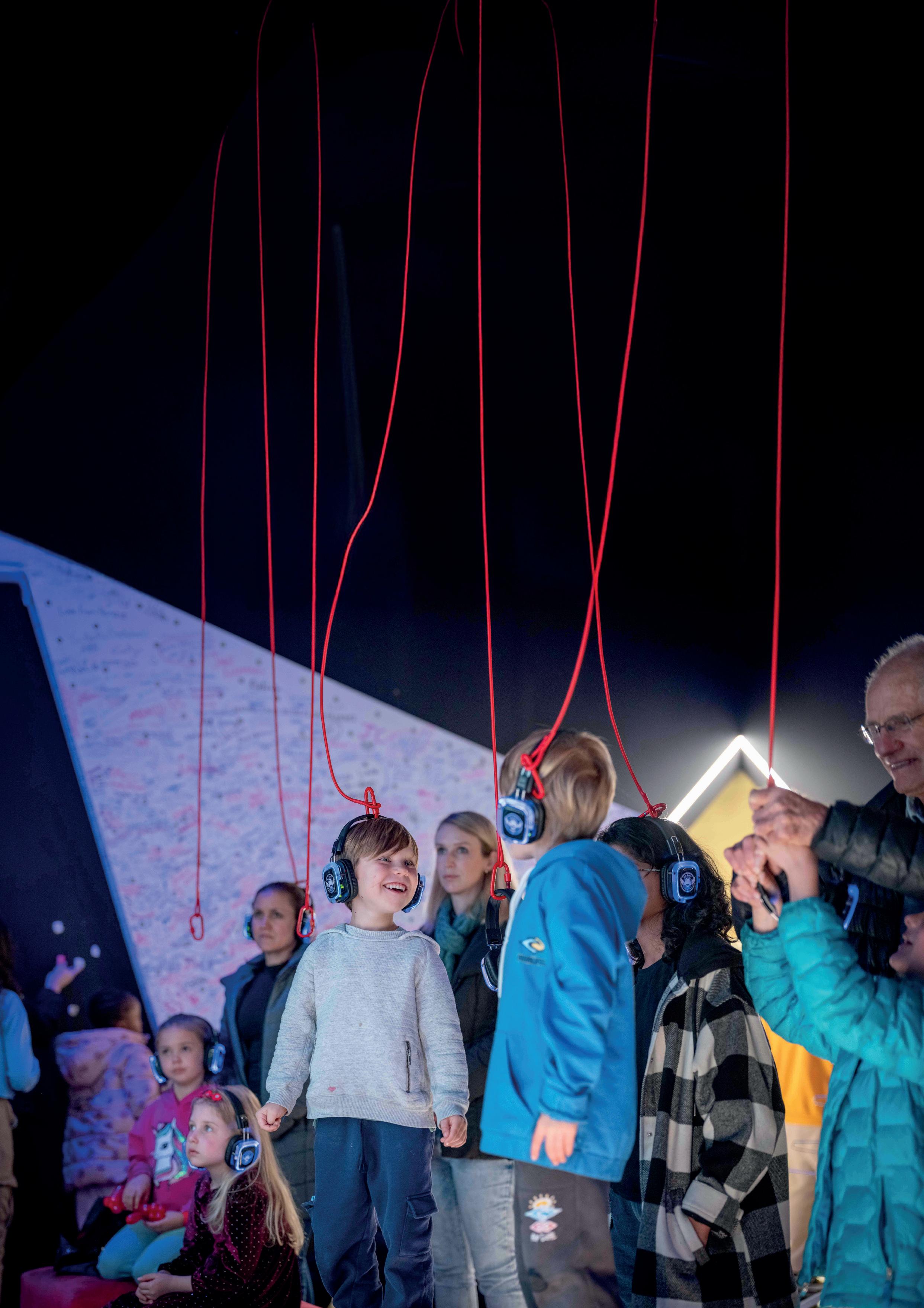
SKAO pavilion in Cape Town CTICC, IAU GA 2024.
The SKAO at the IAU-GA 2024: celebrating science, culture, and collaboration
The 32nd IAU-GA was held in Cape Town, South Africa, from 6 to 15 August 2024, marking the first time the event took place on African soil.
The IAU-GA provided an unparalleled platform for the Observatory to showcase its progress and values, offer a look ahead and engage with the global astronomical community.
As a platinum sponsor, the SKAO hosted an immersive pavilion that attracted over 3,000 visitors, including school children, government officials, diplomats and VIPs. Highlights included an all-female science
session with 18 speakers, VIP visits to the SKA-Mid telescope site, the launch of the Indigenous astronomy exhibition ‘Cosmic Echoes’, and hands-on outreach projects like the SKAO Table Top Radio Telescope.
The pavilion’s builder, HOTT3D, received the best-of-the-year award from the Exhibition and Event Association of Southern Africa.
SKAO staff and partners delivered more than 35 talks and 15 posters and over 40 VIPs from the astronomy community participated in visits to the SKA-Mid/ MeerKAT telescope site, further enhancing collaboration and public engagement.

The SKAO table-top radio telescope (TTRT) - Education and Outreach at University of the Western Cape (UWC), 7th August.
highlights of the SKAO presence at the IAU GA
40+ VIPs from the worldwide astronomy community and influential members of the media participated in two site visits to the SKA-Mid/MeerKAT telescope, organised in collaboration with SARAO.
In addition to hundreds of school children, South African minister of science, technology and innovation and a number of senior officials including ambassadors and other diplomats visited the SKAO pavilion.
Over 3,000 visitors to the SKAO pavilion across the two-week event.
HOTT3D, the company contracted to build the pavilion, won the best-of-the-year trophy at the Exhibition and Event Association of Southern Africa.
150+ attendees at the SKAO’s full-day session “SKA Observatory: exploring a universe of possibilities”, featuring an all-female speaker lineup of 18 women from the SKAO and partner organisations.
Over 35 talks and 15 posters delivered by members of the SKAO community (including SKAO staff members) about SKAO-relevant science during the conference.
Key
SKAO website
The SKAO website holds a library of case studies highlighting the impact of the Observatory and its partners globally. This grew significantly in 2024, more than doubling the number to 19 examples of local and regional impact across 10 of the member and partner countries. This included articles on employment opportunities for local and Indigenous people at both SKA telescope sites, and case studies on the cutting-edge technology being developed across member countries as part of SKA construction.
Contact magazine
Contact is the SKAO’s flagship publication, bringing together updates from project partners for a wide audience of stakeholders including the general public. In 2024 two issues were published, including a special edition focused on the IAU-GA in Cape Town in August. Together, these issues comprised 54 articles totalling more than 35,000 words written by the SKAO Communications team and
dozens of contributors, highlighting construction progress, pathfinder science, technological innovations, outreach activities, sustainability efforts and other news across the project’s 16 participating countries. These issues, sent to a mailing list of 2,200 subscribers and promoted across SKAO and partner communications channels, garnered more than 4,000 reads during the year, by people in 68 countries.
Social media
The Communications team manages 10 SKAO and IAU CPS social media channels, which continue to be an effective route to reach our many stakeholders. The SKAO saw significant follower increases on LinkedIn (+46%) and Instagram (+19%) in 2024, driven by content highlighting team successes and SKAO values. This included celebrating science and construction milestones, such as the first “big lift” of an SKA-Mid dish, and first test images from one SKA-Low station which were released during the IAU-GA and viewed 50,000 views across channels.
Despite a gradual decline in followers and engagement owing to changes on the platform, X continued to be the SKAO’s most-followed account, with major news seeing significant engagement. Many
stakeholders in SKAO partner countries continue to maintain an active presence; the Observatory is keeping its presence on the platform under review.
In support of the IAU CPS, the team created content explaining progress on the international stage and shared resources for the community, such as the centre’s first recommendations paper, a post seen more than 16,000 times on X.
The team also continued to amplify partners’ news on contracts being awarded, pathfinder science results and national SKA days, and ensured accessibility remained a top priority, with social media videos featuring subtitles, and images having descriptive text in accordance with the SKAO’s EDI commitments.
Media relations
The SKAO and its telescopes featured in more than 5,500 articles in 2024, with the majority of the coverage coming from news outlets based in SKAO partner countries, plus around a quarter in the United States.
The communications effort around the IAU-GA, which included SKAO and IAU CPS media briefings, site visits for journalists, and the release of SKA-Low’s first test image, led to a significant impact in the media globally, with over 150 mentions
of the SKAO in the context of the event in national and international media across the month of August, and a potential reach of more than 66 million people.
The SKAO pavilion displayed at the IAU-GA was also used as a backdrop throughout the conference by a number of broadcasters, including for the South African national broadcaster SABC’s interview with the Minister of Science, Technology and Innovation Dr Blade Nzimande.
Internal communications
12 talks connected a total audience of around 650 people from across the SKA community with key contacts; fostering collaboration
During 2024, the SKAO issued 10 editions of our Pulse internal newsletter, which included a total of 207 articles contributed from teams across the Observatory.
The SKAO’s Speaker Series continued, with 12 talks connecting a total audience of around 650 people from across the SKA community with key contacts, fostering collaboration with other institutions, businesses and observatories.
These hybrid (in-person and video) seminars comprise a 45-minute talk about science or a science-adjacent topic with time for questions and aim to inform SKAO personnel about related fields and drive knowledge sharing and best practice.
OUR GOVERNANCE
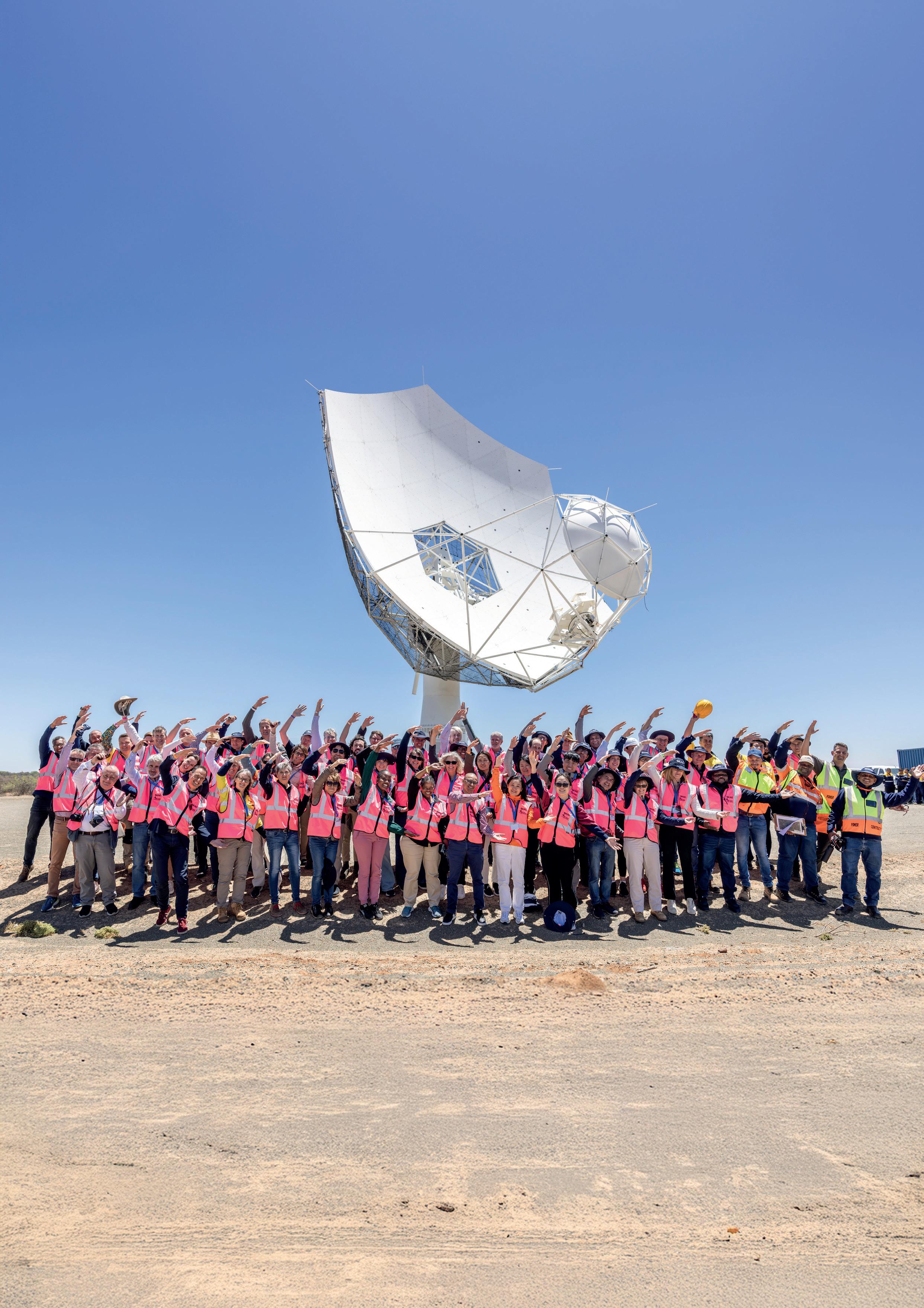
SKAO council visit to the SKA-Mid telescope site on 5 November 2024 and to the Early Childhood Development Centre.
SKAO Council
Chairperson: Dr Catherine Cesarsky
Vice-Chairperson: Mr Daan du Toit
Council Representatives
Australia
Canada
China
Germany
India
Italy
Netherlands
Portugal
South Africa
Spain
Switzerland
United Kingdom
Ms Janine Richards (to 11 August 2024)
Mr Anthony McGregor (from 12 August 2024)
Dr Douglas Bock
Dr Luc Simard
Dr Michael Rupen
Prof. Zhao Jing
Ms Wang Rongfang (to 4 June 2024)
Ms Wang Xiao (from 5 June 2024)
Mr Patrick Hartmann
Prof. Michael Kramer
Mr Sunil Ganju
Prof. Yashwant Gupta
Prof. Marco Tavani (to 3 July 2024)
Prof. Roberto Ragazzoni (from 4 July 2024)
Ms Judith Vermeer
Prof. Jessica Dempsey
Mr Ricardo Conde
Mr Luis Serina
Mr Daan du Toit
Ms Pontsho Maruping
Ms Inmaculada Figueroa Rojas
Dr Rafael Bachiller (to 4 November 2024)
Dr Lourdes Verdes-Montenegro (from 5 November 2024)
Dr Simon Berger
Prof. Jean-Paul Kneib
Ms Felicity Howe
Prof. Mark Thomson
Council Observer Representatives
France Dr Guy Perrin
Dr Chiara Ferrari
Japan
South Korea
Prof. Hideyuki Kobayashi (to 2 March 2024)
Dr Takuya Akahori (from 3 March 2024)
Prof. Dr Bong Won Sohn
Dr Hyunwoo Kang
Sweden Dr Mathias Hamberg
Prof. Lars Börjesson
The Council, which serves as the main governing authority of the SKAO, functions under the guidelines set out in the SKAO Convention. It is responsible for guiding the organisation’s strategic and scientific direction, ensuring effective governance, and overseeing the achievement of the SKAO’s objectives.
Meetings are attended by designated representatives of each member, and observers from non-members including parties that have cooperation agreements or arrangements with the SKAO.
The director-general and other SKAO staff also routinely attend. In 2024, the Council had three meetings in which it received
updates from the SKAO executive on construction and operation activities, the continuing growth of operations teams in the telescope host countries, and membership and cooperation agreements. The Council also met on several occasions in Committee of Council mode, a format that allows for informal discussion and is only attended by member representatives and SKAO leaders.
The Council is supported by two subcommittees, the Science and Engineering Advisory Committee (SEAC) and the Finance Committee (FC), which are described below. The three Council meetings held in 2024 addressed several issues and topics, including the following.
March 2024 (Nanjing, China):
◗ Approval of the SKAO-NCRA Cooperation Arrangement extension
◗ Approval of the Observatory objectives for 2024
◗ Approval of the Indexation Policy (Rev. 2), the Indexation Funding Gap Payment Schedules for 2022 and 2023, and an external audit plan for the year ending 31 December 2024
◗ Approval of a further year term for Prof. McClure-Griffiths, in her role as SEAC Chairperson.
July 2024 (SKAO HQ, UK):
◗ Discussion of the SKAO’s financial position and agreement on measures to mitigate external financial risk to enable the successful completion of the Council-approved construction programme
◗ Approval of the establishment of a Funding Working Group to consider SKAO’s funding beyond 2030
◗ Approval of the Financial Statements 2023, the Construction and Operations Funding Schedule (COFS) (Rev. 4) incorporating Canada’s contributions following the completion of its accession and a contribution towards the Netherland’s Additional Funding commitment
◗ Approval of the Indexation Policy (Rev. 3) and the 2023 SKAO Annual Report.
October 2024 (Kimberley, South Africa):
◗ Council visited the SKA-Mid construction site and surrounding activities;
◗ Approval of the extension to the SKAOChalmers University of Technology Cooperation Arrangement
◗ Approval of the appointments of Dr Zerbi and Ms Figeroa as Chairperson and Vice-Chairperson of the SKAO for their first term from 3 February 2025 to 31 December 2026
◗ Approval of the director-general job description and person specification;
◗ Approval of the Indexation Policy (Rev. 4), Indexation Funding Gap Payment Schedule 2022 (Rev. 2) Indexation Funding Gap Payment Schedule 2024
◗ Approval of the budget and payment schedule for 2025, and the COFS (Rev. 5), incorporating India and Germany’s commitments as members of the SKAO, an update to the Netherlands’ contributions towards the Additional Funding Request, and €3m towards Italy’s Additional Funding contribution
◗ Approval of the governance changes to streamline the subcommittee reporting starting in 2025, by disbanding the Administration Subcommittee, and combining the remits of the In-Kind Review Subcommittee and Tender Subcommittee into a Procurement Subcommittee.
Science and Engineering Advisory Committee (SEAC)
Chairperson: Prof. Naomi McClure-Griffiths
Vice-Chairperson: Prof. Kristine Spekkenst
SEAC Representatives
Australia
Canada
Prof. Naomi McClure-Griffiths
Prof. Kristine Spekkens
China Dr Zheng Qian (to 8 July 2024)
Prof. Di Li (from 9 July 2024)
India
Prof. Uday Shankar
Italy Dr Gianfranco Brunetti
Netherlands Dr Wim van Cappellen
Portugal Dr Marta Gonçalves
South Africa
Mr Francois Kapp (to 8 July 2024)
Mr Tyrone van Balla (from 9 July 2024)
Spain Dr Antxon Alberdi
Switzerland
Prof. André Csillaghy
United Kingdom Dr Laura Wolz
SEAC Representatives of Observer Countries and SEAC At-Large Representatives
France Dr Ng-Guiheneuf, Cherry
Sweden Prof. Garrelt Mellema
At Large
At Large
At Large
At Large
At Large
At Large
At Large
Mr Brian Glendenning
Dr Dale Frail
Dr Andreas Kaufer (to 8 July 2024)
Prof. Simon Garrington (from 9 July 2024)
Dr Adrian Russell
Dr Gillian Wright
Dr Elizabeth Humphreys (from 6 November 2024)
Science and Engineering Advisory Committee (SEAC) representatives offer expert advice to the Council and directorgeneral on matters related to construction, technology and engineering within the project. They assess developments reported in the Construction Monthly Report and serve in an individual capacity, providing independent expertise rather than representing the positions of any member organisations.
Membership of the SEAC comprises experts nominated by members and observers, and several “at large” experts appointed, independent of those considerations, as broader experts nominated by the director-general.
At every meeting, the SEAC receives a comprehensive project update from Observatory staff to contextualise their discussions. This update includes information on science activities, construction progress, operational developments, and design updates for each telescope.
◗ SEAC often receives “charges” from the Observatory and/or Council to consider specific issues and points.
◗ In September 2024 the SEAC met in Perth which included a site visit to SKALow at Inyarrimanha Ilgari Bundara, the CSIRO Murchison Radio-astronomy Observatory, and consultations with SKA-Low staff.
◗ SEAC met three times during 2024, with key areas for discussion including:
– The conclusions of the 2024 Annual Programme Review
– The steps towards planning and execution of the SKAO Regional Centre Network (SRCNet)
– Programme technical risks
– The “Year in the Life” project, which supports modelling and planning for Operations, and the development of systems;
– The plans for the MeerKAT integration
– The Observatory Data Products, the scientific performance of AA*, and software demonstrations to show the status of the data capture, calibration and data pipelines.
Finance Committee
Chairperson: Mr Bishen Singh – National Science Foundation (NRF), South Africa
Vice-Chairperson: Ms Ana Reis – Fundação para a Ciência e a Tecnologia (FCT), Portugal
Finance Committee Representatives
Australia
Canada
China
Germany
India
Italy
Netherlands
Portugal
South Africa
Spain
Switzerland
United Kingdom
Ms Shanan Gillies (to 24 June 2024)
Ms Natalie Weddell (from 25 June 2024)
Mr Morrick Vincent
Ms Sun Xiaoyun
Ms Julia Rucha
Mr Arjit Sagar
Mr Vincenzo Lozito
Mr Jeroen Arts
Ms Ana Reis
Mr Shawn Basson
Ms Esther Martín Malagón
Dr Francesca Stocker
Mr Christopher Wrench (to 18 February 2024)
Ms Sarah Chambers (from 19 February 2024)
FC Observer Representatives
France Ms Stéphanie Lê Vàn
Japan Prof. Hideyuki Kobayashi (to 2 March 2024)
Dr Takuya Akahori (from 3 March 2024)
South Korea Prof. Bong Won Sohn
Sweden –
The Finance Committee (FC) is responsible for monitoring the Observatory’s financial governance, ensuring transparency, efficiency, and accountability. It provides guidance to the Council on financial and procurement issues across the Observatory’s operations. The Committee includes representatives nominated by member countries, with non-member observers also participating in its meetings.
During each meeting, the FC receives financial management accounts, a risk report and a project update as background information for its discussions. Additionally, subcommittees report on actions they have taken, contributing to a comprehensive view of the SKAO’s financial position and ongoing initiatives. Three meetings took place in 2024, plus a workshop to discuss the governance needs for topics delegated to the subcommittees.
The Committee discussed and made recommendations to the Council on a range of matters, including:
◗ Advice on budgetary and financial planning matters regarding the funding and payment schedules, as required by the Finance Committee’s Terms of Reference
◗ Review and recommendations for the external audit plan (year to 31 December 2023) for approval by the Council and review of the internal audit plan;
◗ Detailed technical work on methodologies for contribution to indexation;
◗ Regular advice on risk management for the Council by the Observatory leadership;
◗ Review and recommendation on Finance Committee governance;
◗ Review of in-kind valuation accounting.
Subcommittees
The Finance Committee is assisted by three subcommittees responsible for reviewing, advising, and recommending actions to the Council within their specific mandates. Members appoint a representative to each subcommittee; observers may also nominate a representative. These subcommittees operate under delegated oversight authority granted by the Finance Committee, as outlined below.
Administration Subcommittee (AS)
The Administration Subcommittee (AS) is responsible for administration management, including reviewing staff remuneration and amendments to SKAO staff regulations. The Administration Subcommittee met once in 2024 to consider the staff cost budget for 2025, as well as a data protection update.
AS Representatives
Australia
Canada
China
Ms Bridgette Hargreave (to 14 August 2024) Chairperson
Mr Jason Finley (from 15 August 2024)
Dr Michael Rupen (from 14 April 2024)
Ms Jie Yang
India –
Italy
Netherlands
Portugal
South Africa
Spain
Switzerland
United Kingdom
Mr Marco Guerrieri
Mr Jeroen Arts
Ms Carolina Rêgo Costa
Mr Shawn Basson
Ms Esther Martín Malagón
Dr Francesca Stocker
Ms Vikki Gledhill
AS Observer Representatives
Australia
Ms Bridgette Hargreave (to 14 August 2024) Chairperson
In-Kind Review Subcommittee (IKRS)
In-kind contributions to the SKAO, such as providing staff for projects, are non-financial; the In-Kind Review Subcommittee (IKRS) reviews and endorses the award of such contributions and approves cost book values on behalf of the Finance Committee. The IKRS met twice in 2024 and considered two contracts.
IKRS Representatives
Australia Mr Jason Finley
Canada Dr Michael Rupen
China
Germany
India
Italy
Ms Liu Shuang (to 1 December 2024)
Ms LI Shanshan (from 2 December 2024)
Ms Viola Tegethoff
Dr J K Solanki (from 28 November 2024)
Dr Andrea Argan
Netherlands Dr Michiel van Haarlem (to 3 September 2024)
Mr Pieter Benthem (from 4 September 2024)
Portugal
South Africa
Mr Luis Serina
Dr Adrian Tiplady (Chairperson)
Spain Dr Javier Echavarri
Switzerland Dr Francesca Stocker
United Kingdom
Mr George Madden
IKRS Observer Representatives
Germany
Japan
Prof. Dr Jochen Weller
Prof. Hideyuki Kobayashi (to 2 March 2024)
Dr Takuya Akahori (from 3 March 2024)
Tender Subcommittee (TS)
The Tender Subcommittee (TS) reviews and endorses competitive contract award recommendations above €500k and single or sole-source contract award recommendations above €250k for final approval by the director-general. It also oversees the administration of the fair work return formula and ensures it is correctly applied in all tender evaluations. The TS met 10 times in 2024 and considered 17 tender awards.
TS Representatives
Australia
Canada
China
Germany
India
Italy
Netherlands
Portugal
South Africa
Spain
Switzerland
United Kingdom
Ms Caroline Quan (to 24 June 2024)
Mr Jason Finley (from 25 June 2024)
Dr Michael Rupen
Ms Lu Yu
Prof. Dr Jochen Weller (to 11 November 2024)
Ms Viola Tegethoff (from 12 November 2024)
Ms Arjit Sagar (to 27 November 2024)
Dr J K Solanki (from 28 November 2024)
Dr Corrado Perna
Dr Michiel van Haarlem (to 3 September 2024)
Mr Pieter Benthem (from 4 September 2024)
Dr Luis Serina
Mr Shawn Basson
Mr Javier Echávarri Delmás
Dr Simon Berger
Ms Justine Mannino (Chairperson)
TS Observer Representatives
Japan
South Korea
Prof. Hideyuki Kobayashi (to 2 March 2024)
Dr Takuya Akahori (from 3 March 2024)
Prof. Bong Won Sohn
GLOSSARY
AAs Array Assemblies
AA0.5 Array Assembly
AAAS American Association for the Advancement of Science
AAVS3 Aperture Array Verification System 3
ABCs Agreements on Bilateral Collaboration
AfAS African Astronomical Society
AIV Assembly, Integration and Verification
AS Administration Subcommittee
AUD Australian Dollars
COFS Construction and Operations Funding Schedule
COPUOS United Nations Committee for the Peaceful Uses of Outer Space
CPS Central Power Station
CPF Central Processing Facility
CSIRO Commonwealth Scientific and Industrial Research Organisation
DAE Department of Atomic Energy
DDD Developer!Developer! Developer! Conference
DMP Disaster Management Plan
DoEL Department of Employment and Labour
EAS European Astronomical Society
EOC Engineering Operations Centre
ECPs Engineering Change Proposals
EDI Equality, Diversity and Inclusion
EVP Employee Value Proposition
FC Finance Committee
FCT Fundação para a Ciência e a Tecnologia
GBP British Pounds
GMRT Giant Metrewave Radio Telescope
HQ SKA Headquarters
HR Human Resources
HSE Health, Safety and Environment
HSSE Health, Safety, Security and Environment
IAU International Astronomical Union
IAU GA International Astronomical Union General Assembly
IEMP Integrated Environmental Management Plan
ICS Incident Command System
IGO Inter-Governmental Organisation
IKRS In-Kind Review Subcommittee
INAF National Institute for Astrophysics
ISO International Organisation for Standardisation
IT Information Technology
ITF Integration and Test Facility
ITU International Telecommunications Union
LOFAR Low Frequency Array
NCR National Research Council
NCRA Indian National Centre for Radio Astrophysics
NRF National Research Foundation
PI Planning Intervals
RFI Radio-Frequency Interference
RQZs Radio Quiet Zones
SALF Science at Low Frequencies
SARAO South African Radio Astronomy Observatory
SDCs Science Data Challenges
SDC3a Science Data Challenge 3a
SDC3b Science Data Challenge 3b
SDGs United Nations Sustainable Development Goals
SDP Science Data Processor
SEAC Science and Engineering Advisory Committee
SKA Square Kilometre Array
SKA-Mid Square Kilometre Array Mid
SKA-Low Square Kilometre Array Low
SKAO SKA Observatory
SMEs Small and medium enterprises
SOC Science Operations Centre
SRC SKA Regional Centre
SRCNet SKA Regional Centre network
SSG Sustainability Steering Group
STEM Science, Technology, Engineering, and Mathematics
SWGs Science Working Groups
TAFE Technical and Further Education institute
TTRT Table-Top Radio Telescope
TS Tender Subcommittee
UK The United Kingdom
US The United States
URSI International Radioscience Union
UNCOPUOS United Nations Committee on the Peaceful Uses of Outer Space
ZAR South African Rand
WA Western Australia

